
11 November 2024
Sacred Spots, Local Food, and Enhanced Beauty ♪ Take a Trip to Kakunodate and Lake Tazawa, Visiting a Samurai Residence Street Brimming with Historical Romance
On this trip, hotel staff will guide you on a detailed tour of Kakunodate and Lake Tazawa. Enjoy gourmet food and shopping at the Wanoi Inn, which opened in 2020, or Hotel Folklolo Kakunodate, which is located in front of the station. Enjoy the olden day atmosphere at the samurai residences and storehouses. Visit the brewery of superior sake brand “Hideyoshi” and visit a sacred spot by Lake Tazawa thought to enhance your beauty.
Table of Contents
Tatsuko Statue
The deepest and most mysterious lake in Japan, where a legendary beauty, Princess Tatsuko, is said to reside
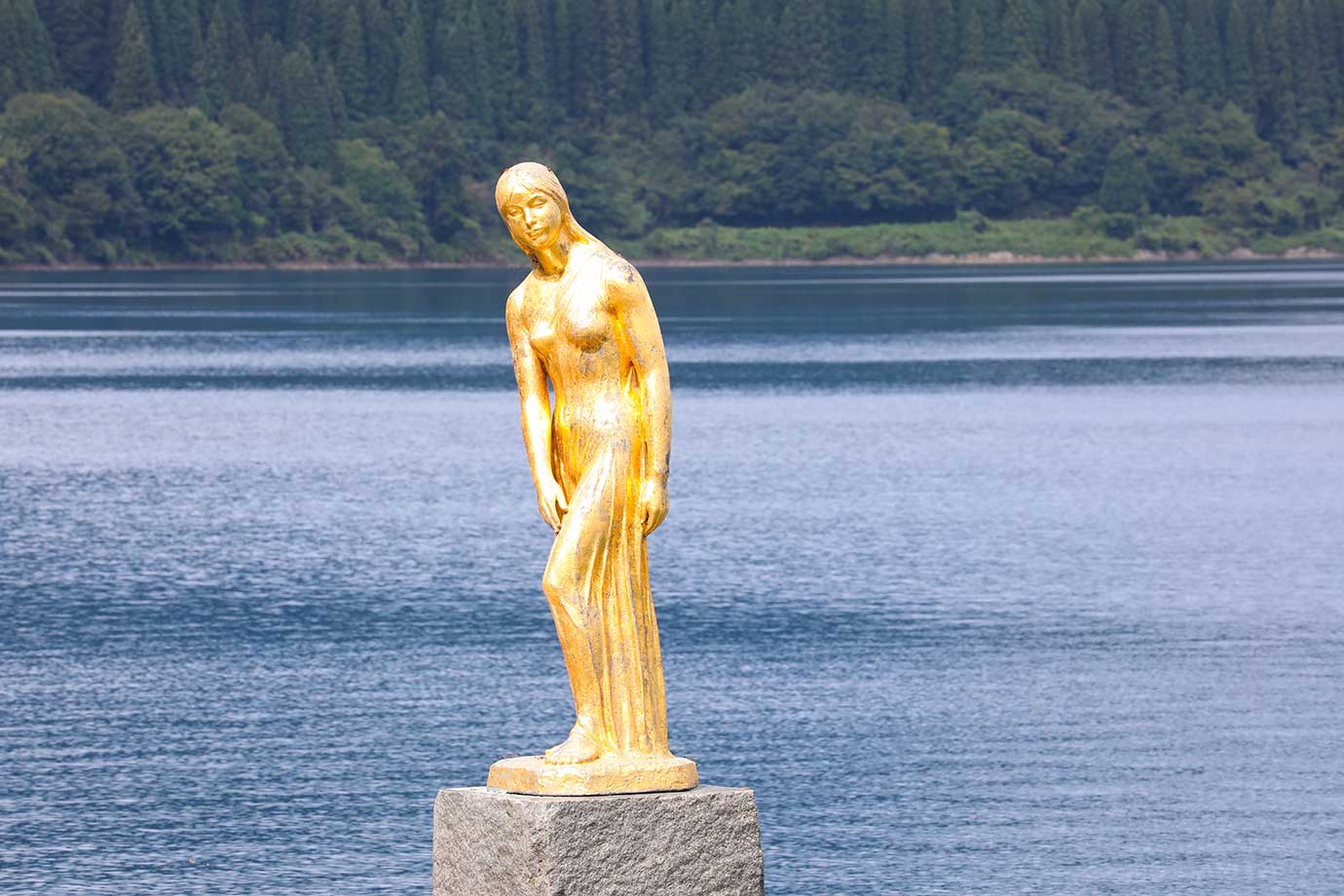
Lake Tazawa, a 30-minute drive from Kakunodate, boasts cobalt blue water, with a circumference of about 20 km and a depth of 423.4 m, making it the deepest lake in Japan and the most scenic spot in Akita Prefecture. The dazzling golden “Tatsuko Statue” stands on the shore of the lake.
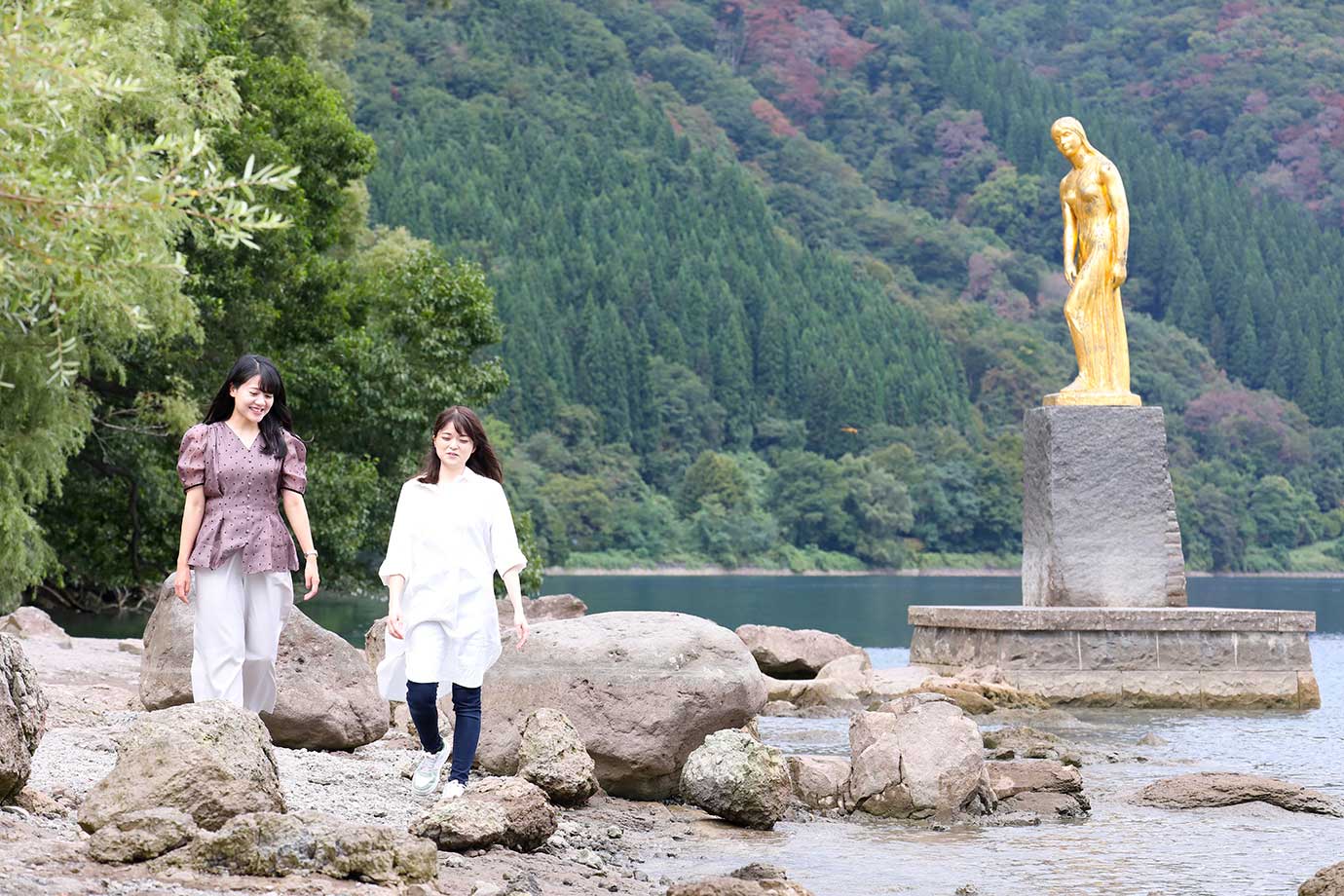
The motif for the “Tatsuko Statue” is the legend of Princess Tatsuko of Lake Tazawa. Once, there was said to be a beautiful daughter named Tatsuko who lived in the area. Tatsuko made a hundred-day and hundred-night wish to Okura Kannon for eternal beauty, and when she drank spring water as the god told her to, she turned into a great dragon. As a dragon, it is said that Tatsuko became the ruler of Lake Tazawa and sank deep into the bottom of the lake.

Kansagu Shrine, located at Katajiri at the southwest of the lake, is also called “Ukiki Shrine” because it enshrines a floating tree that drifted down to the shore.
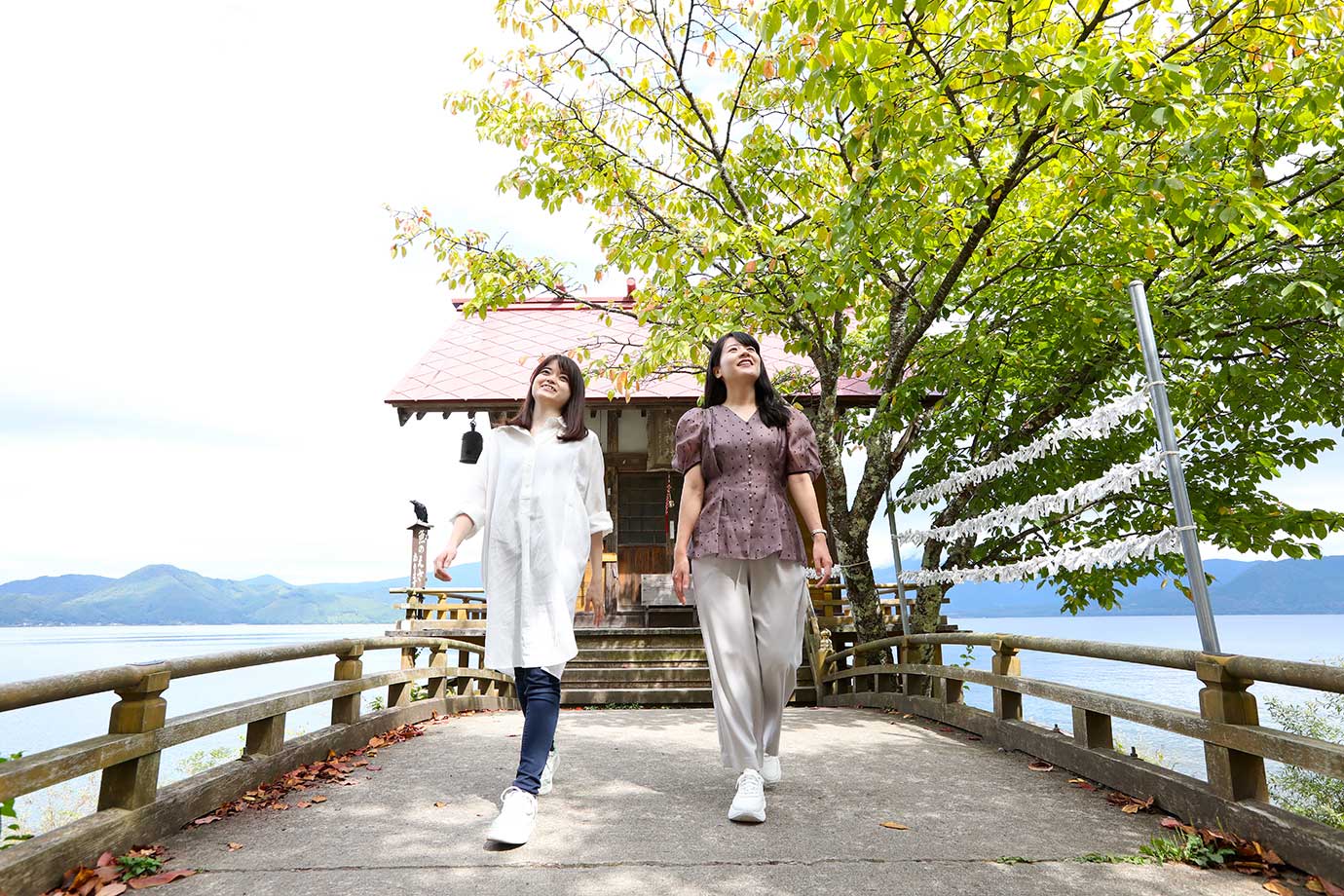
Hachirotaro, the dragon god of Hachirogata, Akita Prefecture, is said to visit Lake Tazawa every autumn to spend the winter months with Princess Tatsuko. This is why Lake Tazawa does not freeze during the bitterly cold winter months. In honor of this romantic legend, Ukiki Shrine is a popular matchmaking spot.
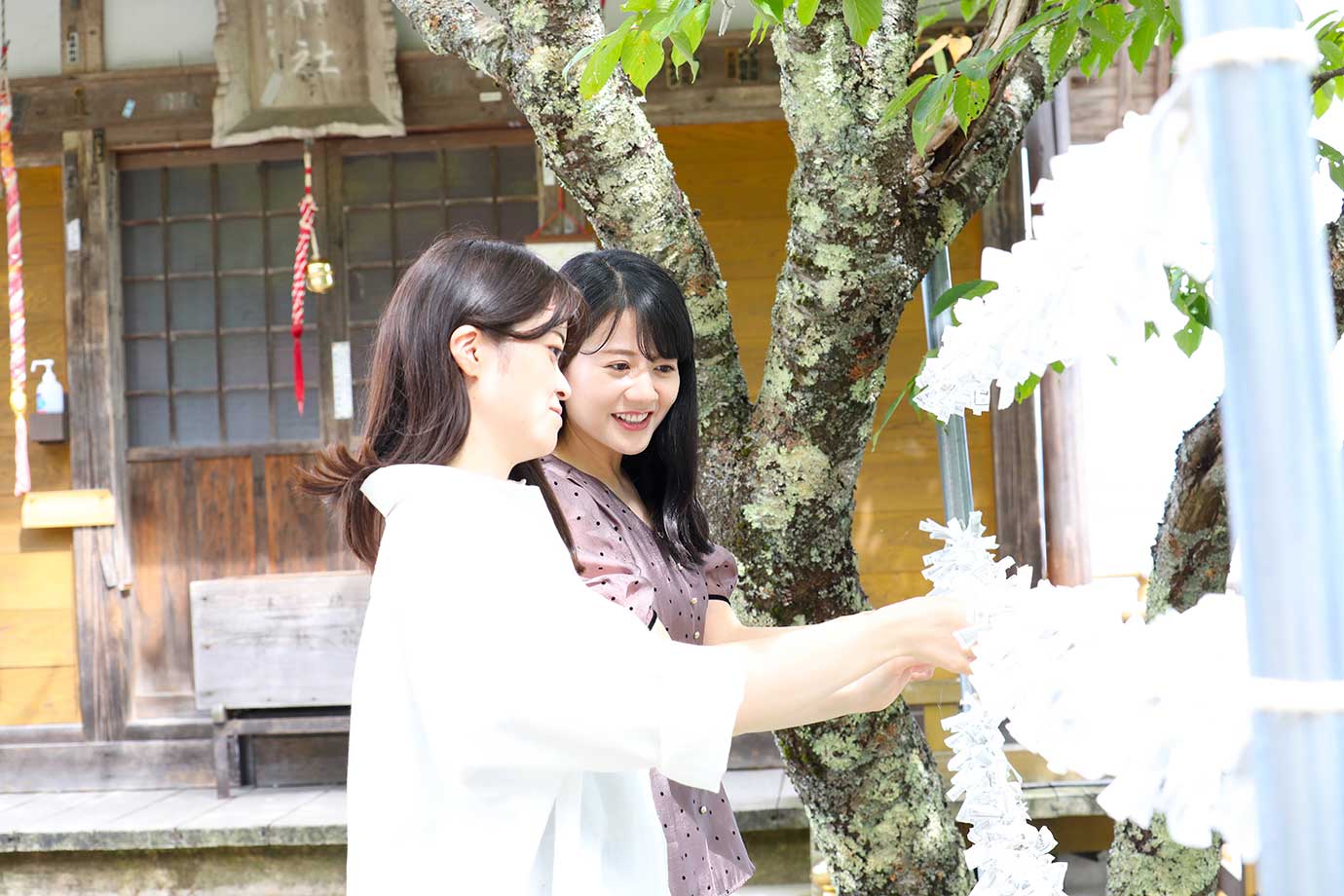
The small shrine offers good luck charms and omikuji. Why not visit to think about the magnificent legend of Princess Tatsuko and Hachirotaro and pray for a good match or romantic fulfillment.
Tatsuko Statue
Address:Katajiri, Saimyouji, Nishiki-cho, Semboku City, Akita Prefecture
Tel:0187-43-2111(Semboku City Tazawako Tourist Information Center “FOLAKE”)
Hours:Any time
Gozanoishi Shrine
Gozanoishi Shrine, a historic shrine by the lake, is where the legend of Princess Tatsuko was born.
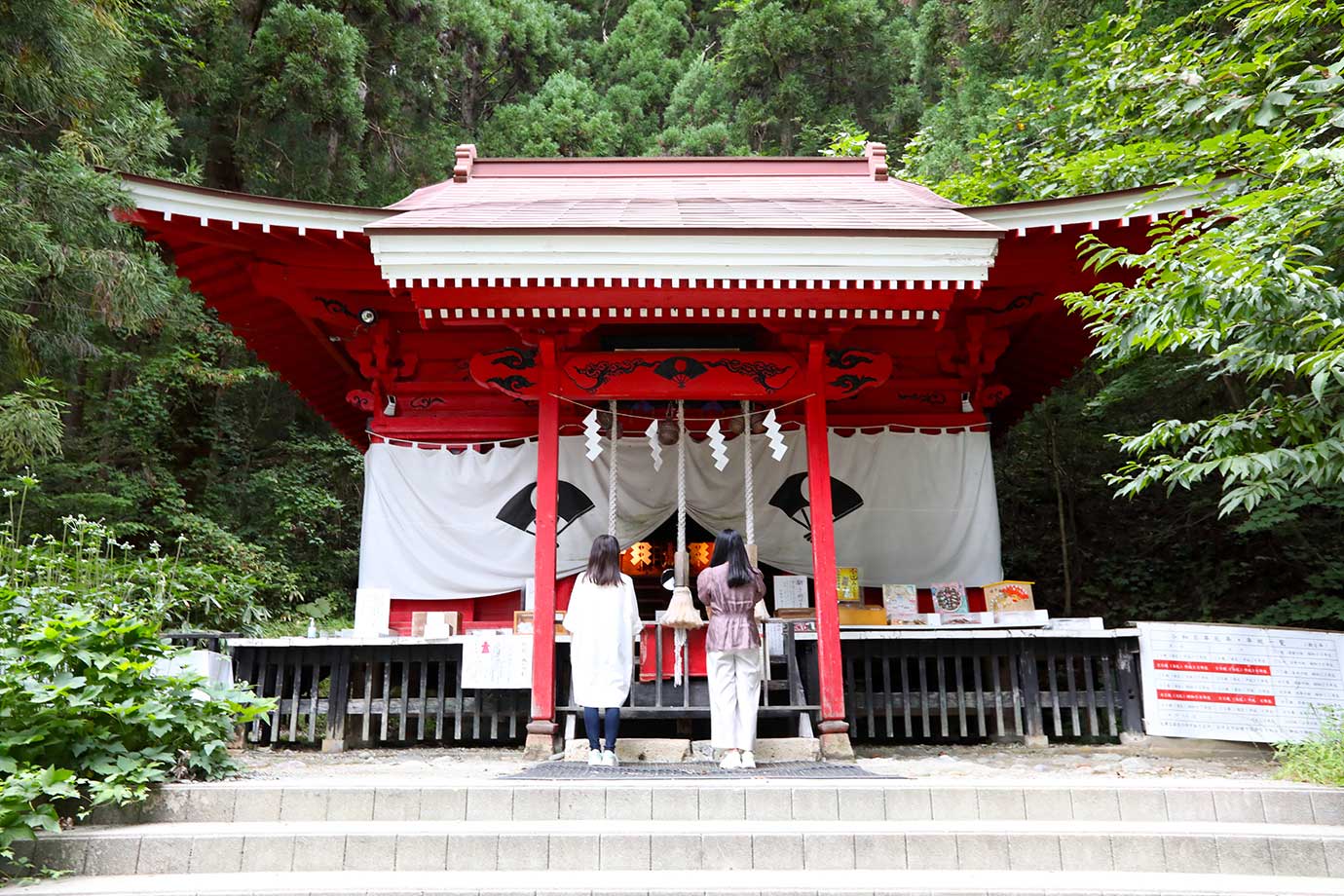
Drive along the lakeside driving route to Gozainoshi Shrine, which sits on the northern shore. The shrine is dedicated to Princess Tatsuko, ruler of Lake Tazawa, and is known for giving blessings for the fulfillment of beauty. In the vicinity, you can see the “Miraculous Spring of Katagashira” which Tatsuko drank to become a dragon, and the “Kagamiseki” (mirror rock) where Tatsuko is said to have caught sight of her own reflection.
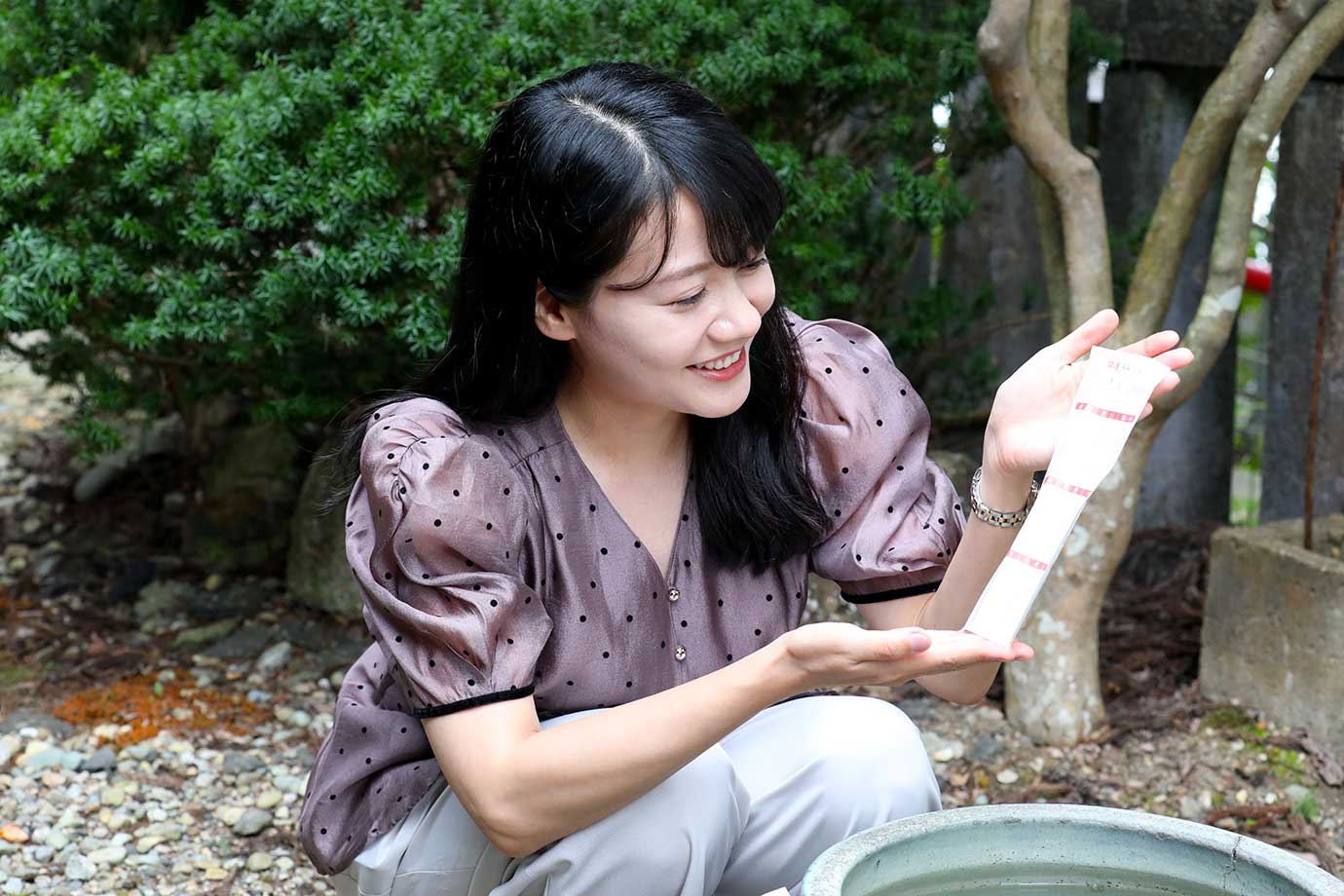
You can take a “water fortune-telling omikuji” in the precincts of the shrine. Dip the omikuji (200 yen “ceremony fee”) into the water, and words from the god will appear faintly in the “business”, “study” and “illness” sections.
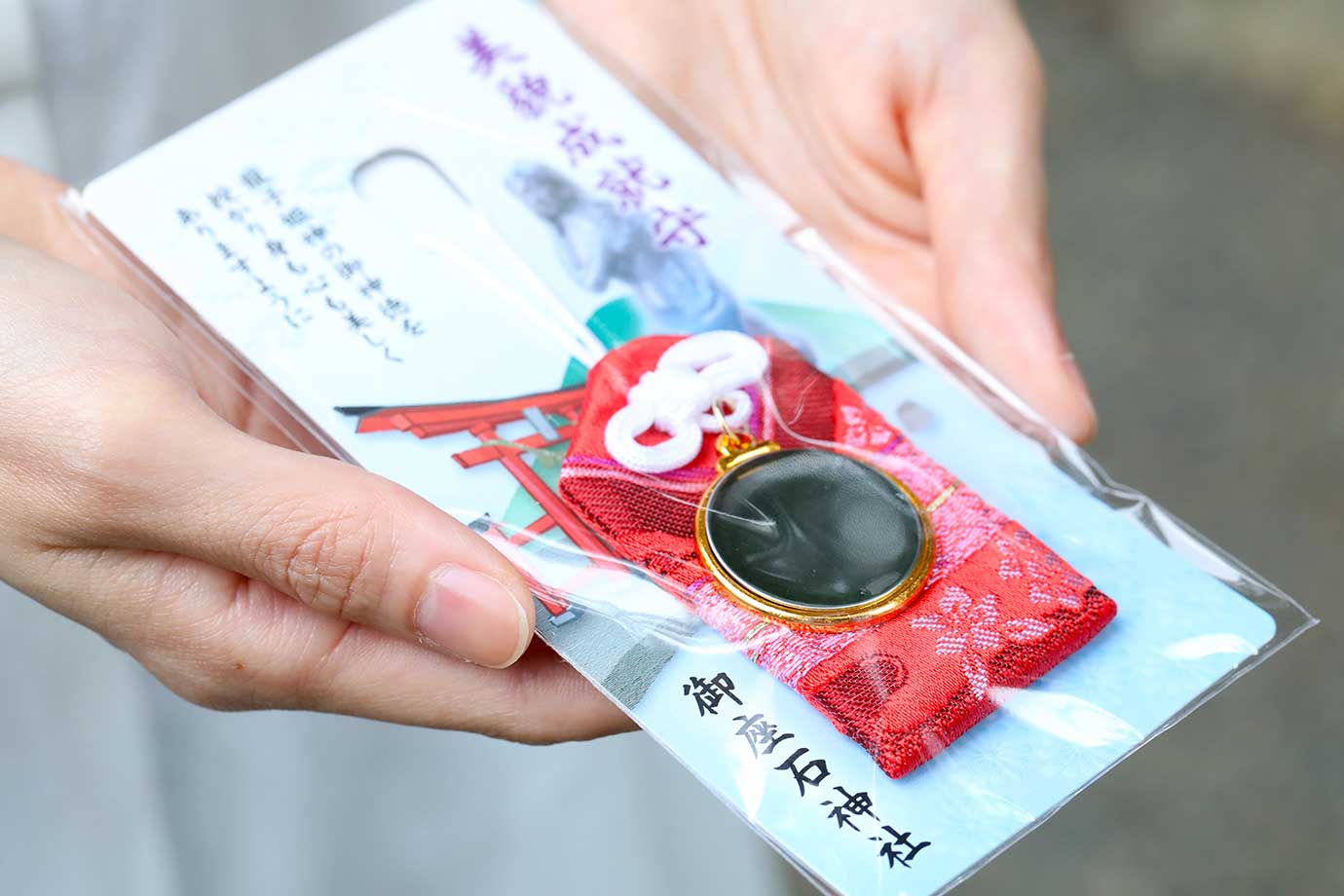
At the shrine office, we found a “Bibo Joju Mamori” (beauty fulfillment charm) with a small mirror for 1,000 yen. May the eternal beauty of Princess Tatsuko make you beautiful in body and soul....
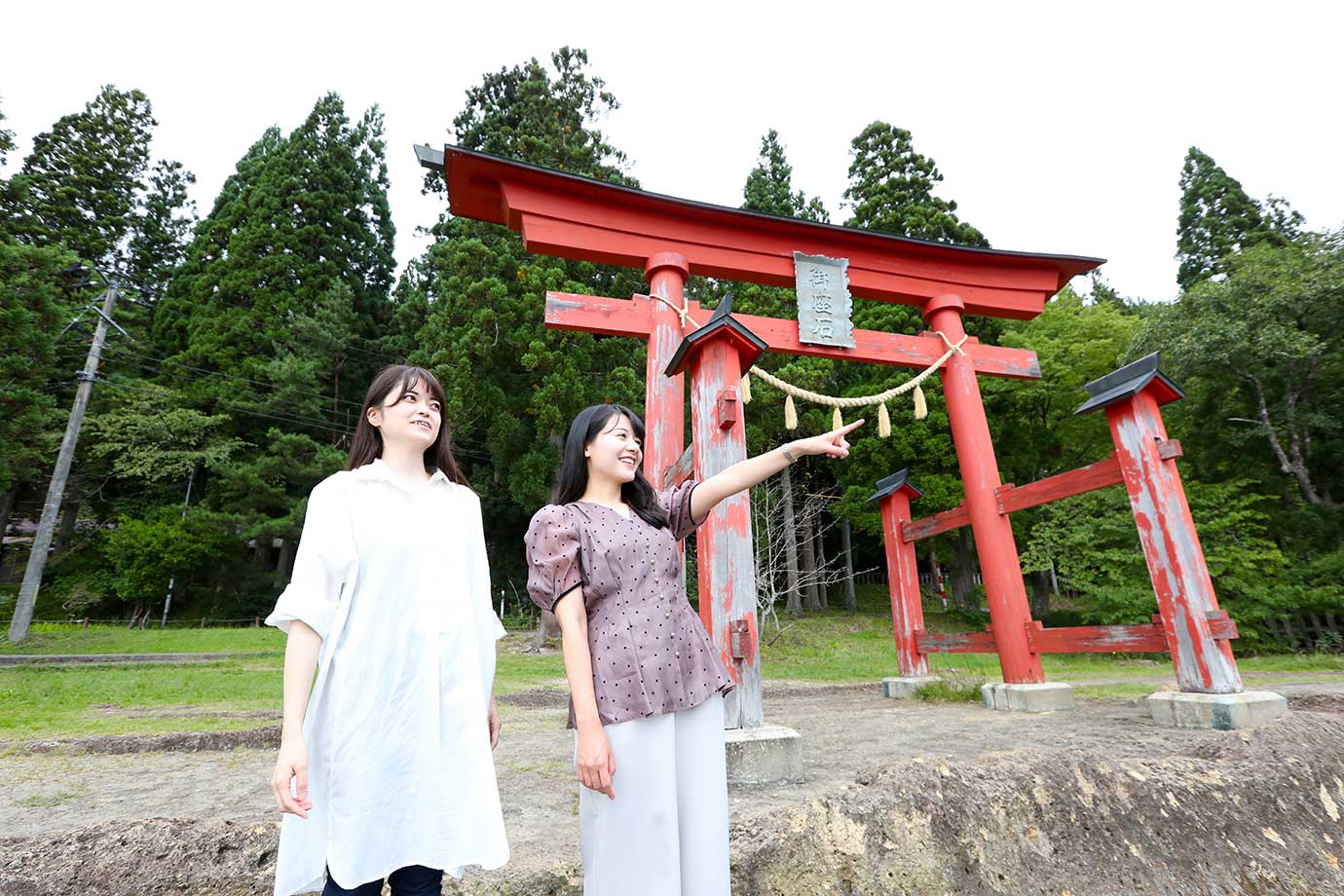
The red Otorii gate stands on the shore of the lake and is a popular photo spot. Gozanoishi means “sitting rock”. The shrine was named after a lord of the Akita Clan, who was said to have rested on a flat rock by the lake during a tour of Lake Tazawa. Surrounded by the sacred air of the waterside, you feel detoxified in both body and mind.
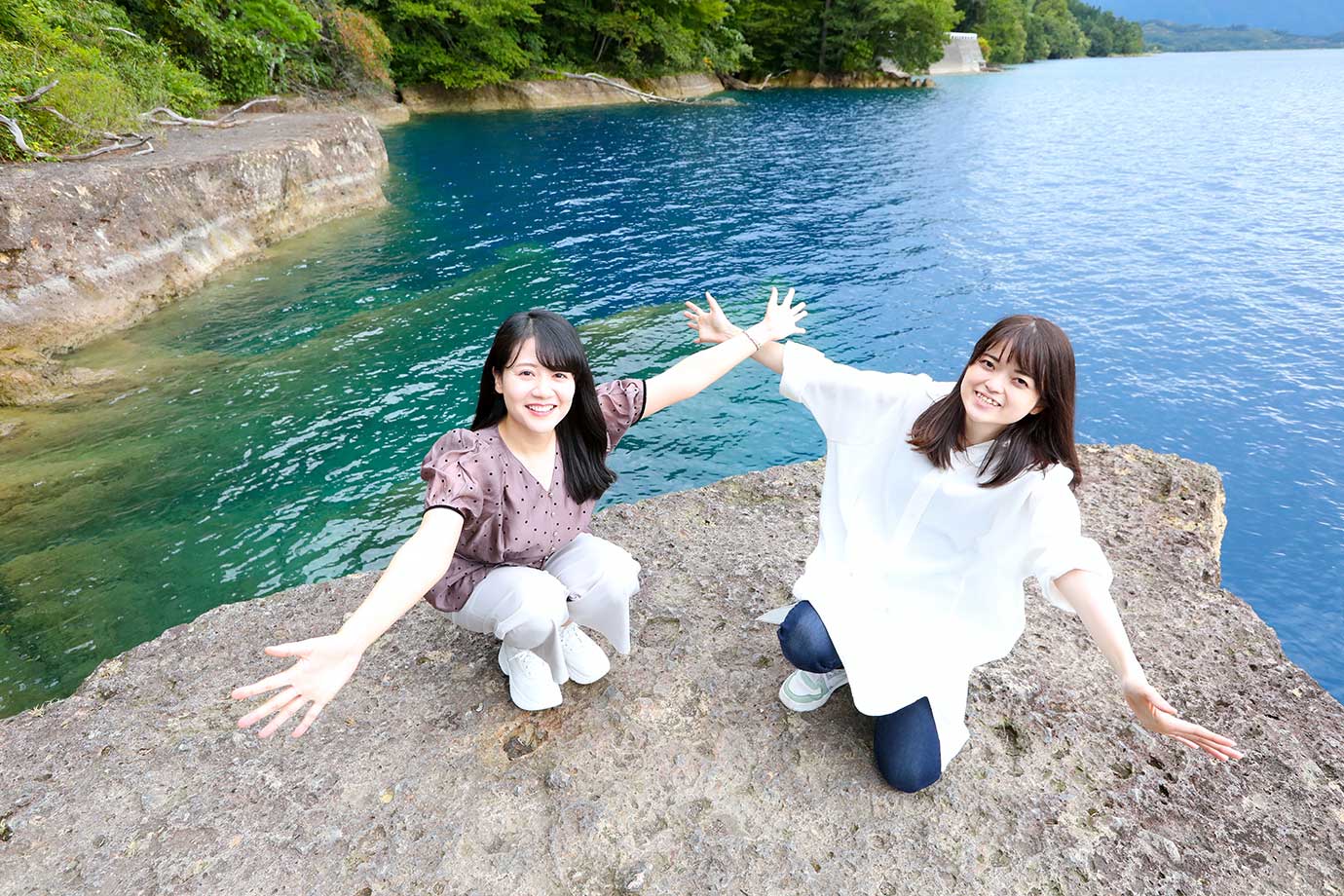
The water of Lake Tazawa changes color from cobalt blue to sapphire depending on the weather, and is so clear that you can almost see to the bottom of the lake.
Gozanoishi Shrine
Address:Ainai, Hinokinai, Nishiki-cho, Semboku City, Akita Prefecture
Phone:0187-48-2630
Hours:9:00-16:30 (during winter, the shrine office is open only from 10:00-15:00 on Saturdays, Sundays, and national holidays)
Tazawako Herb Garden - Heart Herb
Experience herbs and enjoy gourmet food surrounded by fresh aromas ♪
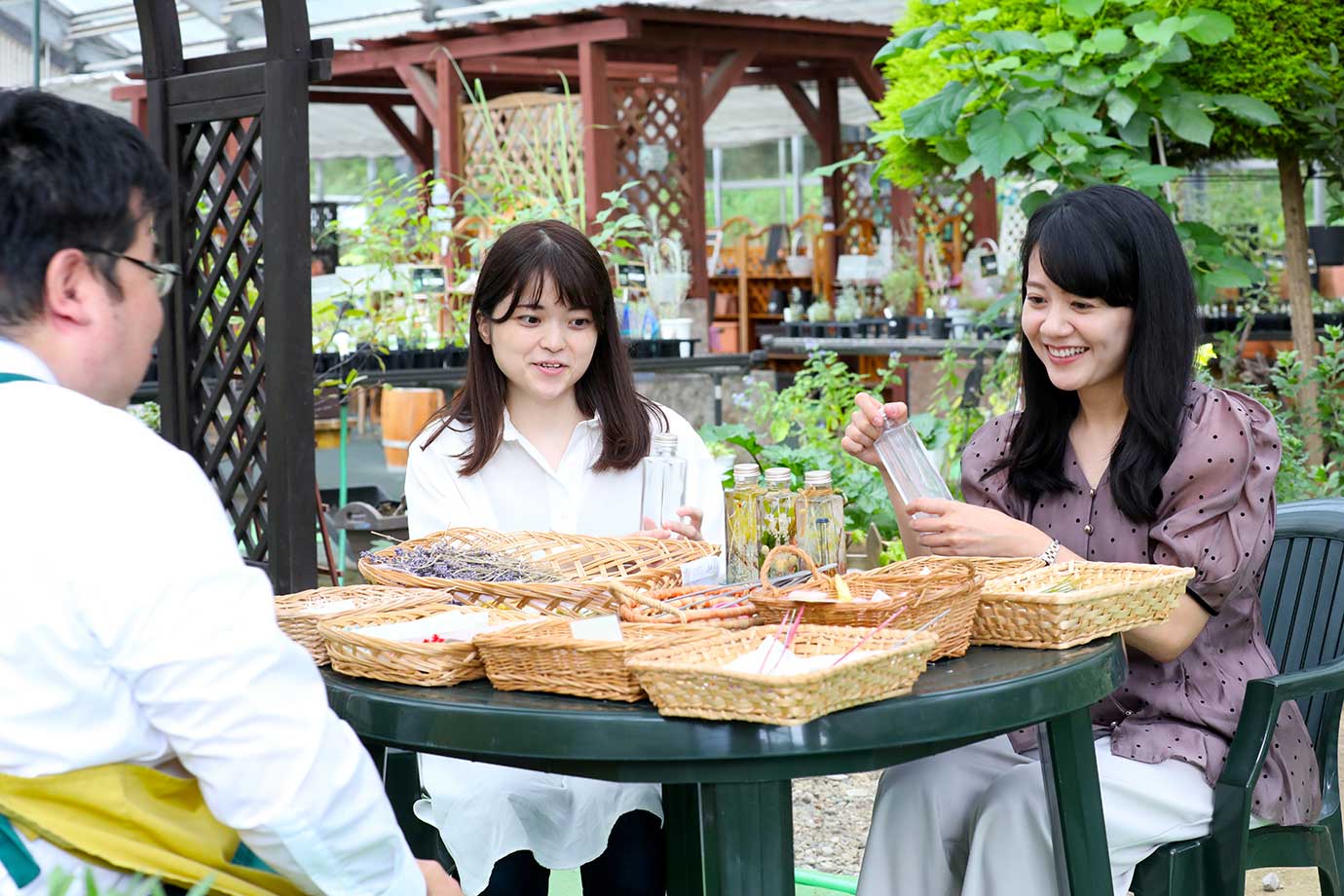
The herb garden spreads across Katamae on the northern shore of Lake Tazawa. With a garden where seasonal flowers and herbs grow, a store selling herb seedlings and gardening goods, and hands-on classes using herbs, this is a spot where you can enjoy herbs with all five senses.
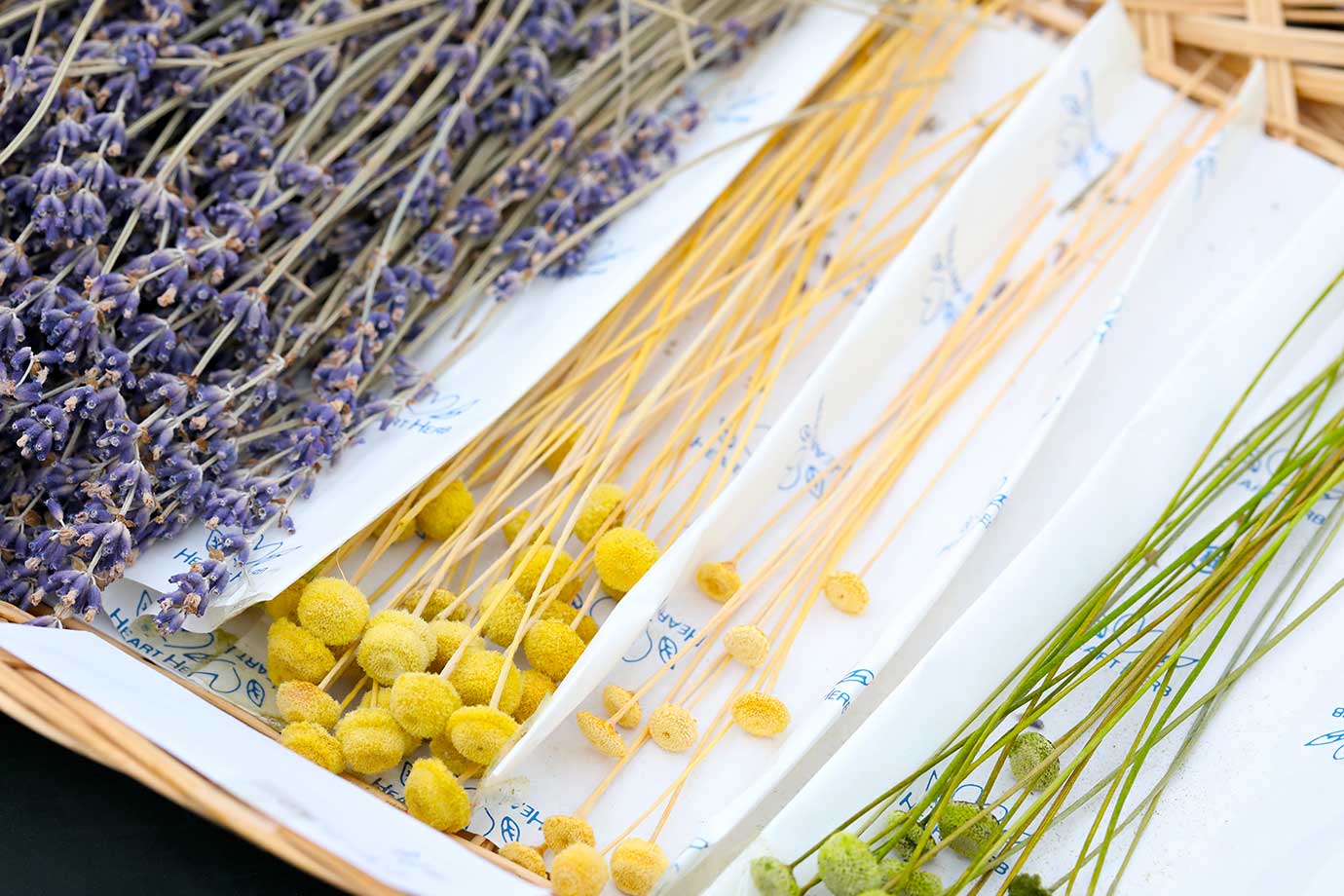
In one corner of the store, hands-on classes using herbs and aroma oils are held. The classes are entitled “Herbarium”, “Scented Restful Sleep Pillow” and “Room Freshener”.
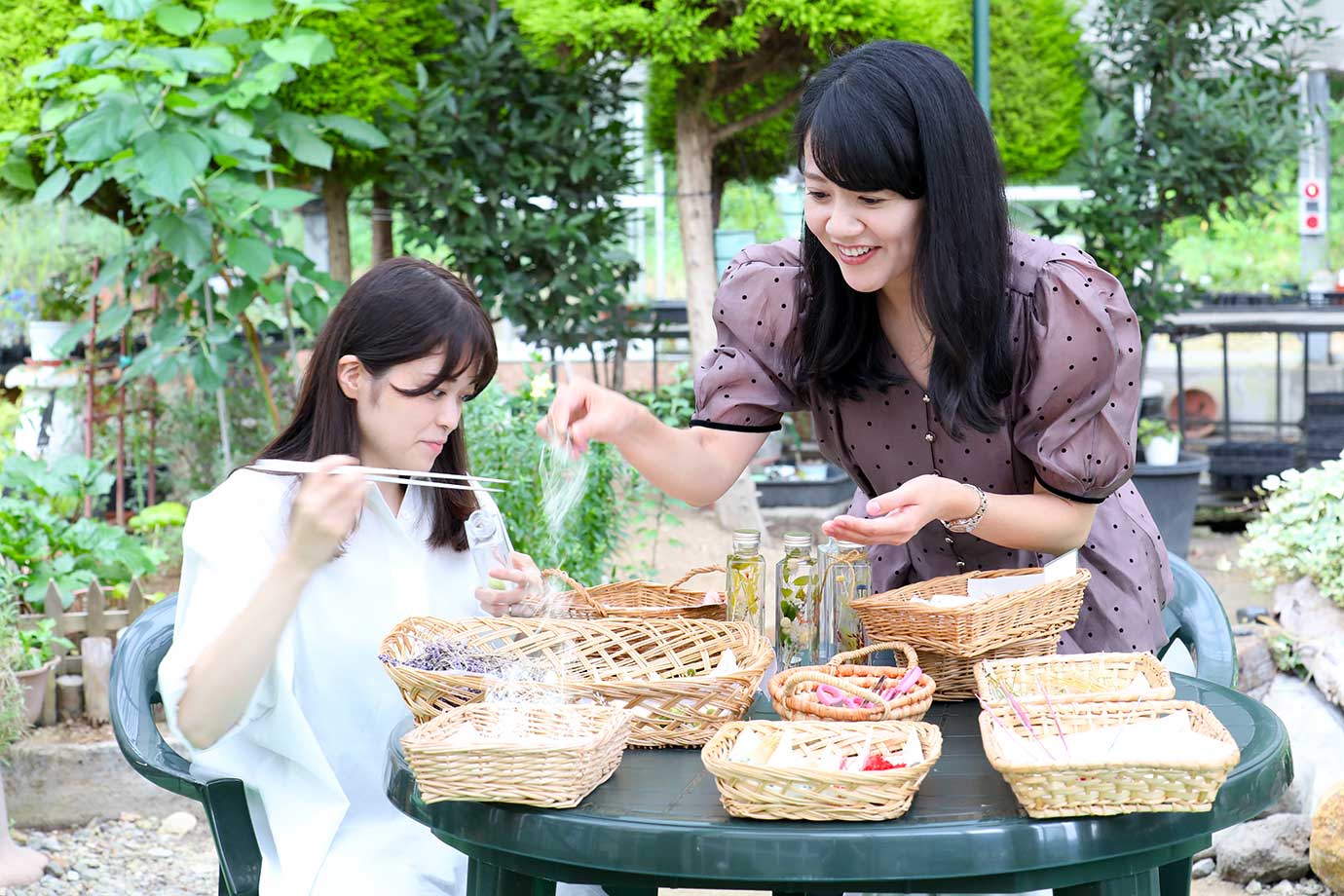
“Herbarium” is a plant specimen made using dried flowers and silicone oil. Think about what kind of design you want and place dried herbs in a clear glass. The Herbarium experience costs 1,980 yen and takes 30 minutes.
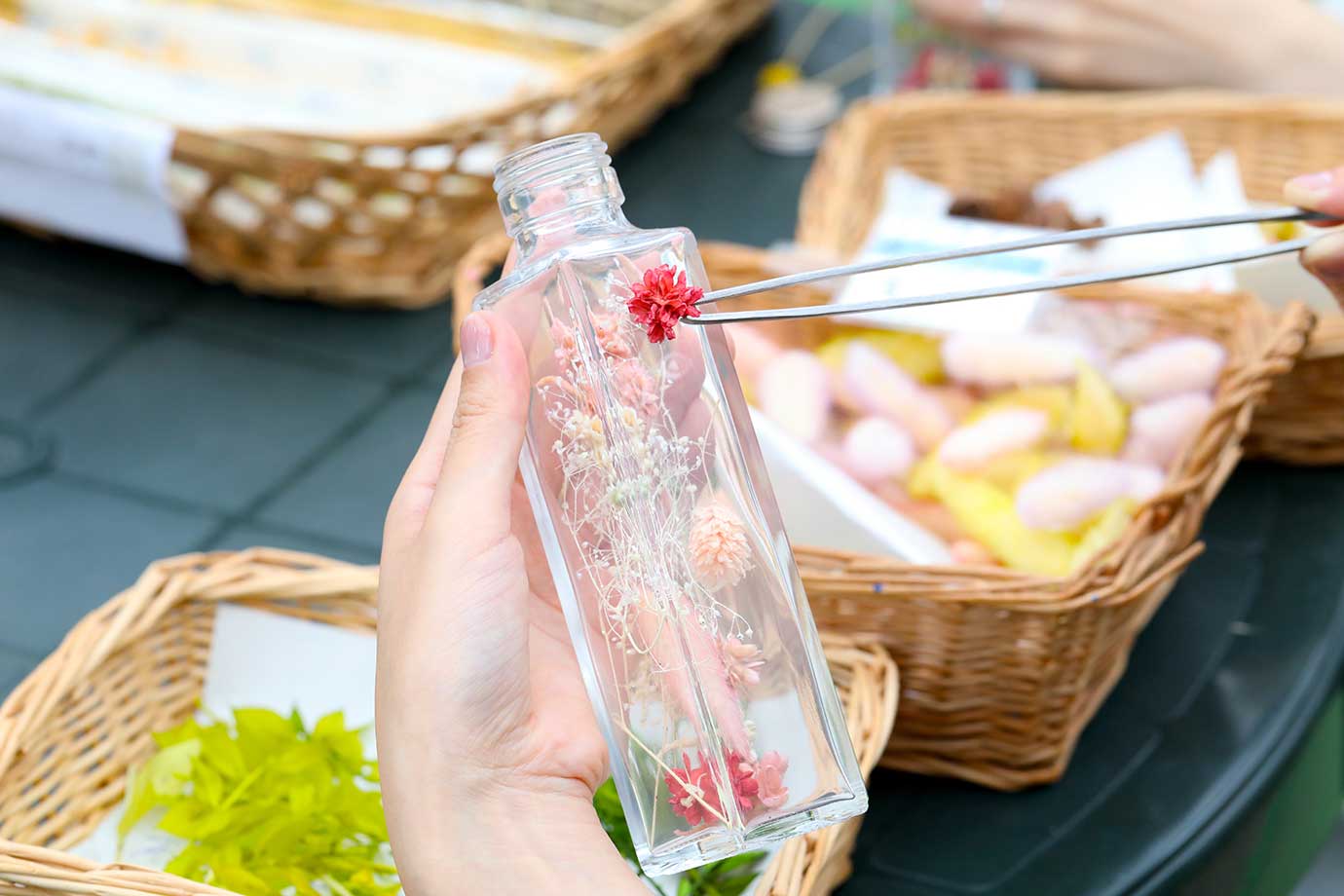
Delicate dried herbs are handled with tweezers. Once the taller ones are in place, place smaller flowers in the gaps and adjust them so that the floral material does not lift up.

Finally, the oil is added. Pour slowly along the inside of the bottle, being careful not to let the herbs rise up... and finally put the lid on!
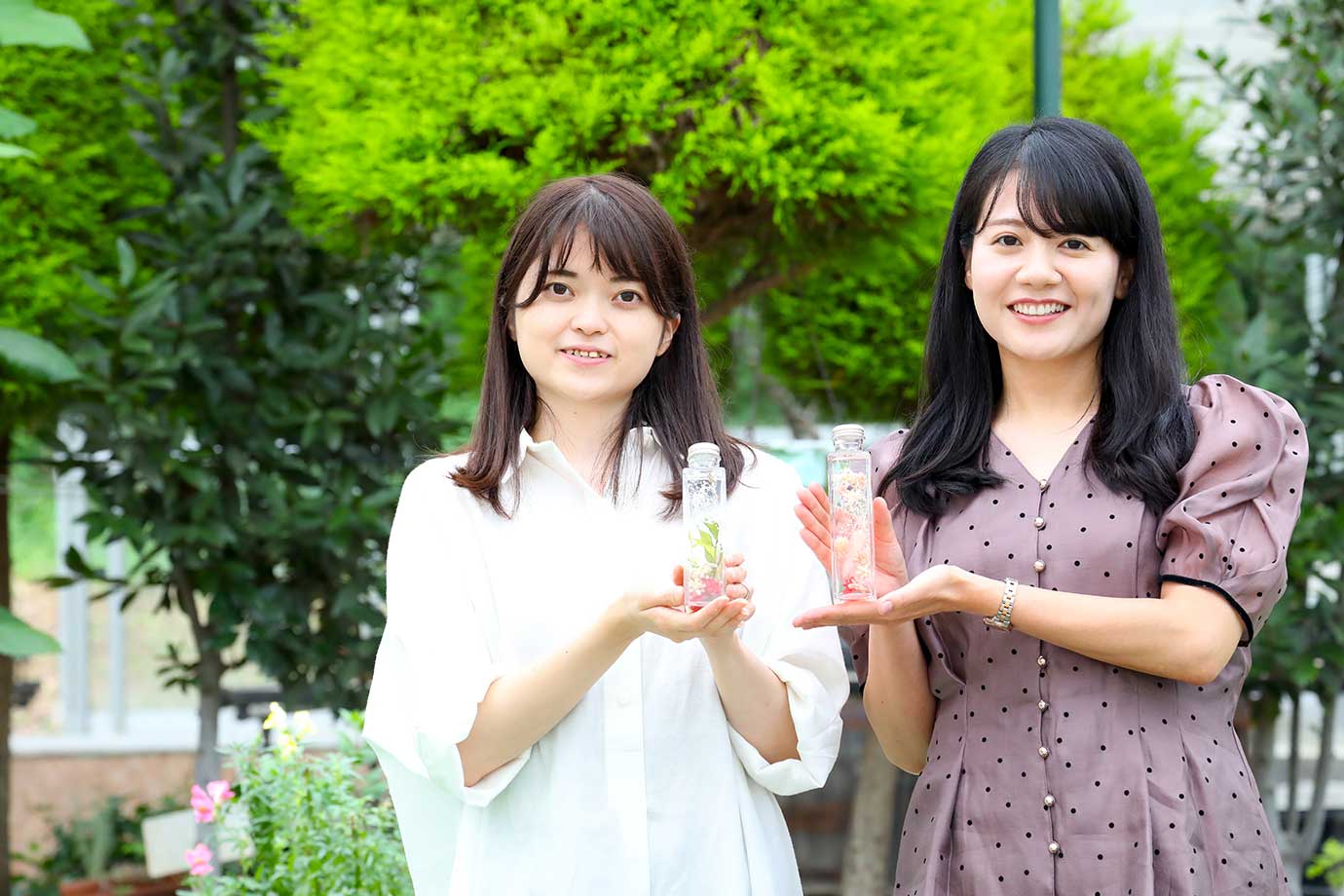
The color and appearance of the flowers are sealed inside the bottle and can be displayed and enjoyed for a long time. This is great for room decor or as a gift... ♪
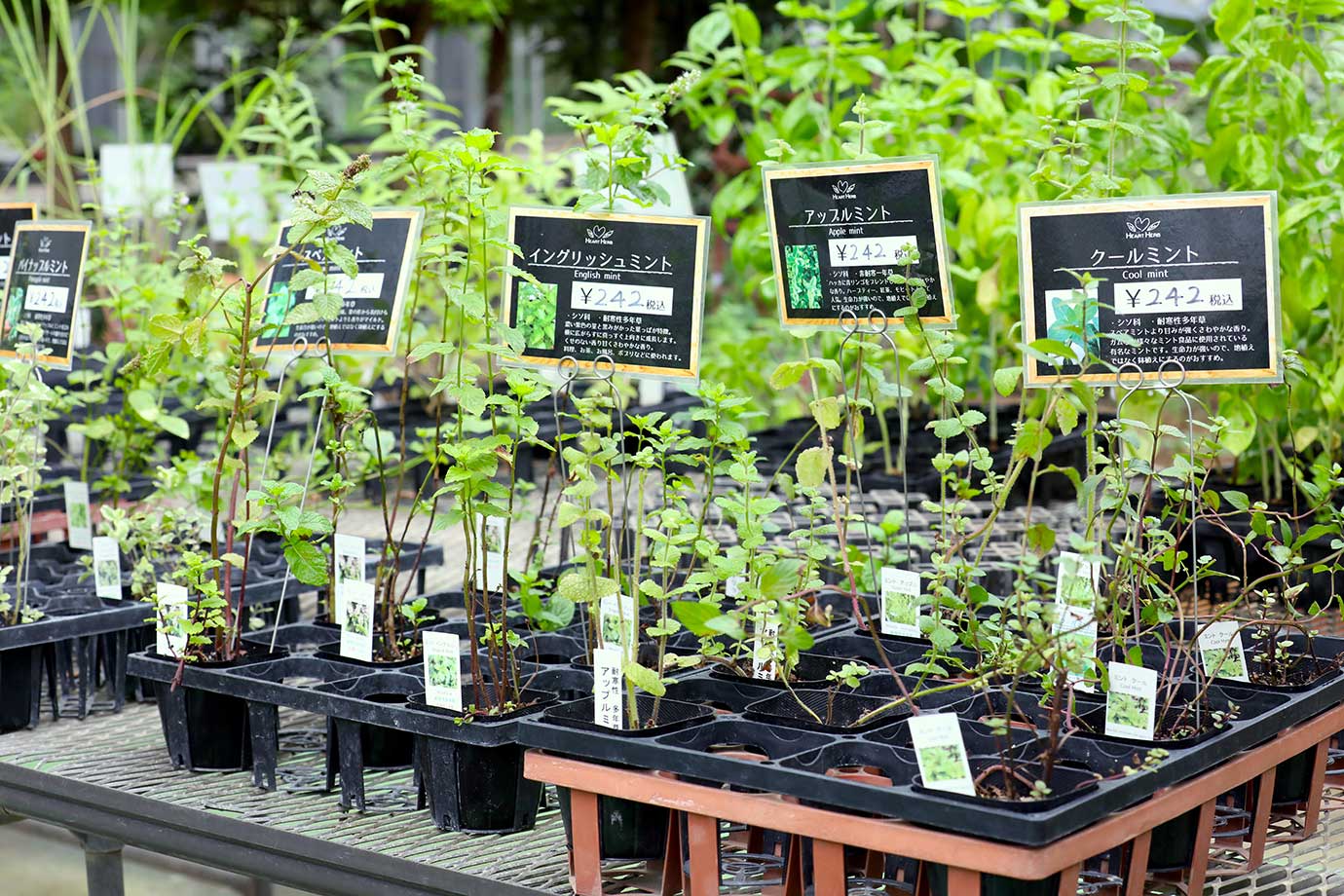
The Seeds greenhouse sells colorful seasonal flowers and herb seedlings.
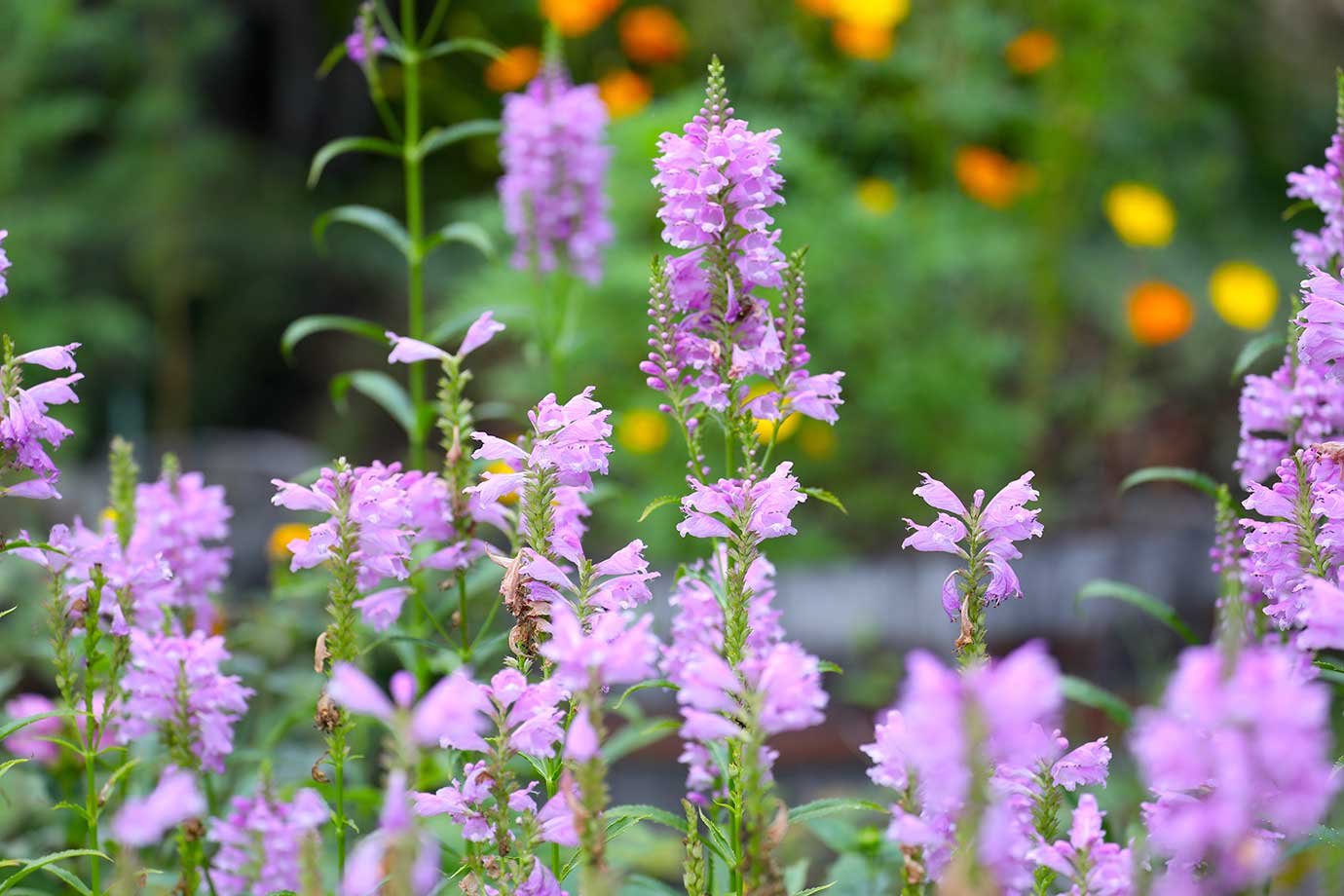
The garden, which takes advantage of the natural terrain, is decorated with seasonal herbs and flowers.
Lake Tazawa gourmet with plenty of local seasonal ingredients
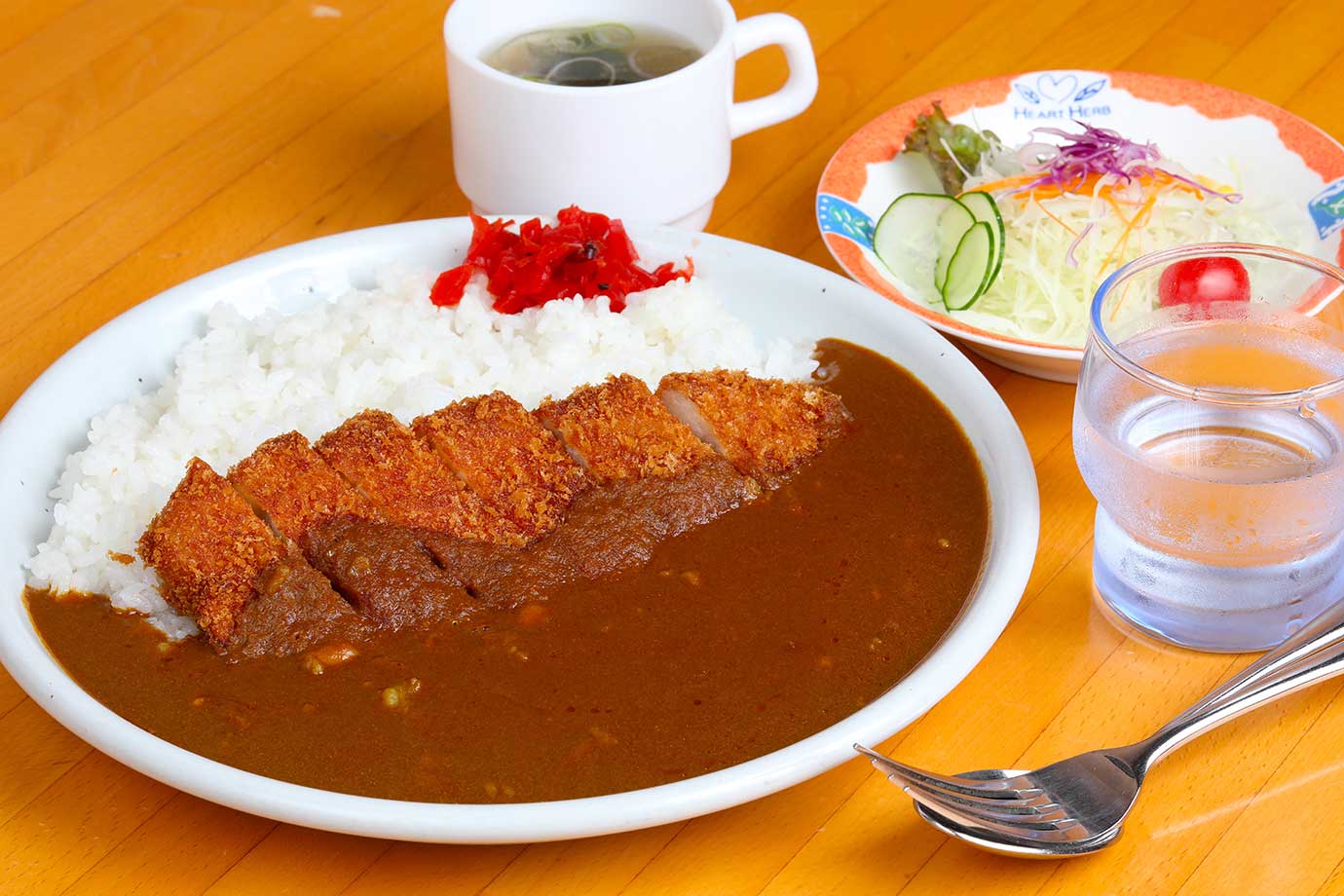
Lunch is served at the Salato restaurant overlooking Lake Tazawa. Hachimantai Pork Cutlet Curry (with soup and salad), priced at 1,540 yen, is a delicious crispy pork cutlet made from Akita Prefecture’s branded meat, Hachimantai pork.

The “Tazawako Komagatake Tendon” (bowl of rice topped with tempura vegetables and shrimp) is available for 1,210 yen. The “Herb Tea Bar” offers 19 different herbs in your favorite blends for 660 yen. It is great value with free refills.
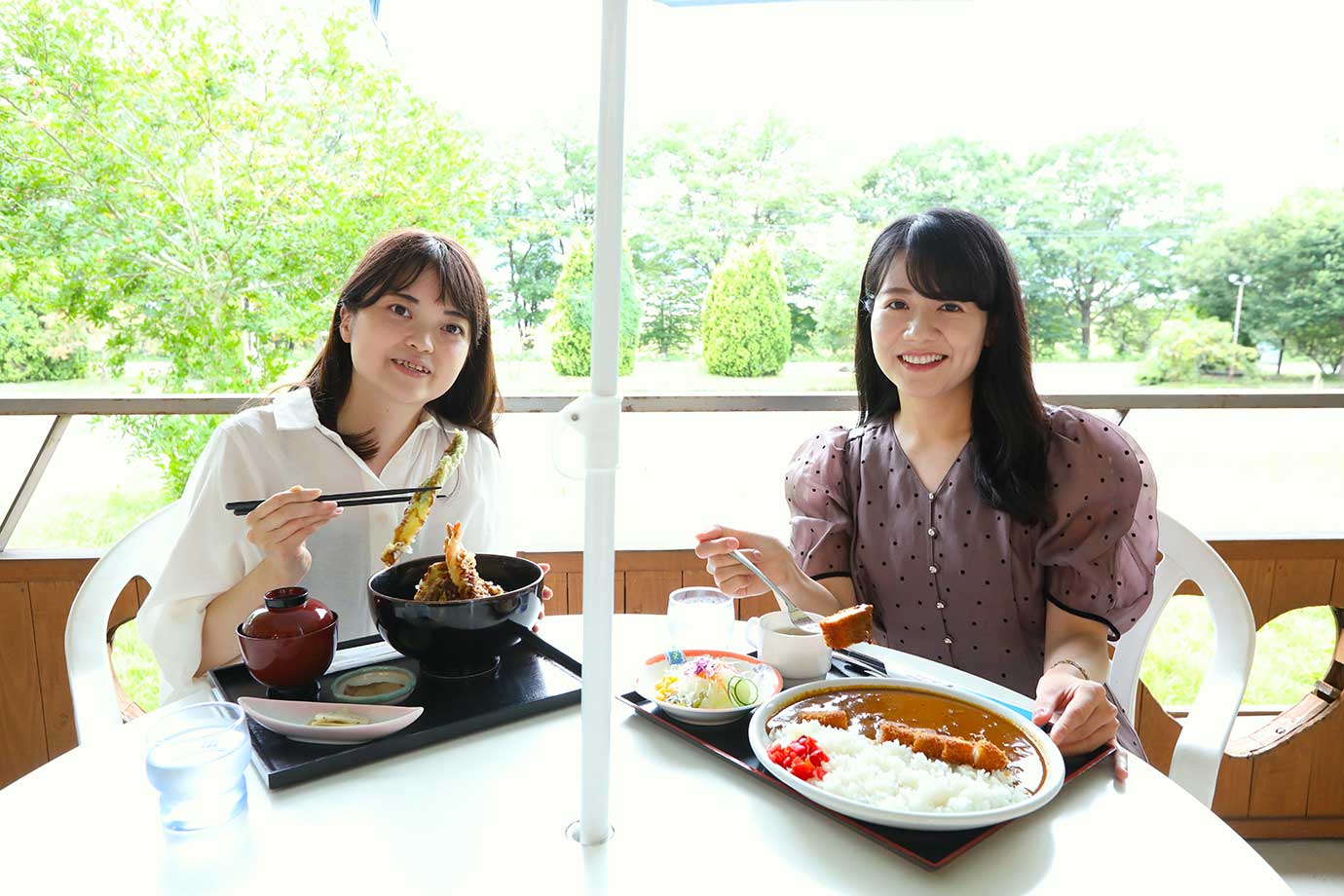
Enjoy lunch with views of the garden, with its refreshing green trees. Beyond the garden, Lake Tazawa extends into the distance.
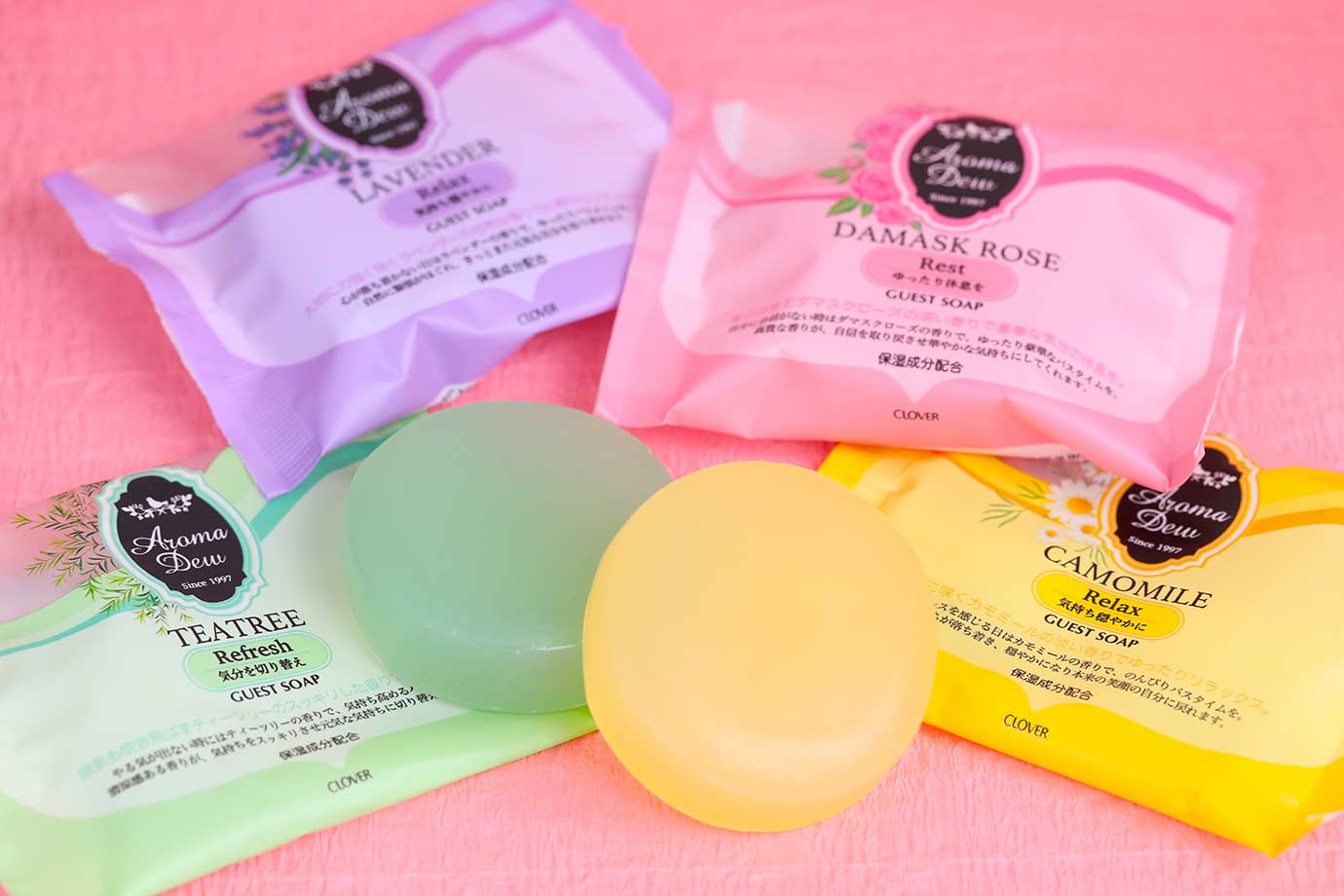
The shop offers a wide variety of aromatic goods and tasteful Akita souvenirs. Aroma Dew soap, available in six varieties, including lavender, chamomile, and tea tree, costs 132 yen per piece. The range also includes body soap and bath salts. The fragrance of the herbs will surely make your bath time more enjoyable.
Tazawako Herb Garden - Heart Herb
Address:78 Tazawakata-mae, Tazawako, Semboku City, Akita Prefecture
Phone:0187-43-2424
Fee:Free admission (experience fees not included)
Hours:10:00 to 16:00 (Saturdays, Sundays, and national holidays: 10:00 to 17:00)
Closed:Wednesdays (Open only on Saturdays, Sundays, and national holidays during the winter season from mid-November to around early April. Please inquire for details).
Mountain Honey Shop
Sweet and good for beauty ♪ Honey sweets made using Japanese honey
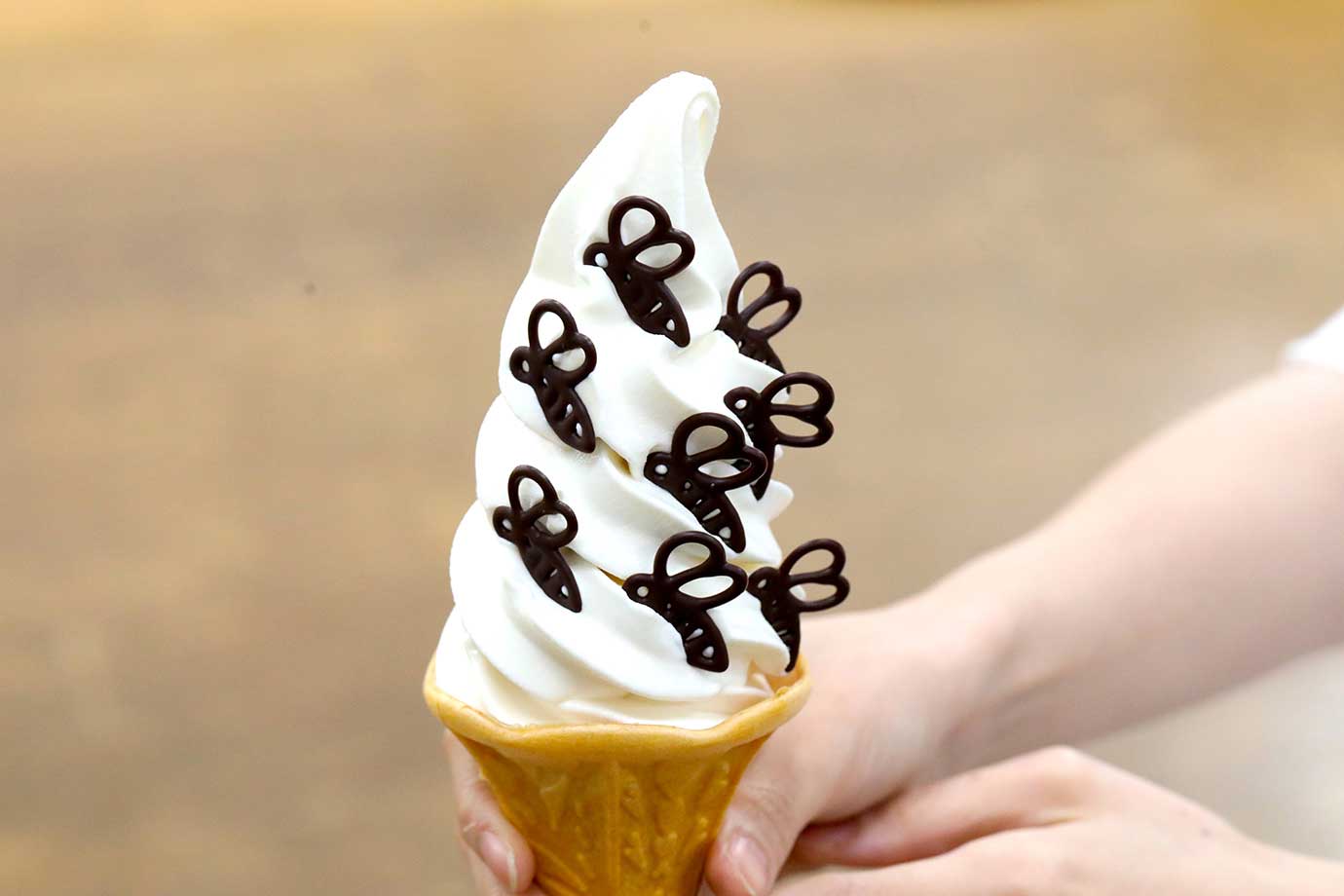
Yamanohachimitsuya - the “Mountain Honey Shop” - opened in 1977 and has a store near the shores of Lake Tazawa. The domed building sells a wide range of products, including its own products, honey from around the world, jams, and health foods.
The very popular “honey soft” ice cream (400 yen) contains acacia honey. The standard topping is a single chocolate honeybee, but if you roll the dice and get an “8”, you win a “Honeybee Swarm Soft” ice cream.
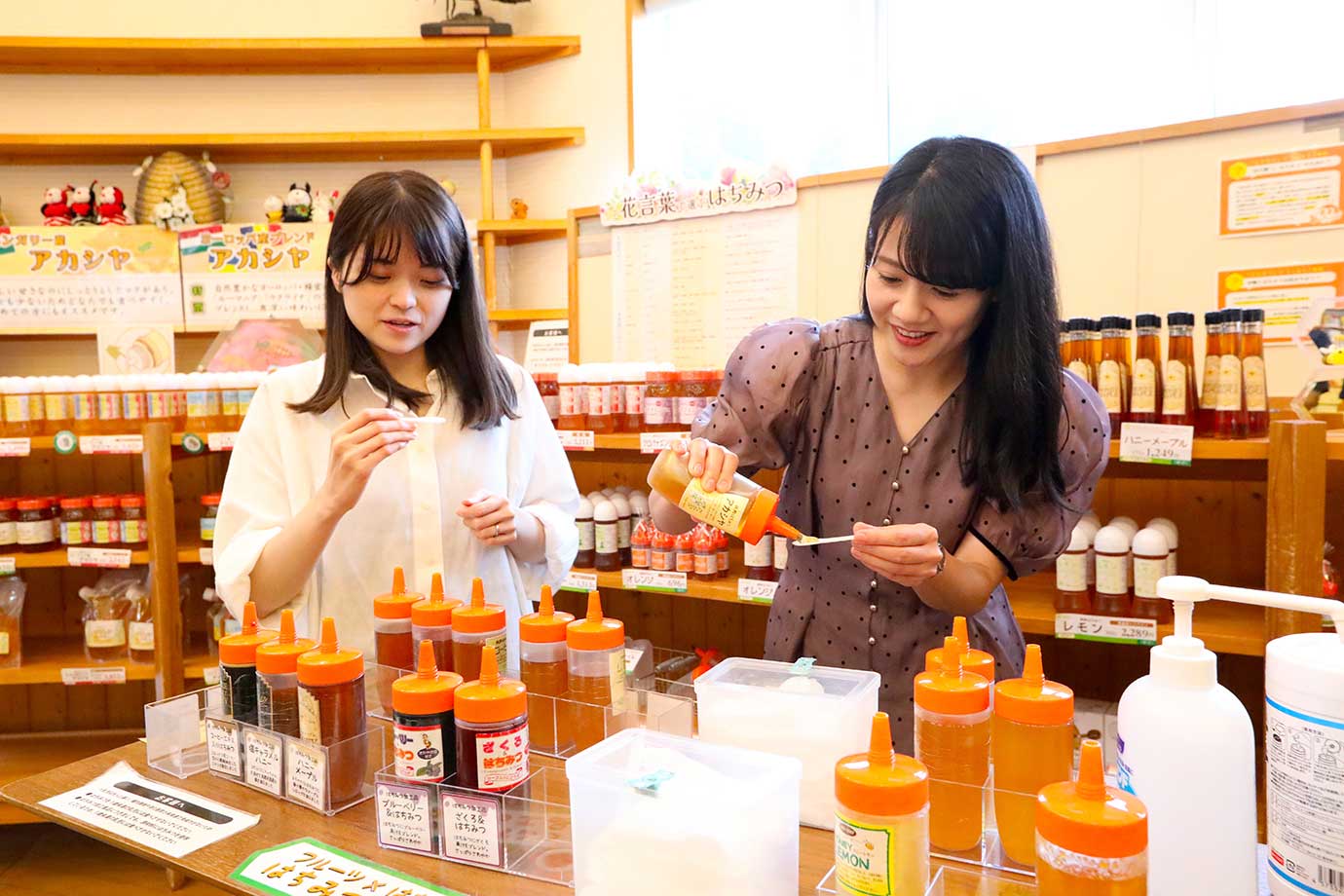
The honey in the store is carefully selected by the owner, who has 52 years of beekeeping experience. A wide variety of honey from Akita Prefecture and other rich natural environments can be tasted before buying.
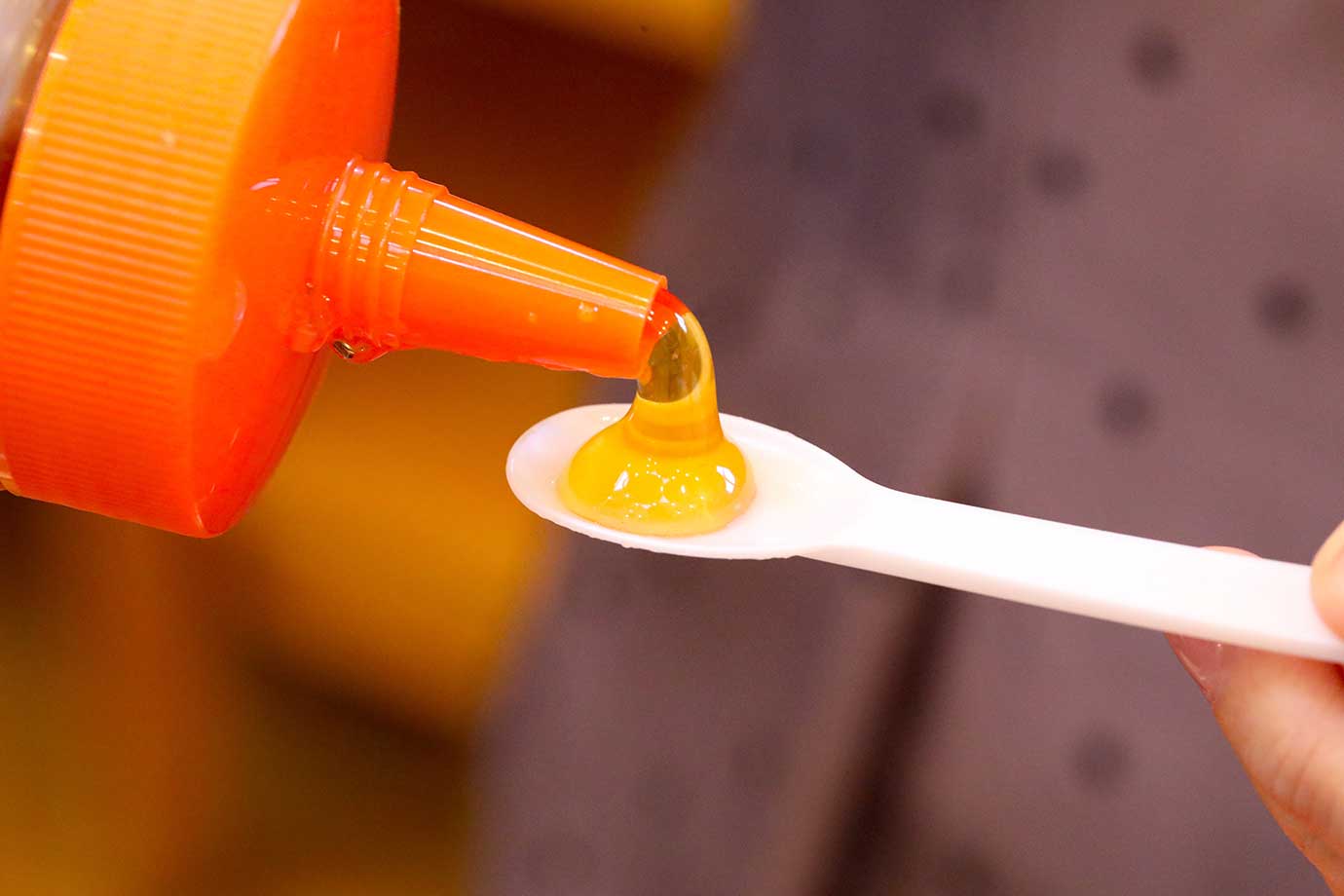
Honey contains 190 kinds of ingredients such as vitamins, minerals, and amino acids. It is a powerful superfood that is good for health, as well as beautiful skin.
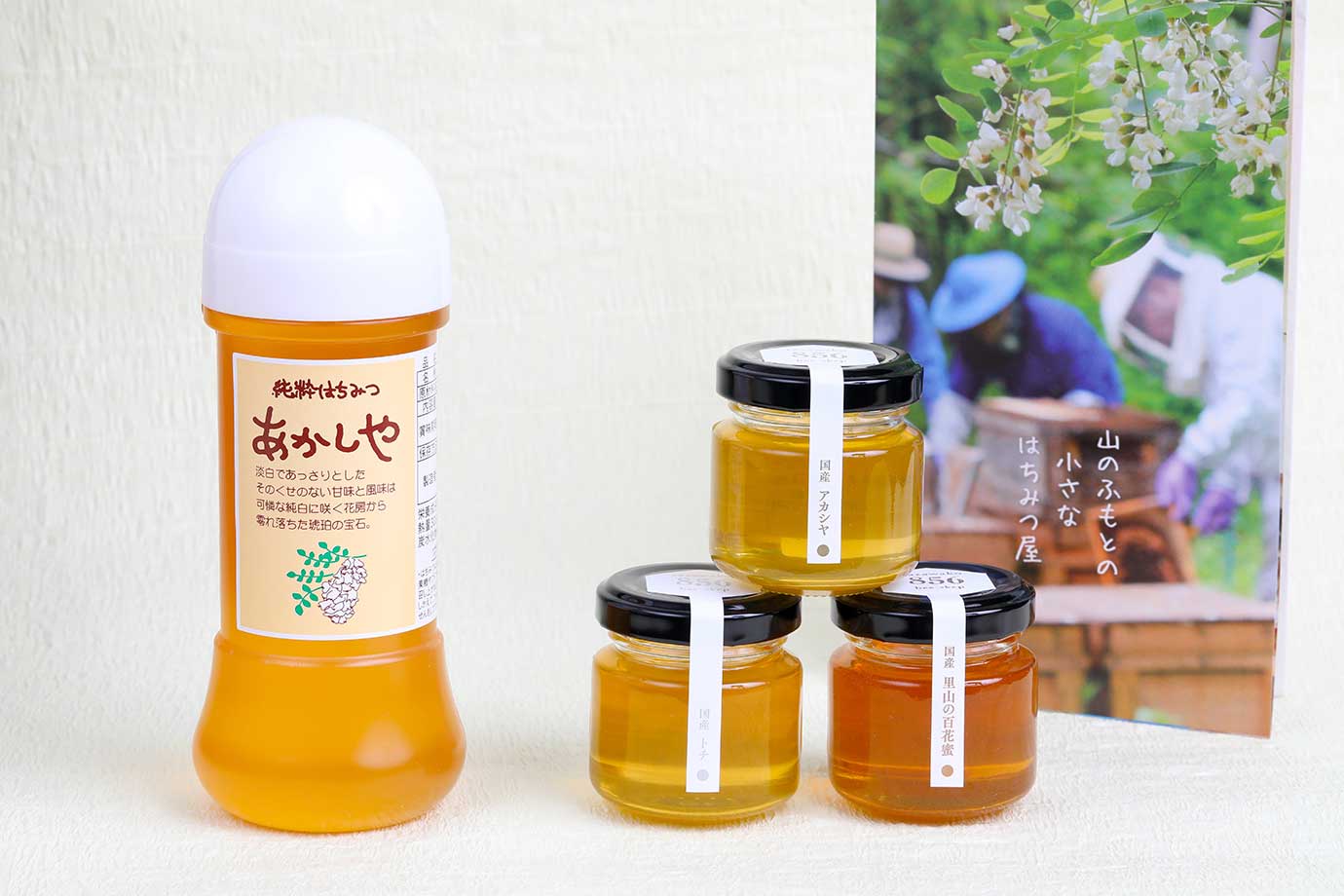
If you are not sure which one to buy, we recommend the “Pure Honey Acacia” 300g, priced at 2,362 yen (shown on the left). This bottled product is easy to use and has a gentle sweetness without any peculiarities or acidity. The “Japanese Honey 50g 3-pack set” (on the right), is priced at 1,522 yen. This allows you to compare three types of honey: acacia, Japanese horse chestnut, and satoyama mixed flower honey.
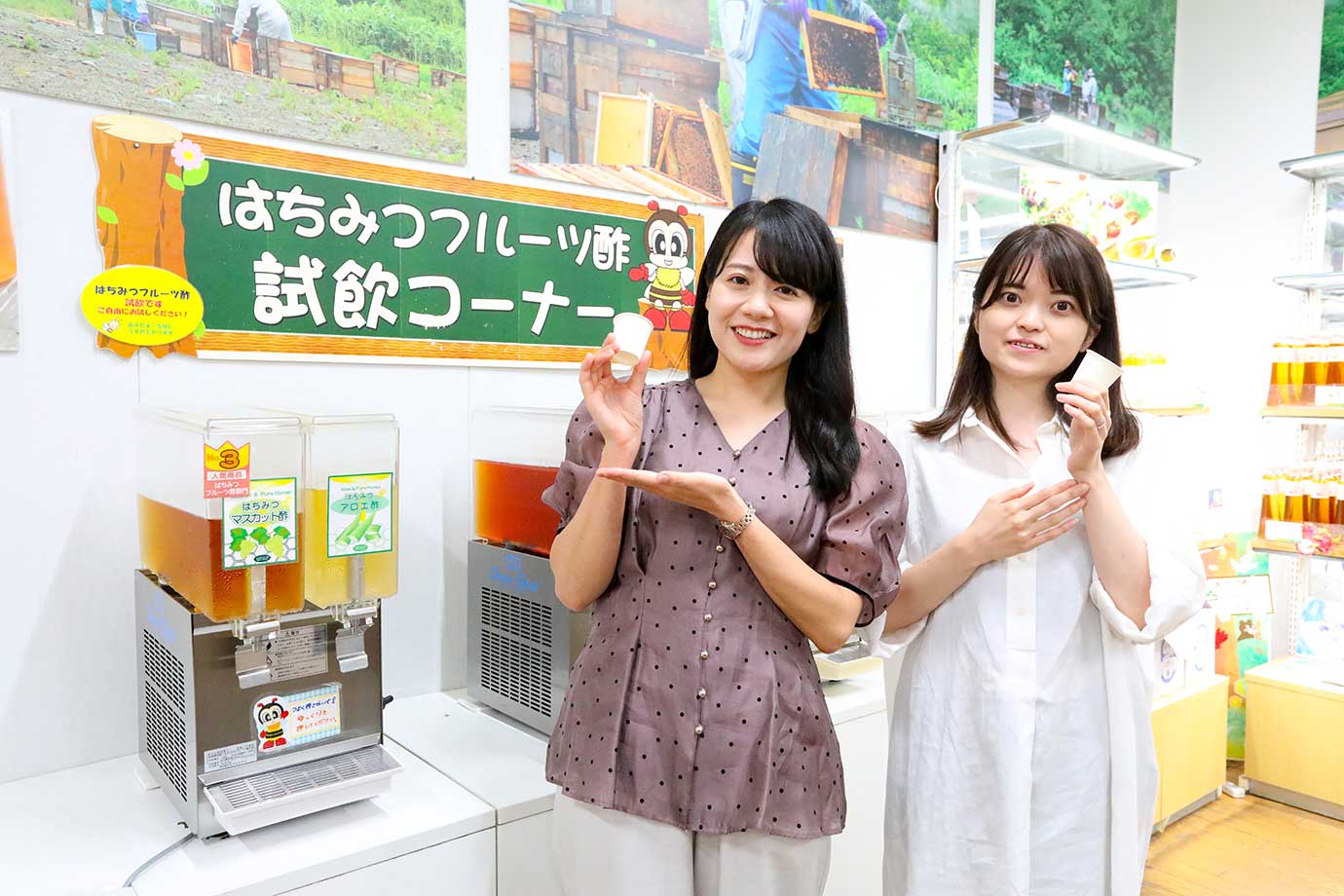
There is also a “honey fruit vinegar” tasting corner. Honey, vinegar, and fruit juice are combined to help relieve fatigue and promote anti-aging. There are also unusual flavors such as “honey dragon fruit vinegar”.
The gorgeous “Kaiun Honeycomb Soft” ice cream gives you a taste of honeycomb
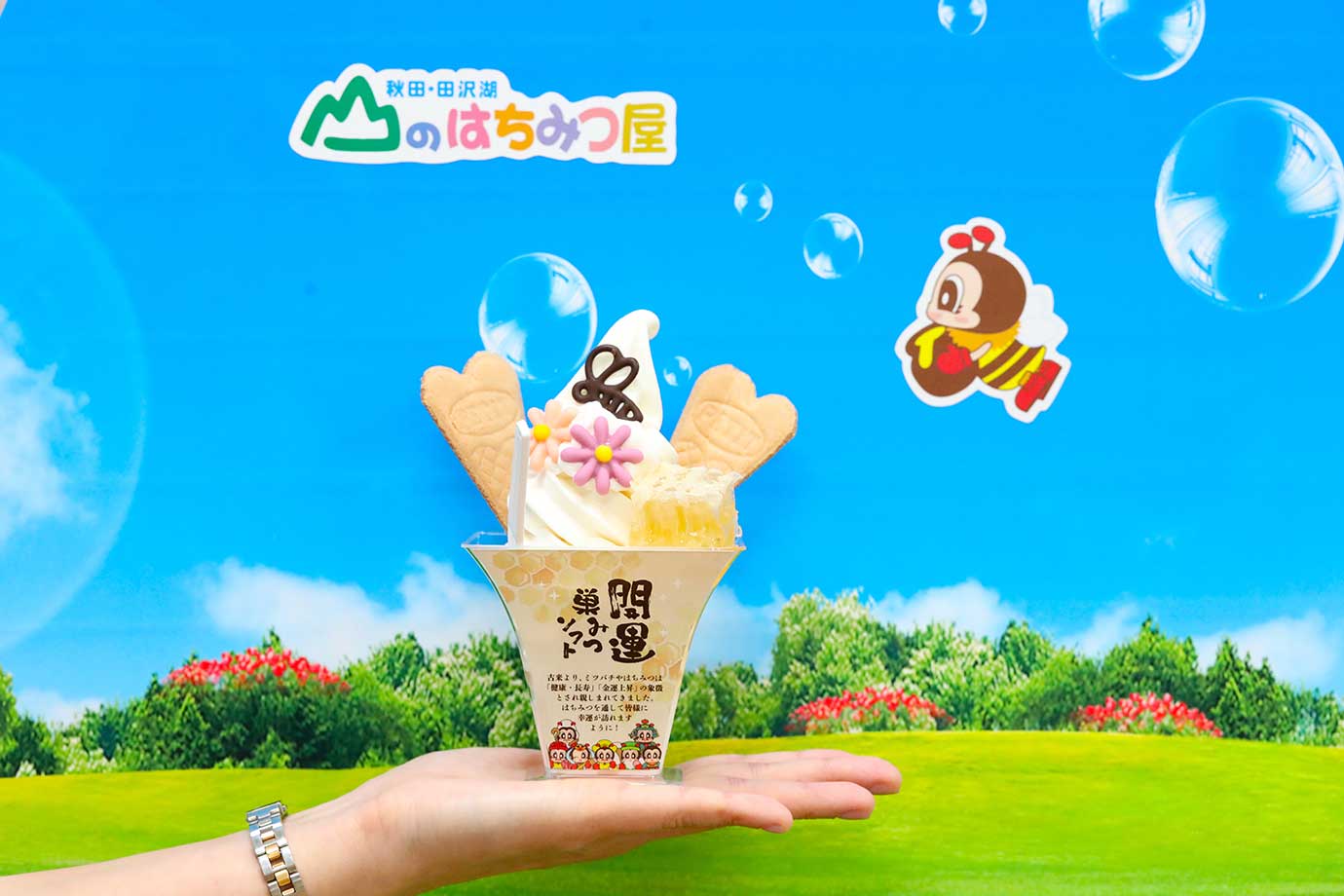
There is a photo spot in the restaurant, where you can take great pictures with the sweets. The “Kaiyun Honeycomb Soft” (800 yen) is topped with honeycomb. Let’s hope for good luck in money and health ♪
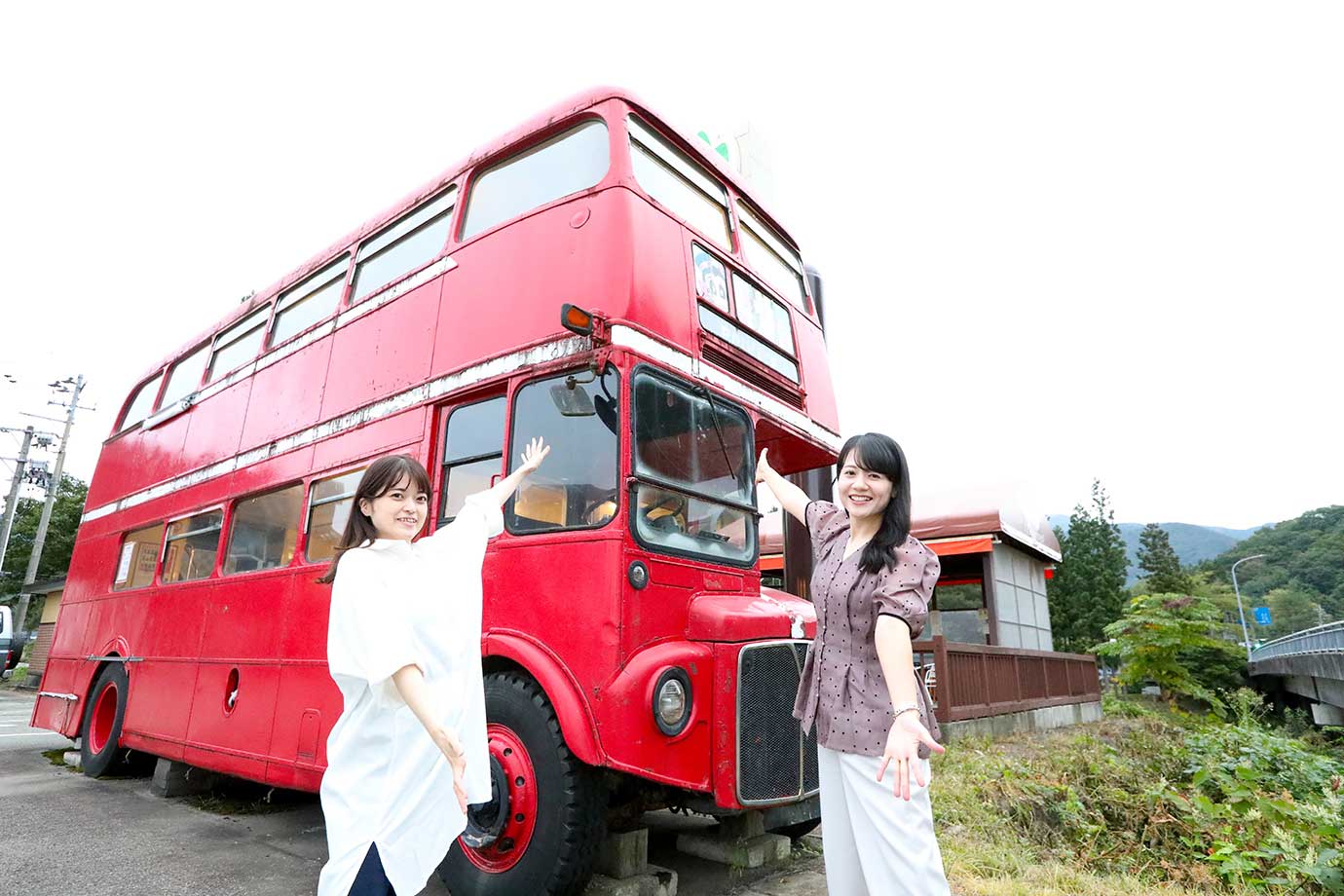
A red London bus - “Micchi” - is parked in front of the store and serves as a free rest area.
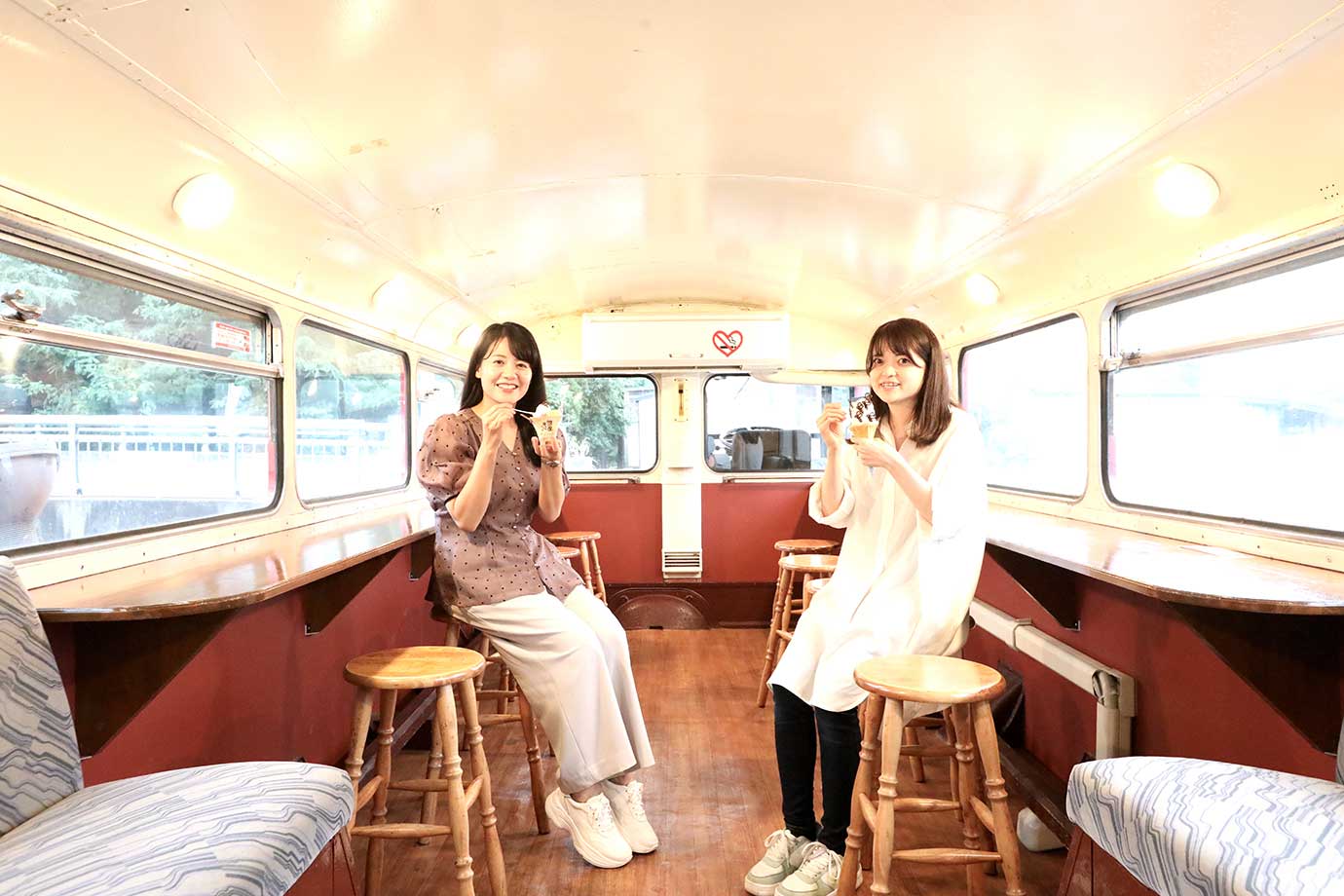
Inside, the bus has counter seating and sofas where you can eat and drink.
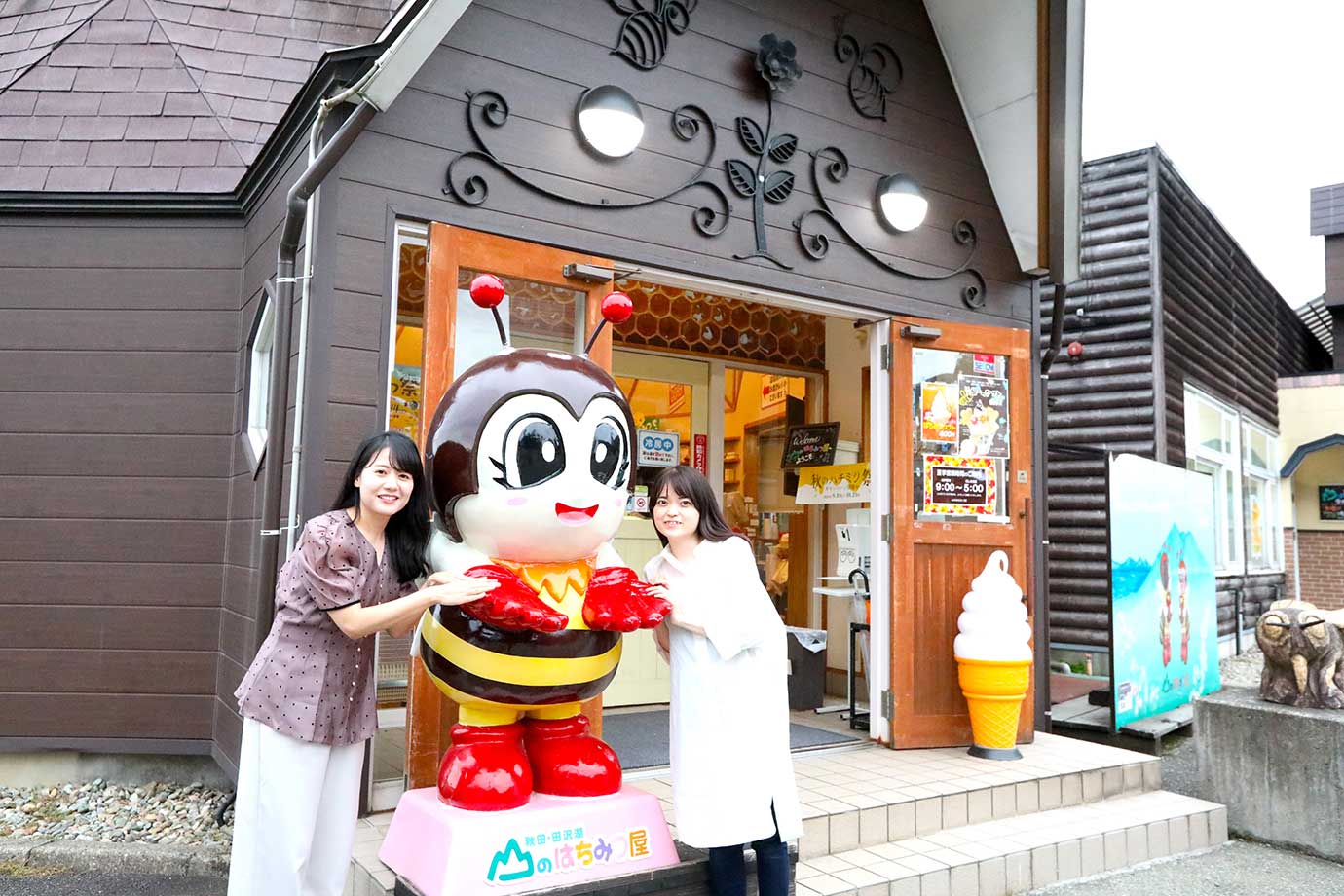
The mascot character - “Micchi” - is waiting for you in front of the fairy-tale-like store. There is a “pizza studio” on the premises, where you can also enjoy stone oven baked pizza with views of Mt. Akita Komagatake.
Mountain Honey Shop
Address:163-3 Ishigami, Tazawako-obonai, Semboku City, Akita Prefecture
Phone:0120-038-318
Hours:9:00 to 17:00
Closed:Open all year round (closed only during the year-end and New Year holidays)
Hotel Folklolo Kakunodate
Feel like a passenger whenever you want ♪ “E6 Series Komachi” concept room
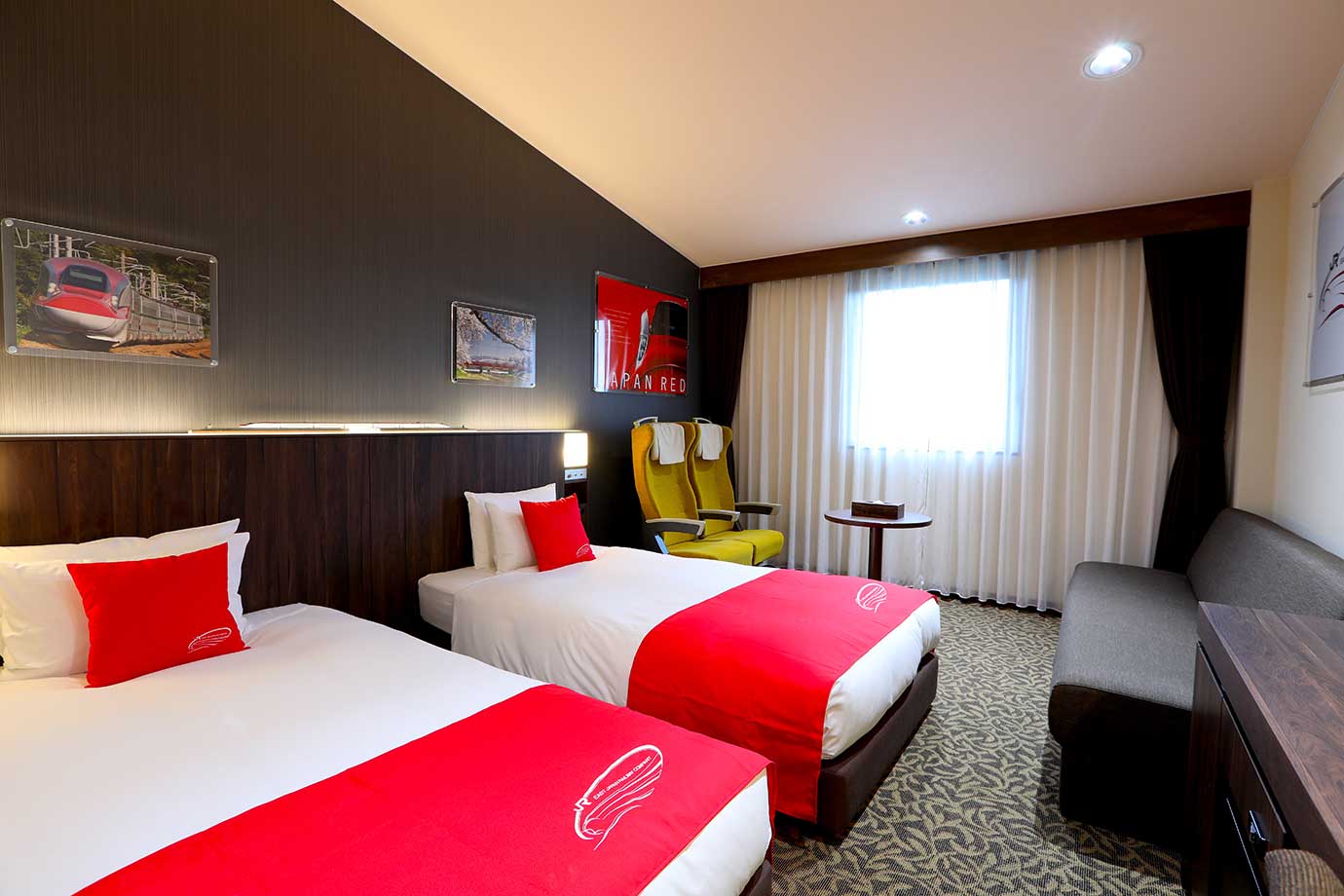
A one-minute walk from JR Kakunodate Station, this Japanese-style building facing the station square seems to blend in with the Kakunodate townscape. The inn has an “E6 Series Komachi Room” based on an Akita Shinkansen concept.
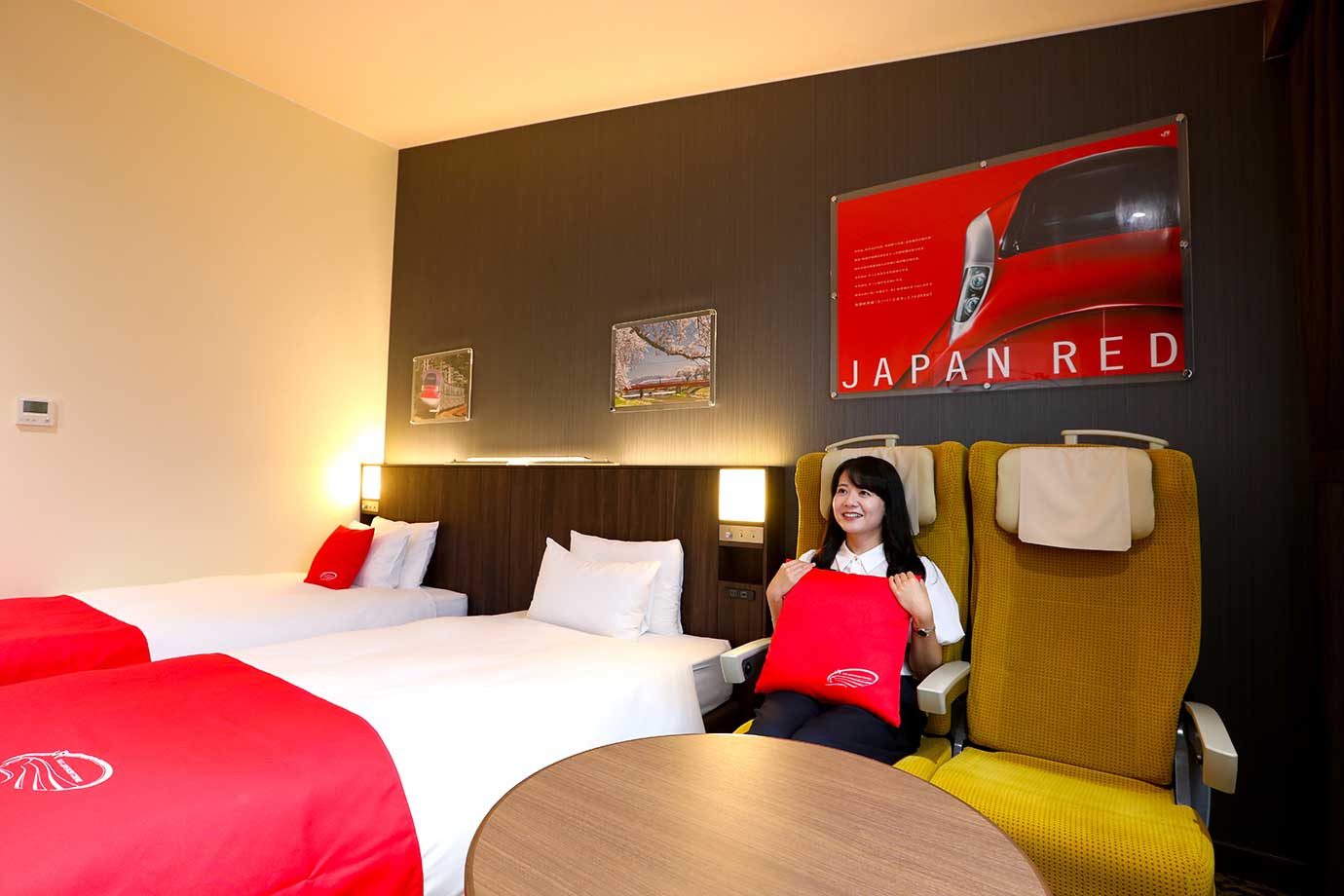
In the interior, there are actual E6 Series Komachi seats, so you can experience riding the train whenever you want. The hotel beds and interiors also have a red and white Komachi design.
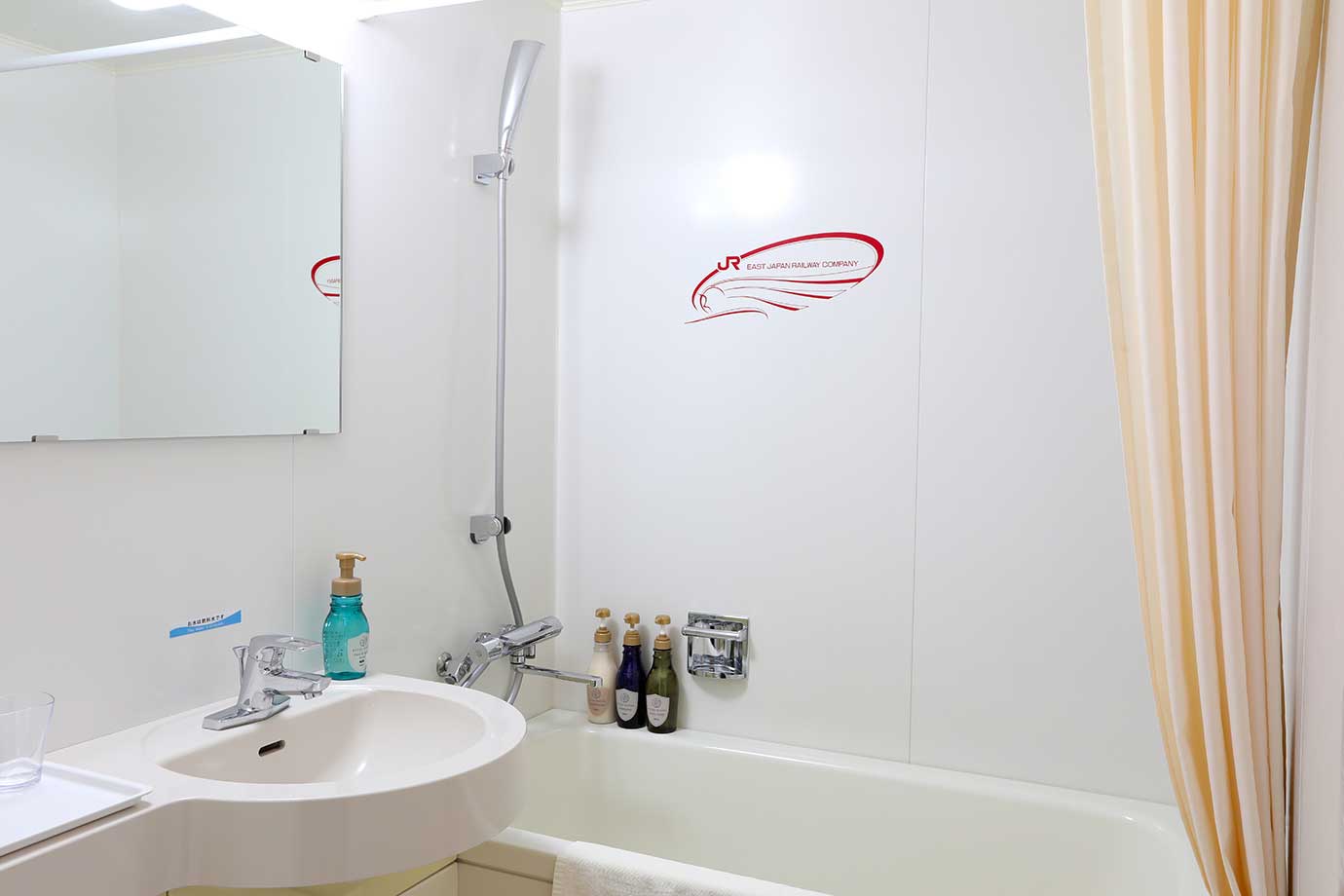
A bright and clean bathroom. Subtle designs of the E6 Series Komachi design can also be seen here and there on the walls.
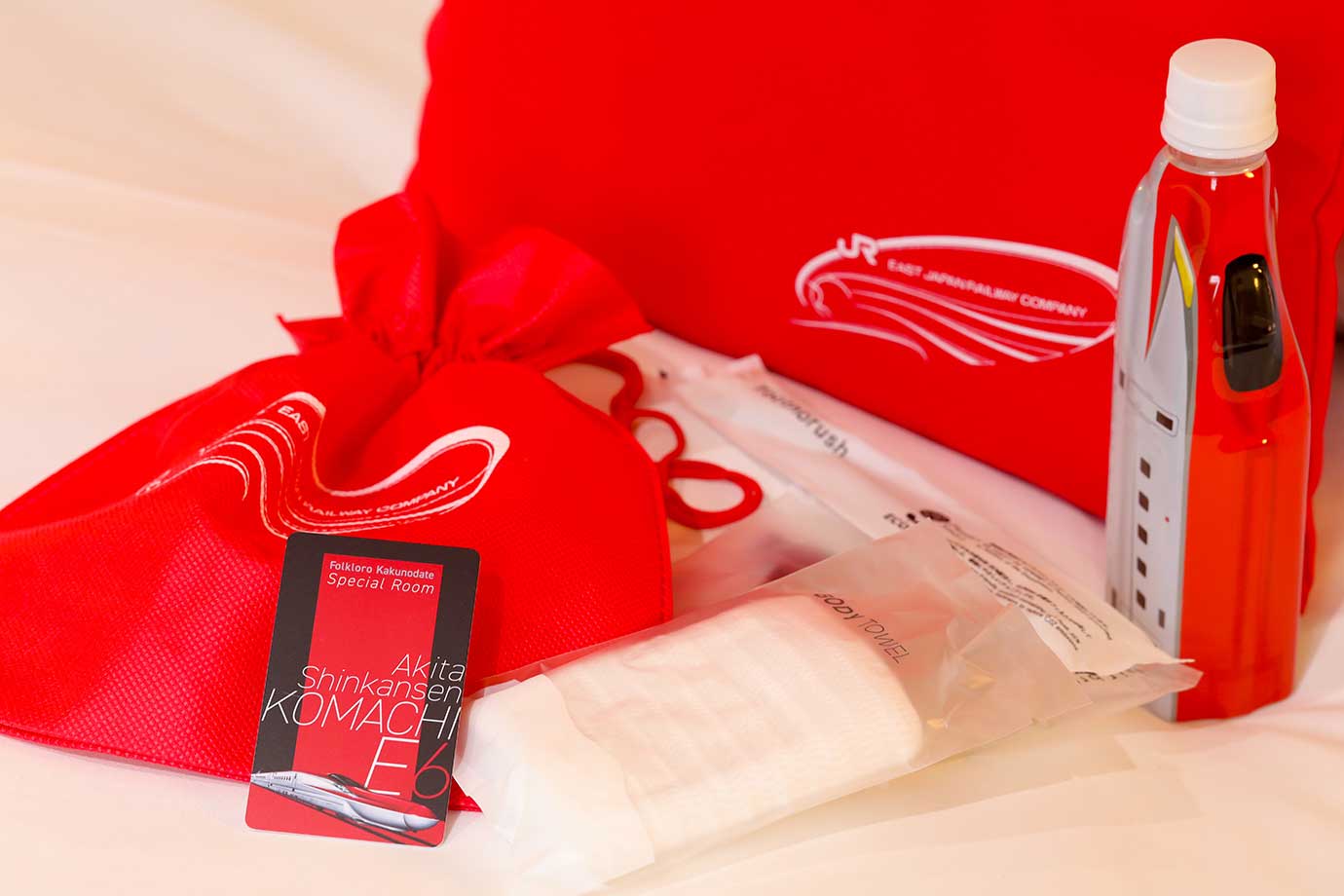
The amenity drawstring bag, room key, and bottled water also have Komachi designs. It’s wonderful that you can take everything home with you. Outside the window, you can watch the trains go by and even see the real E6 Series Komachi.
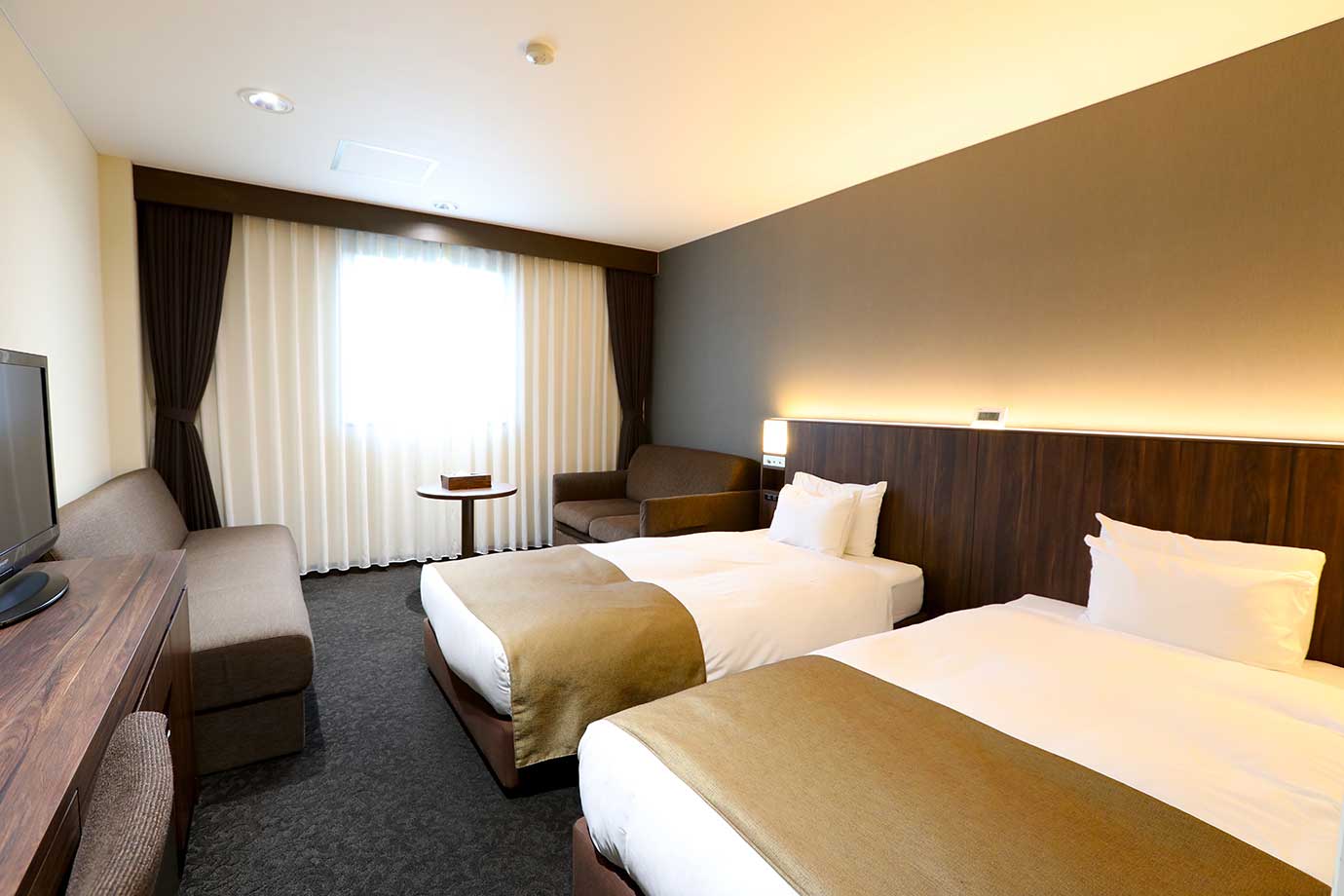
The deluxe twin room is spacious at 24 square meters and can accommodate up to four people. The space has a modern design and is equipped with Simmons beds.
At breakfast, miso and iburigakko pickles from the long-established Ando Brewery are served
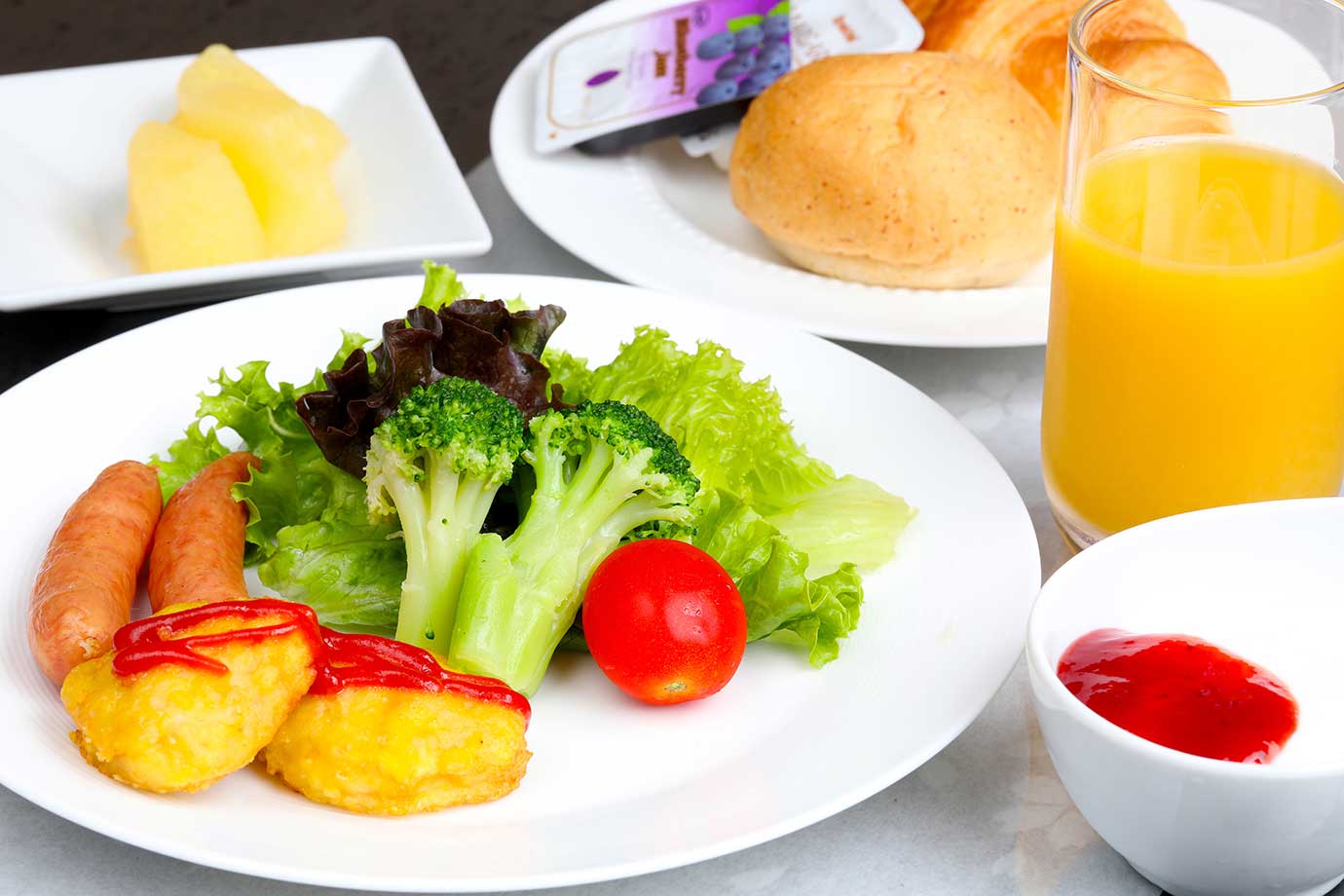
Free breakfast is included for all guests. Breakfast is served at the “Restaurant Sabo Sakura Komachi”, which is located in the hotel. A wide variety of dishes, including Japanese and Western side dishes, egg dishes, and salads, are served buffet style.
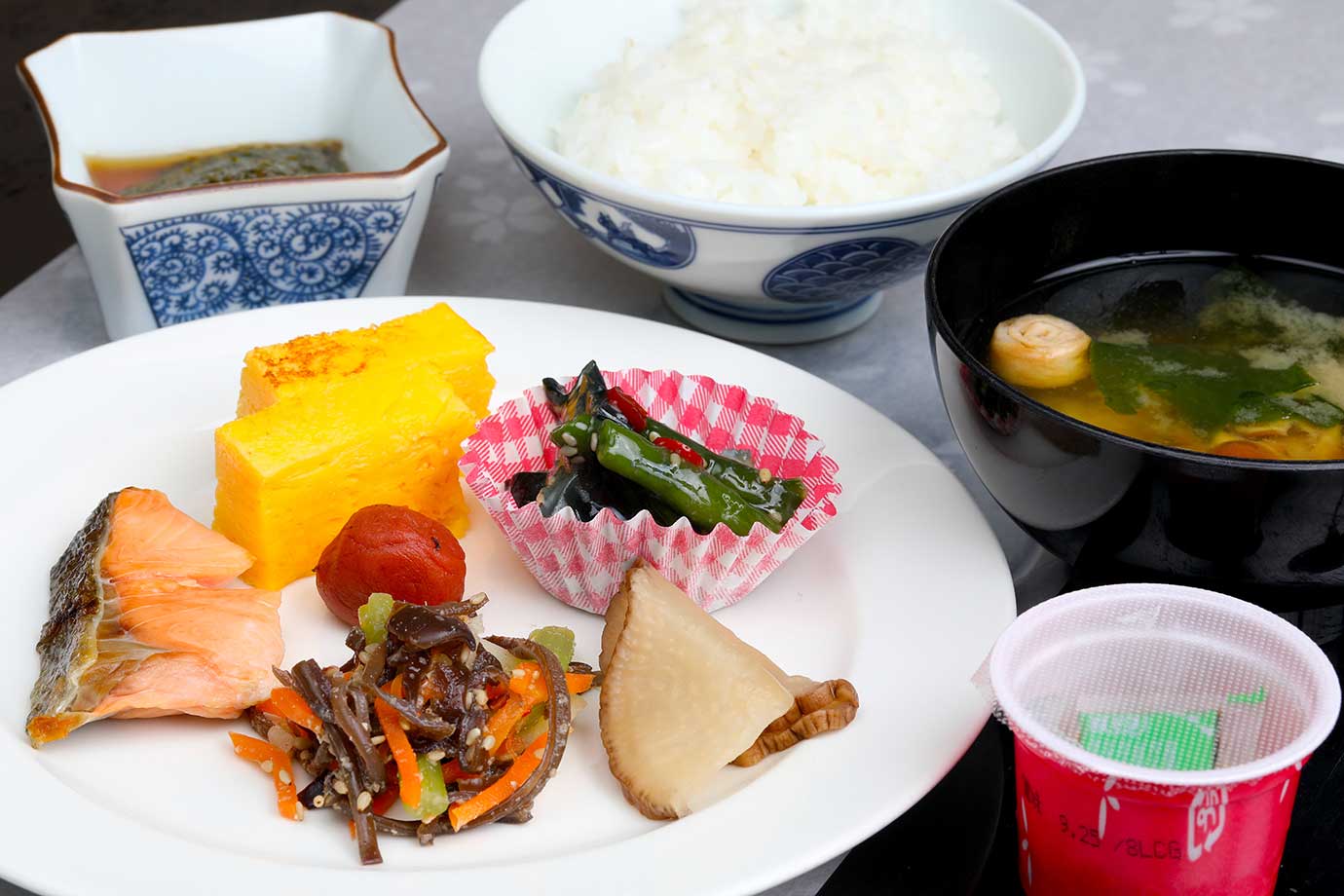
Freshly cooked Akitakomachi rice is served, along with miso soup made with miso from the Ando Brewery, and iburigakko pickles, an Akita specialty. Served with wild vegetables and natto (fermented soybeans), your breakfast becomes like a Japanese style set meal.
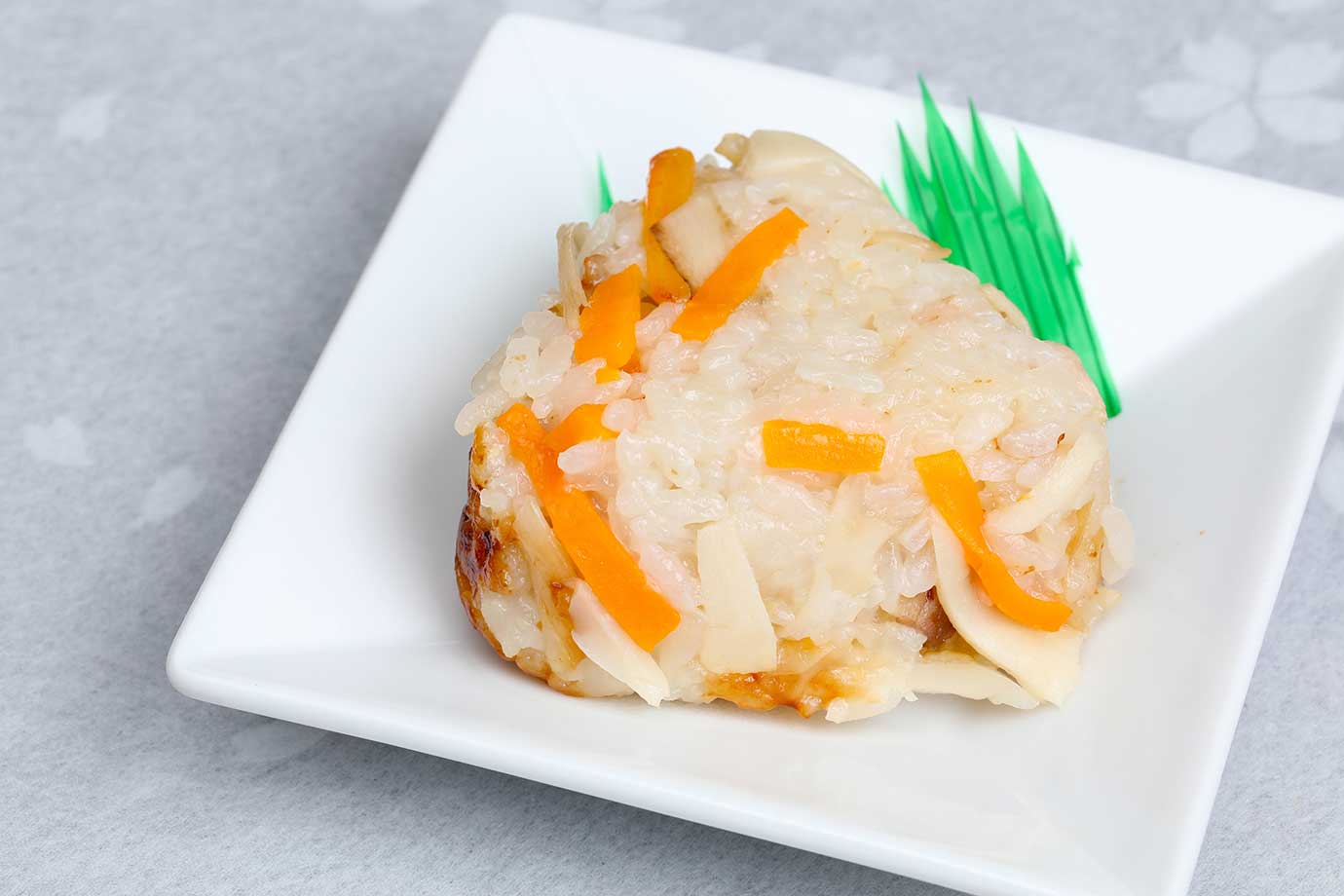
Rice balls with takikomi rice are also popular as an easy meal.
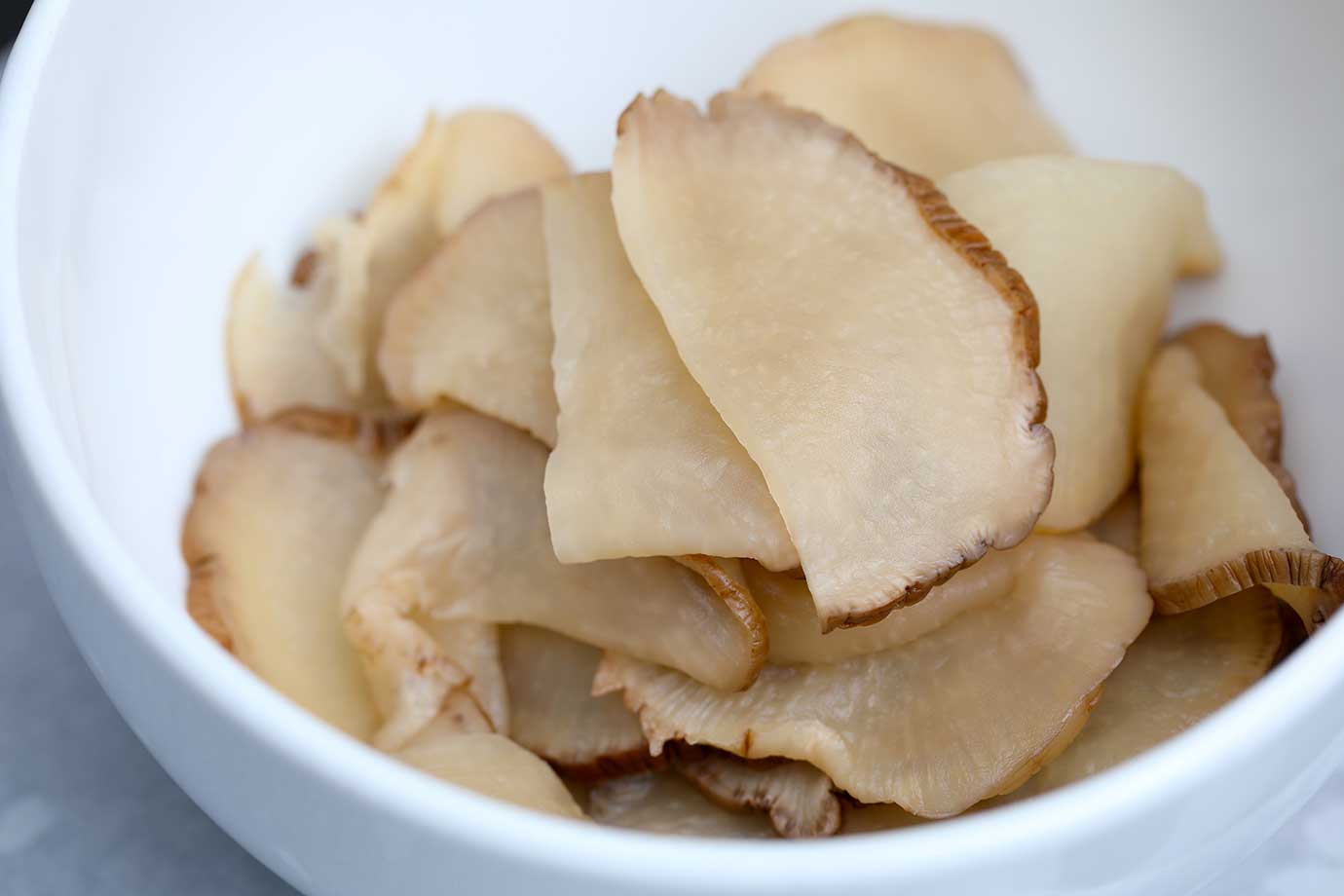
Iburigakko is one of Akita’s most well-known local dishes. In Akita, an area of heavy snowfall, harvested daikon radishes could not be dried outdoors, so they were dried using the heat and smoke from hearth fires. Unlike regular takuan pickles, iburigakko has a smoky aroma and crispy texture. It is the perfect accompaniment to rice.
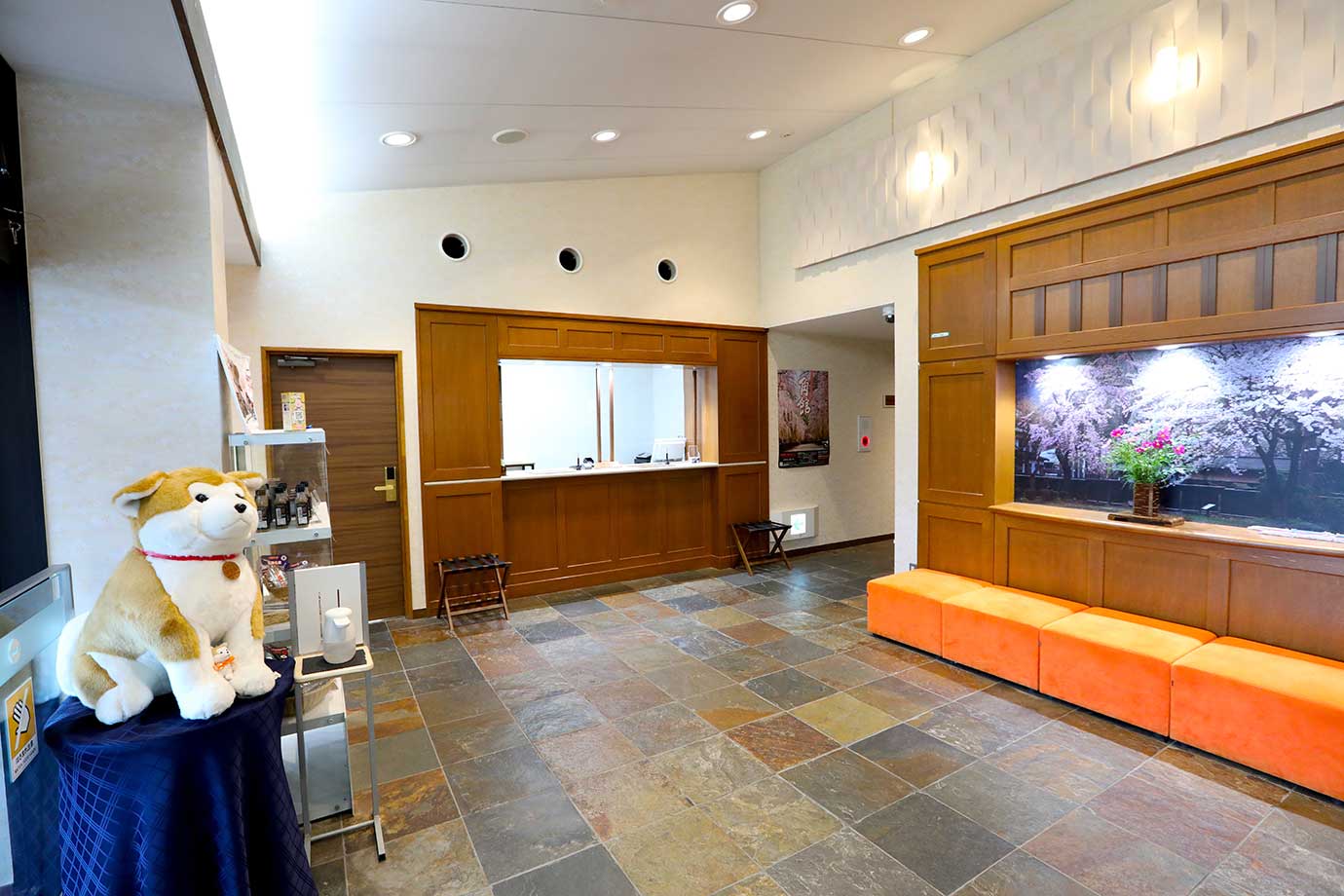
A cute Akita dog called Masao (a stuffed toy) welcomes you at the front desk. Check in and check out here.
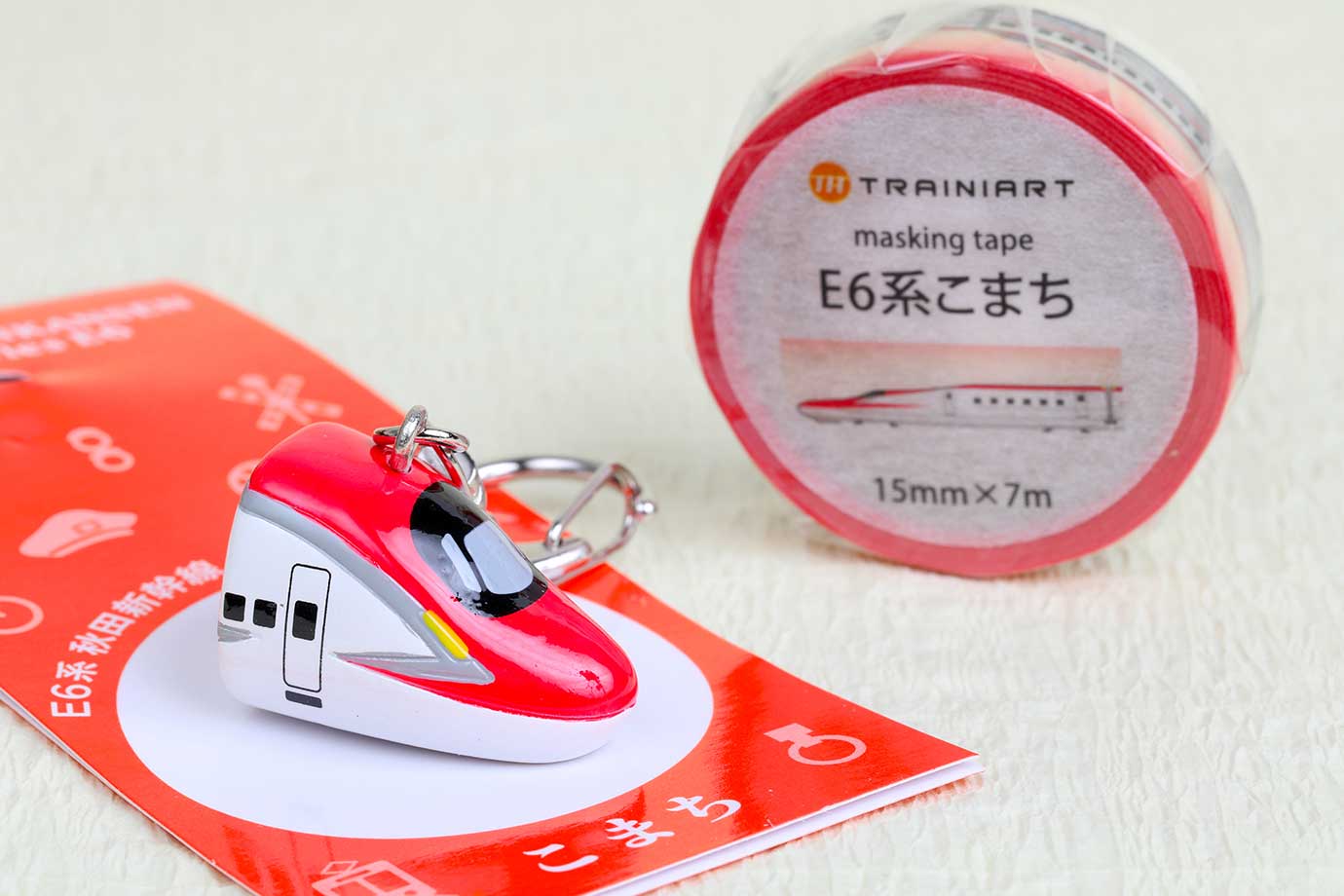
The “E6 Series Komachi” key chain sells for 693 yen and masking tape for 357 yen at the souvenir corner in the lobby. Why not pick up a commemoration of your stay?
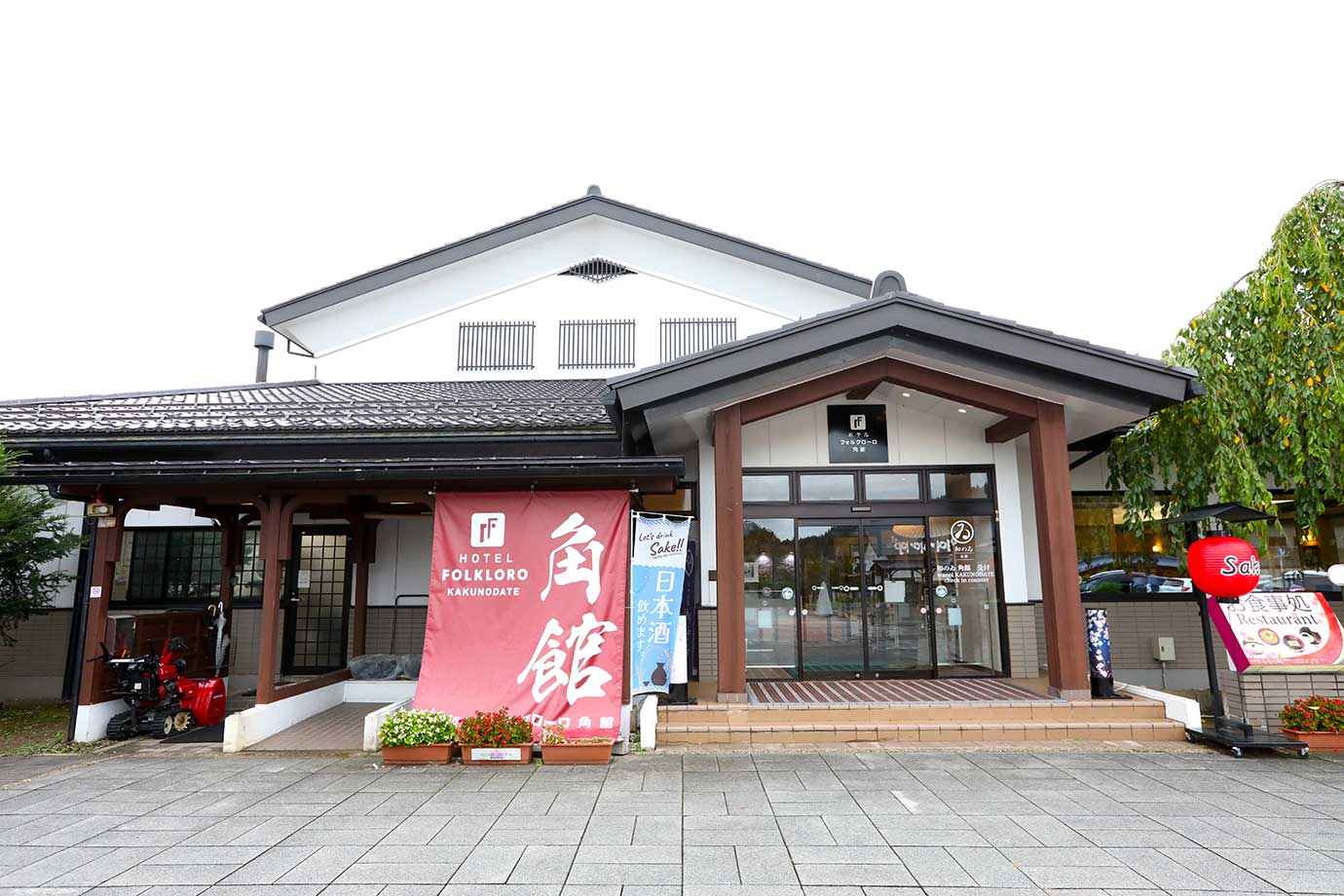
Located at the entrance to Kakunodate and Bukeyashiki, Hotel Folklolo Kakunodate is a 15-minute walk to Bukeyashiki Street. Start with sightseeing in Kakunodate, and then visit Lake Tazawa and Nyuto Onsenkyo. This is also a convenient base for travelers who wish to take the Akita Nairiku Jukan Railway connecting Kakunodate Station to Takanosu Station to view the satoyama scenery known as the “original landscape of Japan”.
Hotel Folklolo Kakunodate
Address:14 Nakasugasawa, Kakunodate-machi, Semboku City, Akita Prefecture
Phone:0187-53-2070
Check-in:15:00
Check-out:11:00
Costs:Please refer to the official website.
Wanoi Kakunodate
Stay at an Edo-Taisho period storehouse and experience a culture and lifestyle that Japan is proud of
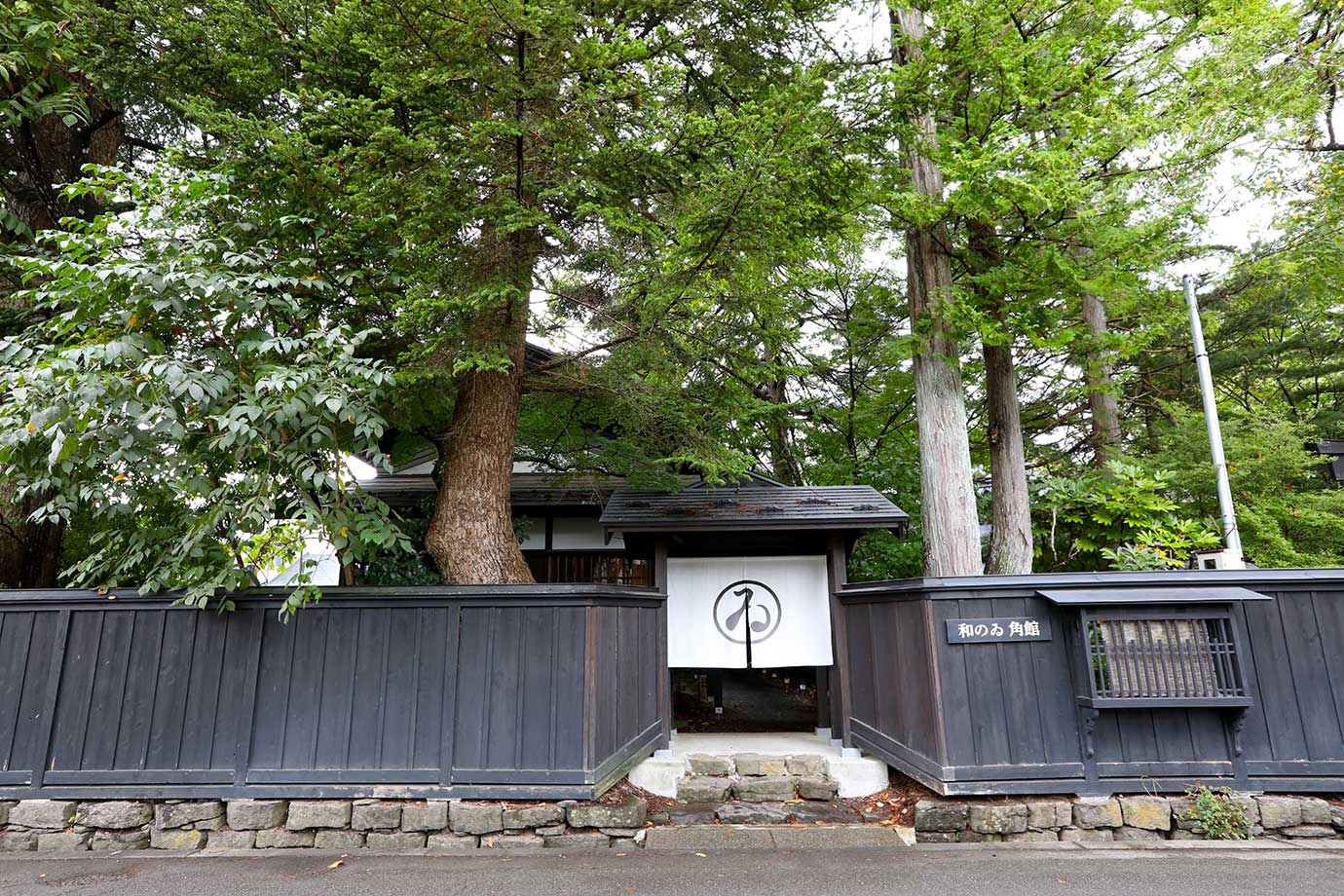
Kakunodate thrived as a castle town of the Satake Kita Clan during the Edo period. Even today, many samurai residences remain in the area, which has come to be known as “Michinokuno, Small Kyoto” thanks to its beautiful scenery, richly imbued with atmosphere. Located on Tamachi Bukeyashiki Street (Samurai Residence Street), Wanoi is a luxurious inn where guests can stay in a historic warehouse that is over 100 years old.
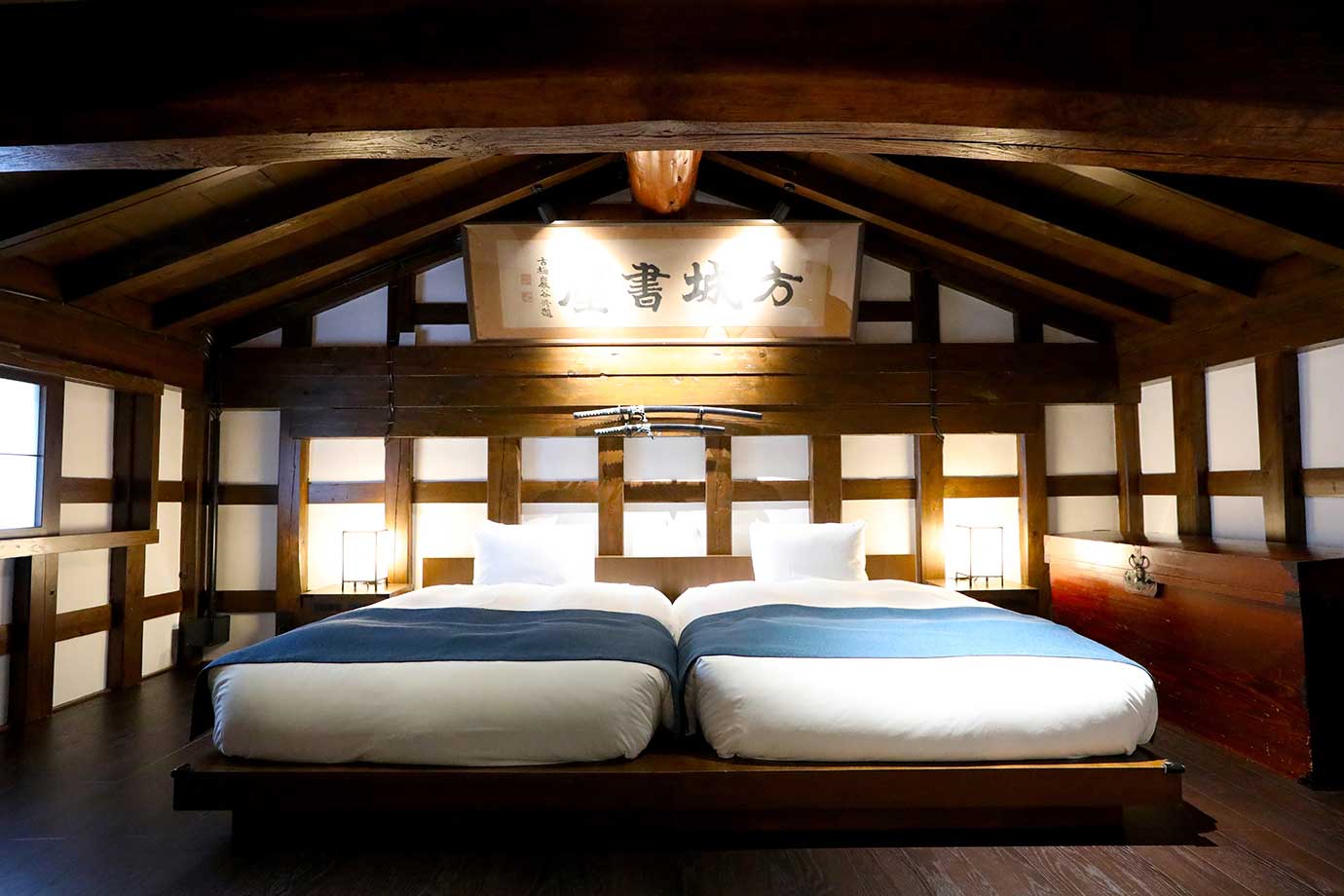
The ancestors of the Nishinomiya Family, based on Tamachi Bukeyashiki Street, were vassals of the Satake Clan and were renowned samurai. The Nishinomiya Family’s Bushigura Storehouse, Gakkogura Storehouse, and separate Tanmonogura Storehouse have been renovated and revitalized as lodging facilities. One of the storehouses can also be rented out for private use.
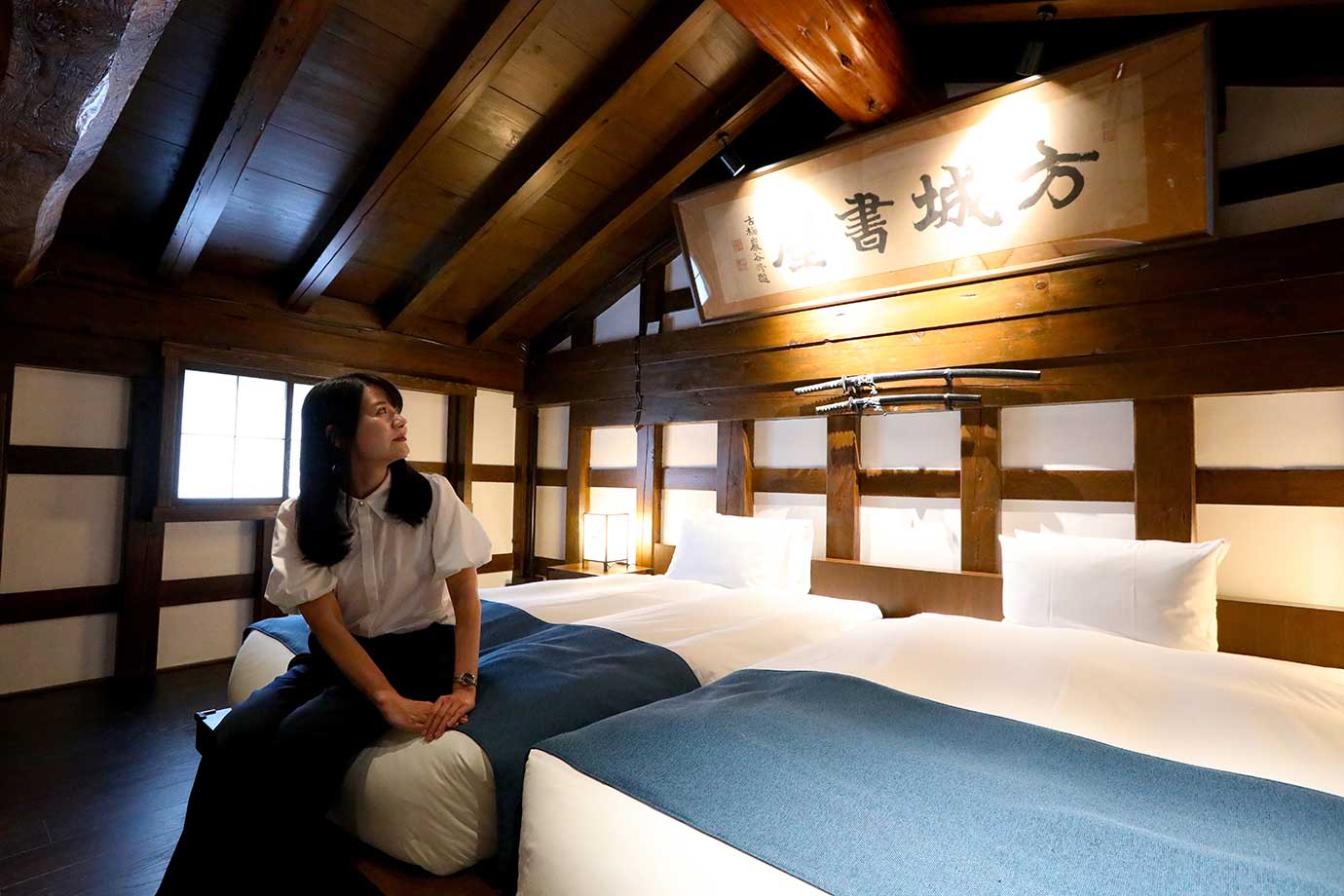
The bedrooms in the Bushigura Storehouse make use of traditional pillars and beams. A horizontal frame and sword are displayed by the bedside, giving visitors a taste of a samurai family’s simplicity and fortitude.
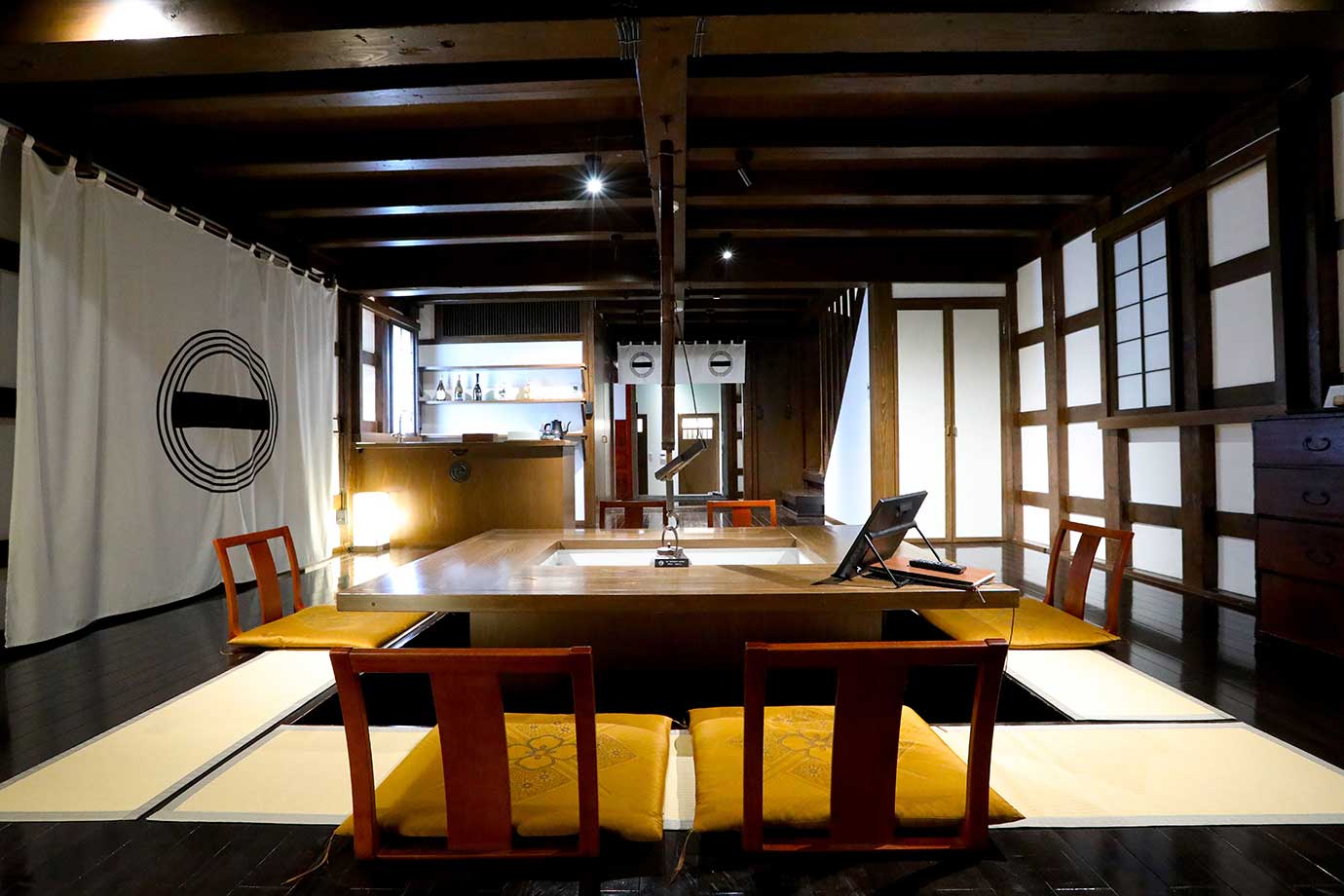
In the center of the living room is a sunken hearth, which is also decorated with jinmaku curtains and armor. The rooms are functional, with coffee, Japanese tea, mineral water, and a full range of amenities.
Bento style breakfast packed with produce from Kakunodate and Akita
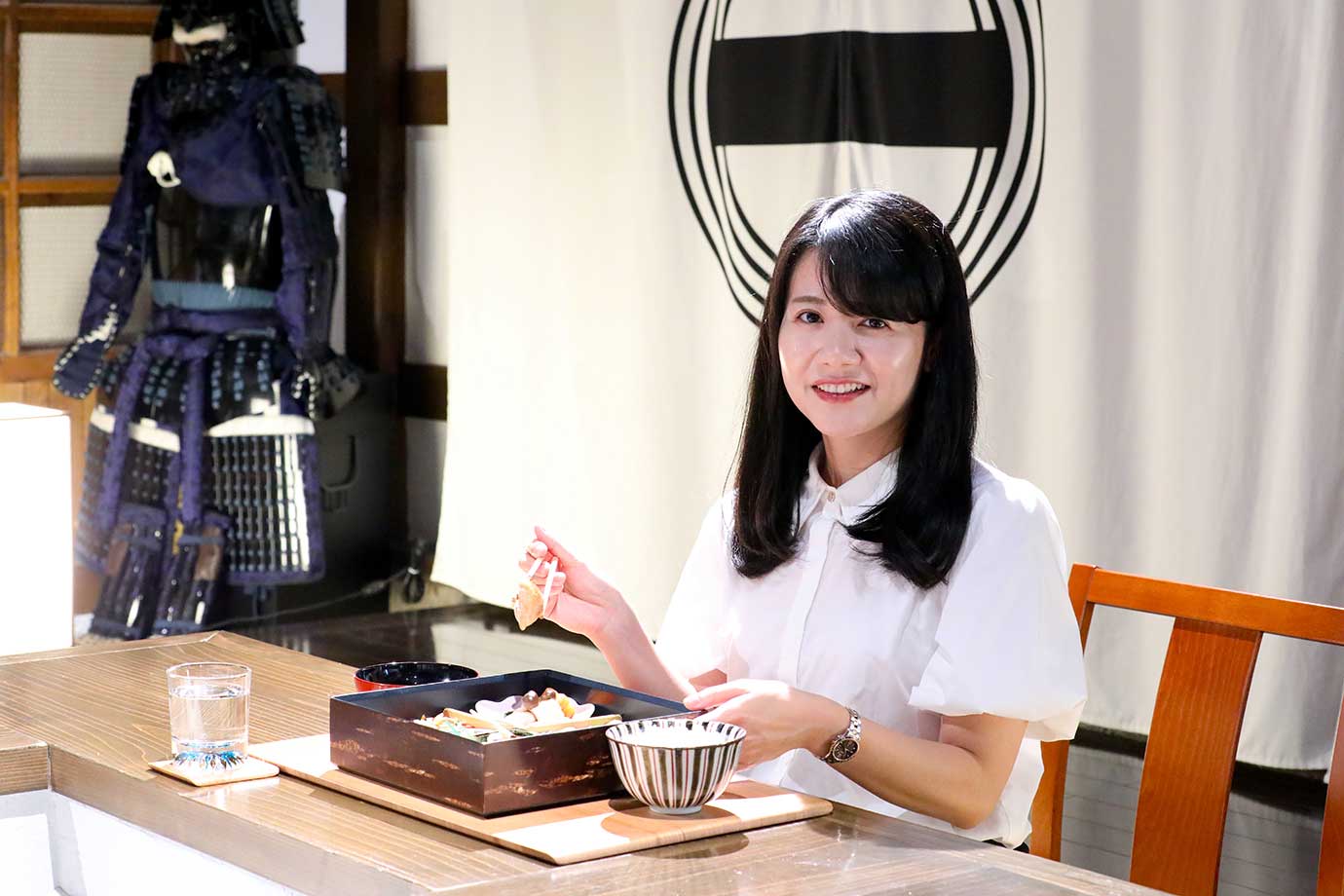
The following morning, a bento-style breakfast is delivered to your storehouse.
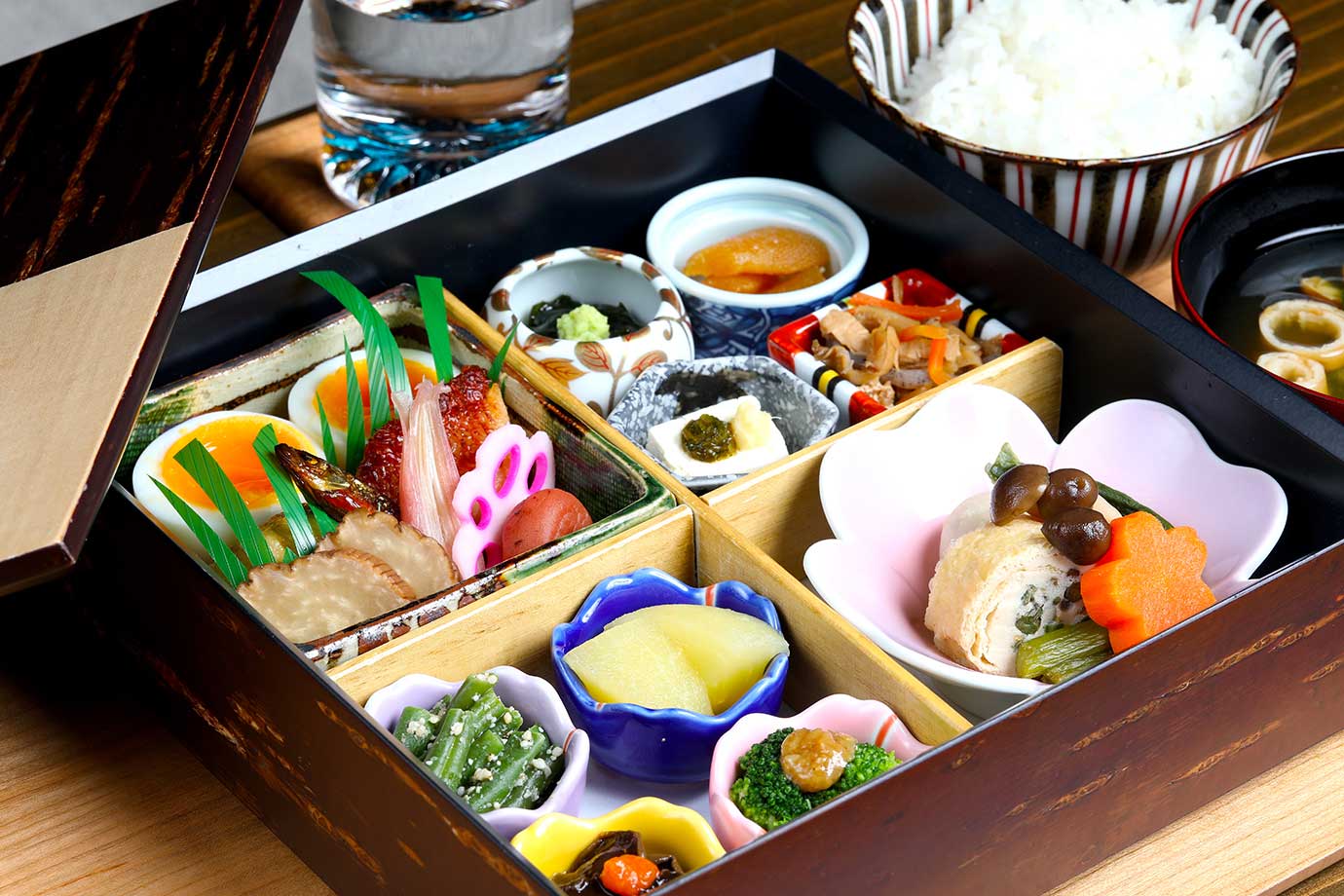
Breakfast is served in small colorful bowls with seasonal ingredients, including “Zengoro tofu with gibasa seaweed”, “Herring roe pickled Hideyoshi Kasuzuke style”, and “Grilled yuzuan-style rockfish” (the photo shows just an example). Meals are served with Akitakomachi rice and miso made by Ando Brewery. The food is beautifully served in kaba-zaiku (birch-work) tableware.
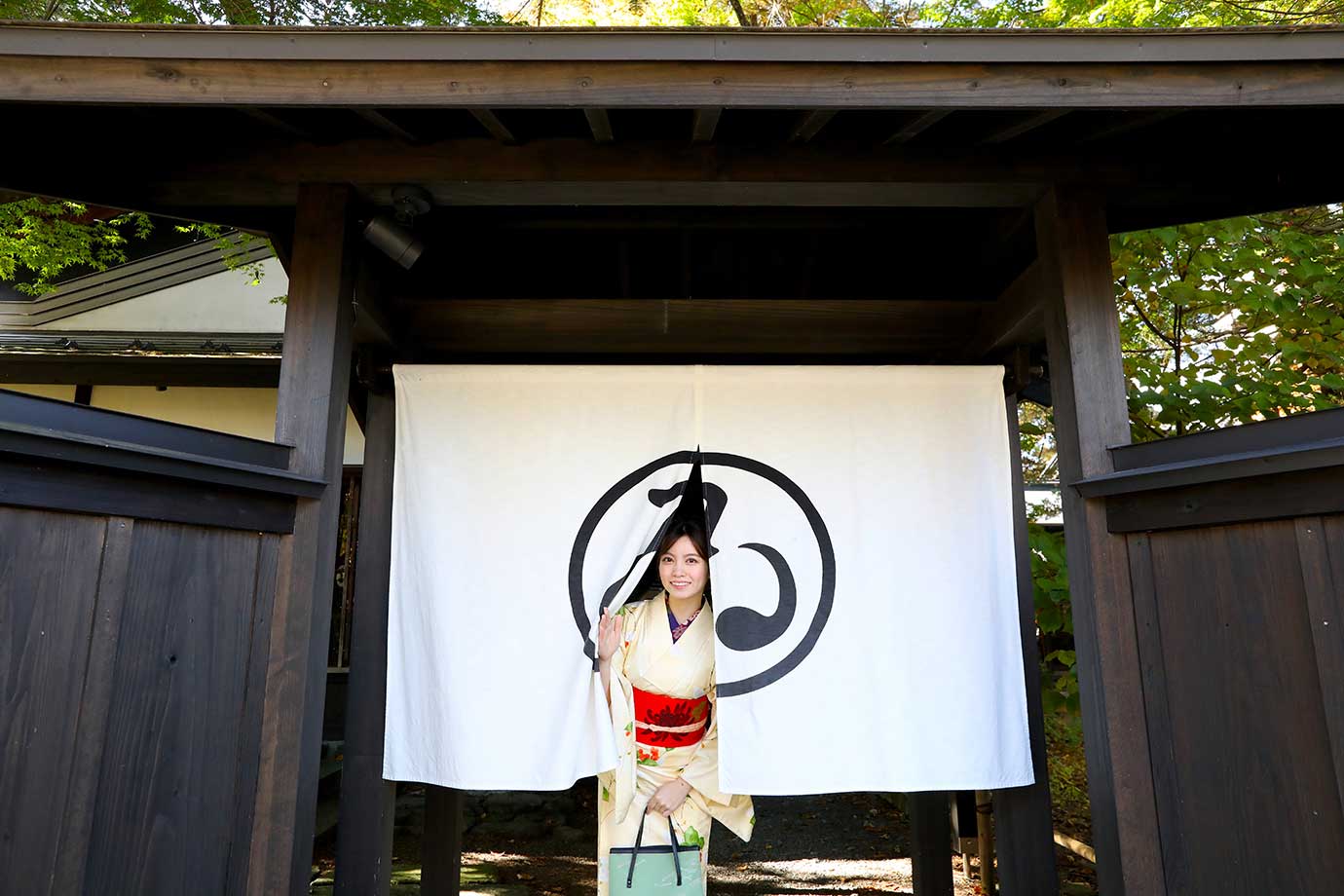
Each of the three storehouses has a different atmosphere: the Gakkogura Storehouse is equipped with a bathtub in the motif of a pickle barrel, whereas the Tanmonogura Storehouse has a theme of beautiful kimonos and fabrics. Stay in a museum-like historical building and experience a culture nurtured in Akita.
Wanoi Kakunodate
Address:Kakunodate-machi, Semboku City, Akita Prefecture
Tel:0187-53-2774(Hotel Folklolo Kakunodate)
Check-in:15:00
Check-out:11:00
Costs:Please refer to the official website.
*To get to Wanoi, check in at the Hotel Folklolo Kakunodate, and then take a shuttle or private car, or walk to the hotel.
Suzuki Brewery
Recommended for sake lovers! Enjoy a tour and sake tasting at the “Hideyoshi” Sake Brewery
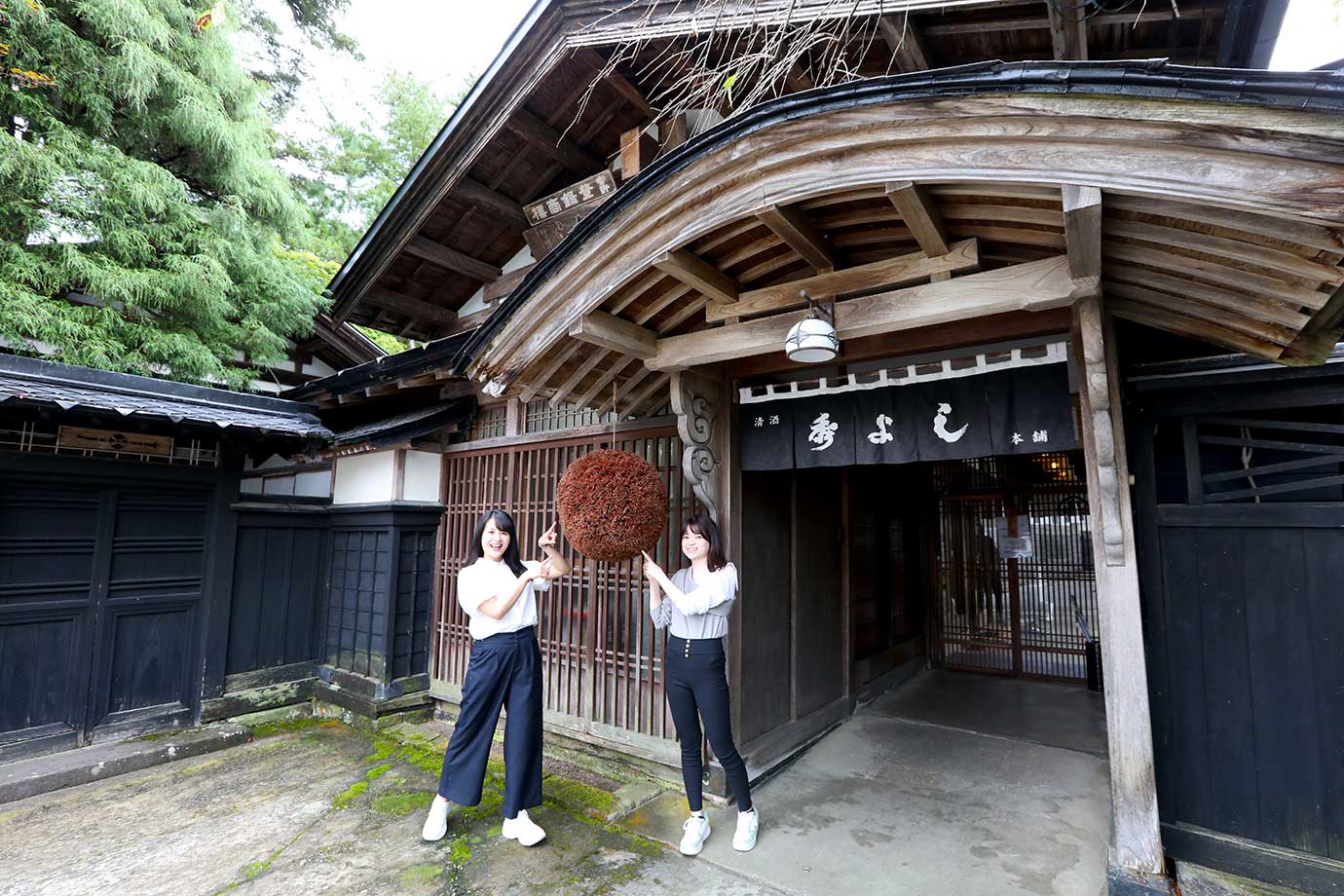
We visited Suzuki Brewery, established in 1689 and famous for its Hideyoshi sake brand. The long-established brewery was an official purveyor to the Satake Clan during the Edo period, and was named after Lord Satake, who recognized it as “excellent (Hide) and pleasing (yoshi)”. On the Sake Brewery Sightseeing tour, visitors can observe the historic sake brewing process.
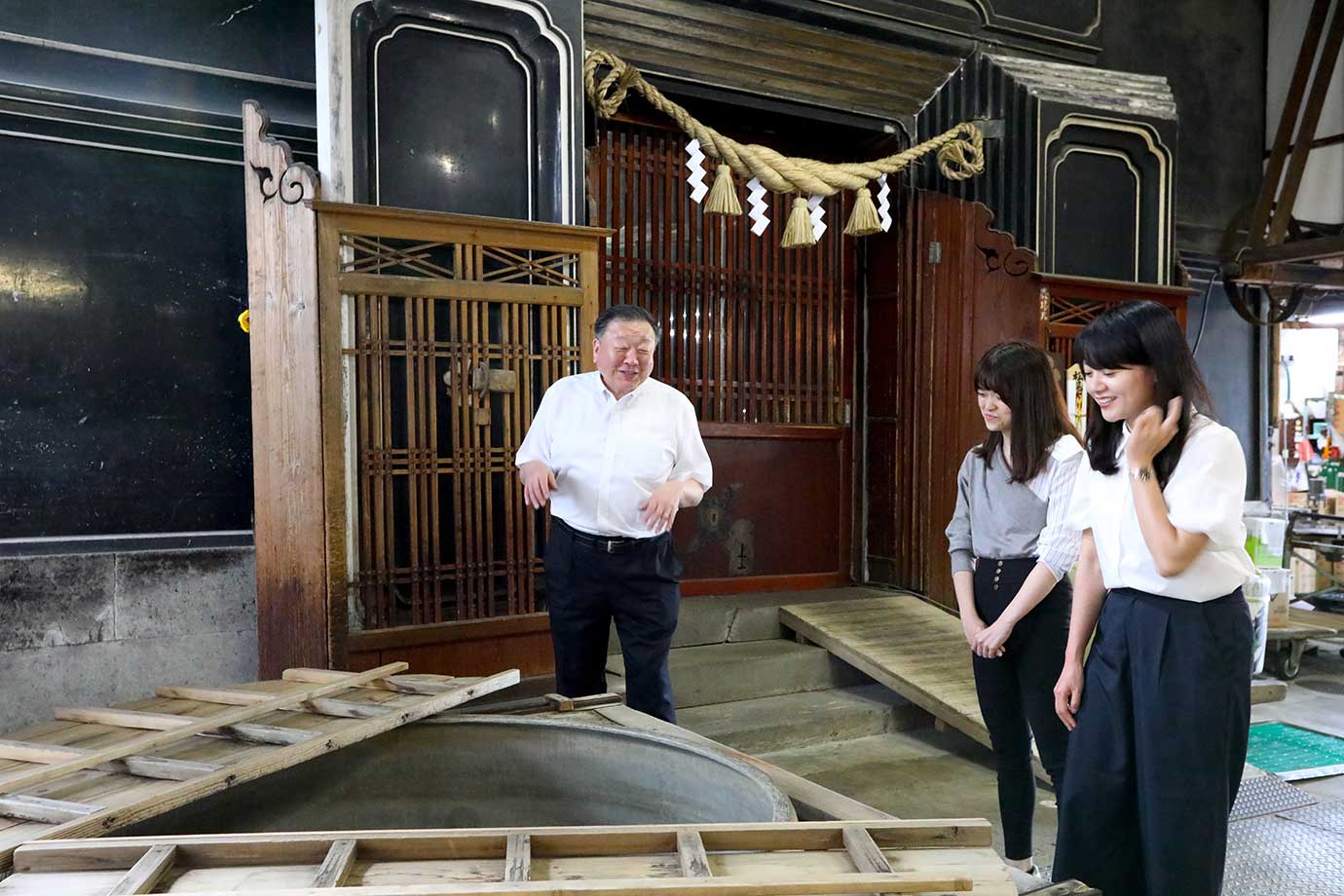
The representative of the company, Matsuemon Suzuki, welcomed us with a smile. Before us lay a huge Japanese style vat, 160 cm deep. The vat has been used to steam rice for countless years, and is still in use today.
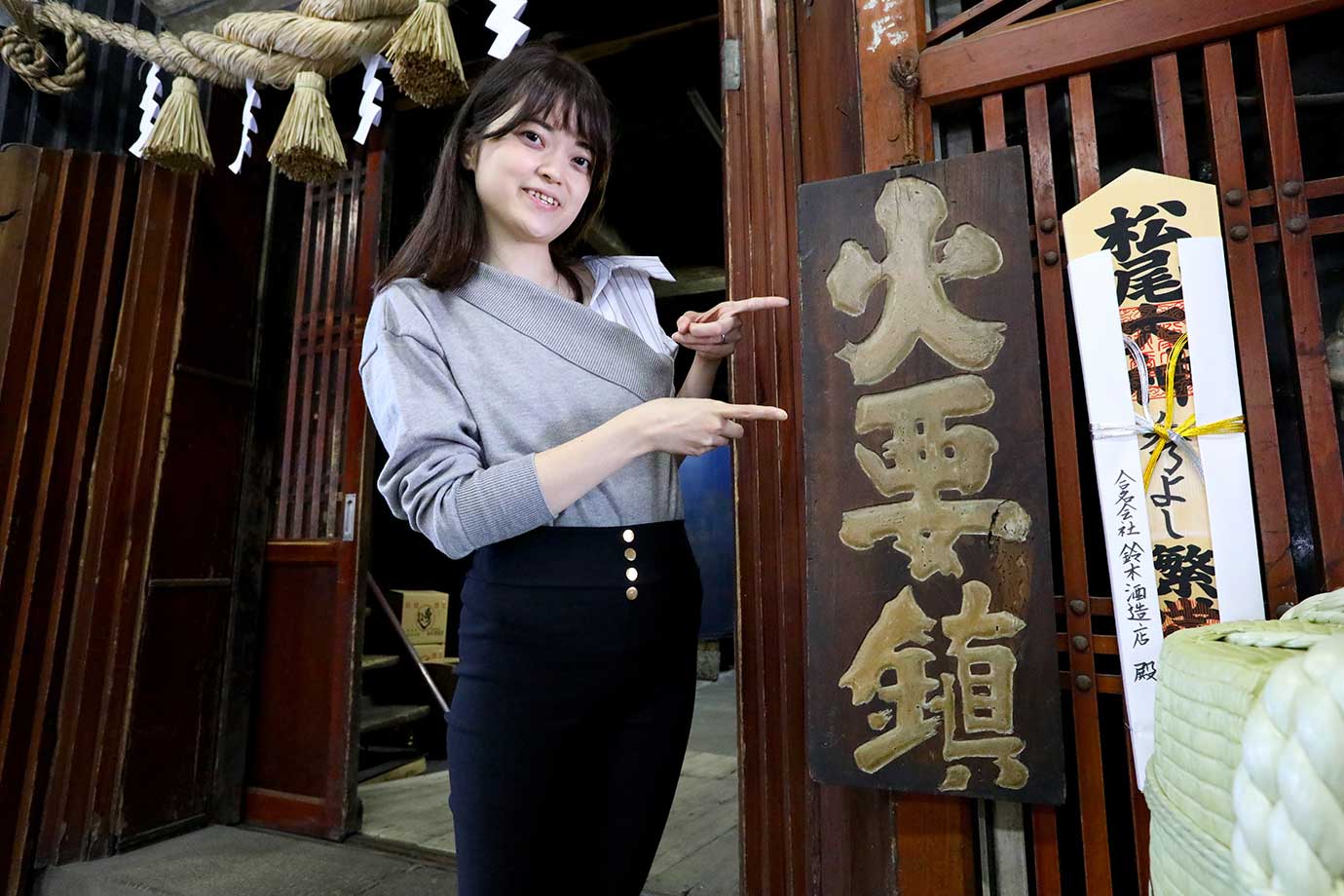
Next to the vat there is a historical sign reading “Hi-no-Yojin” (beware of fires) and a wooden plaque honoring Matsuo Shrine, the god of brewing.
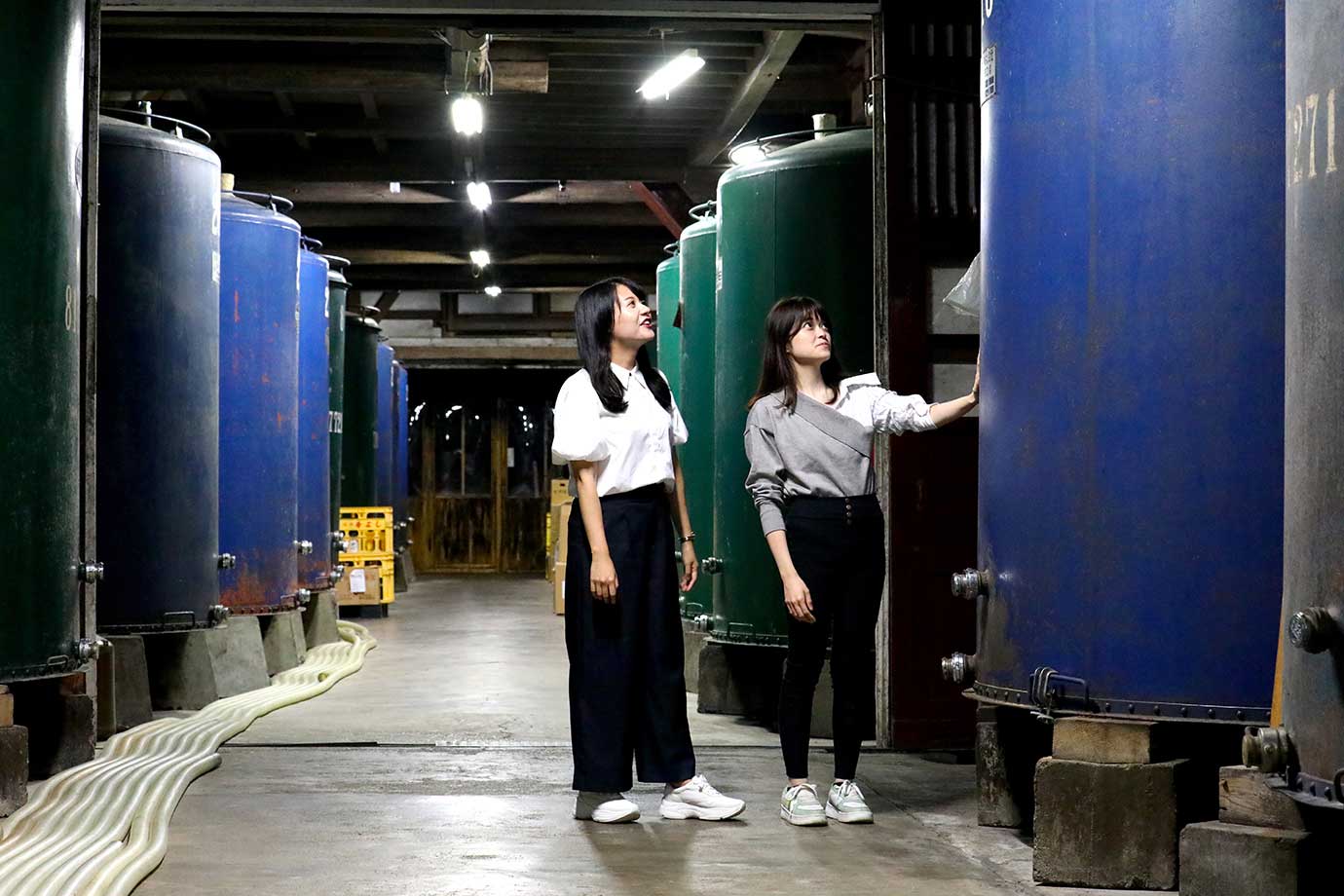
The cellar is lined with large tanks.
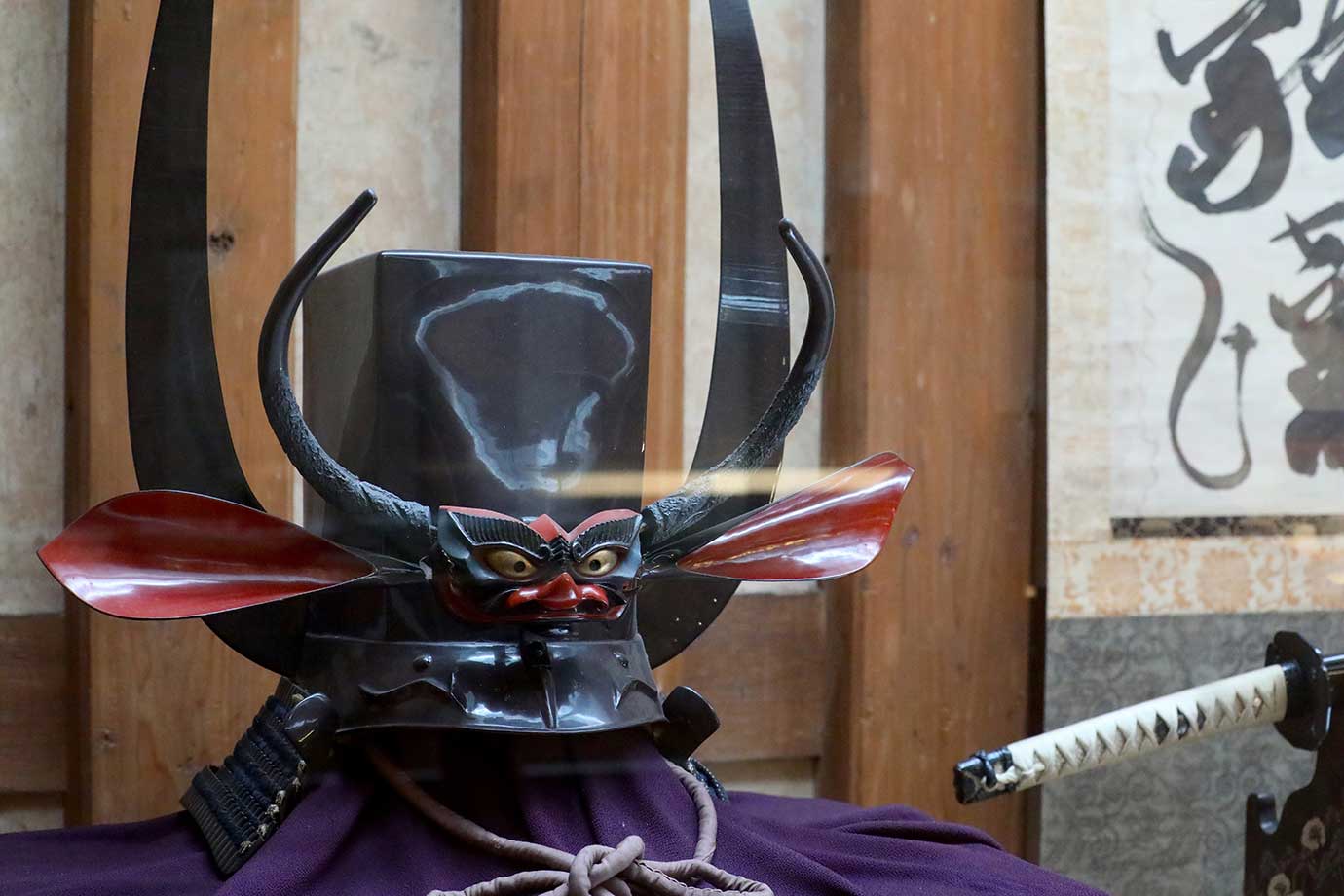
The adjoining Bunkogura storehouse exhibits items from the Suzuki family collection, including sake brewery biographies and antiques. The Black Painted Horned Head Helmet was a gift from Nobunaga Oda to Hideyoshi Toyotomi, and later received by the Satake Clan as a precious heirloom.
A blissful drink to be enjoyed with a variety of dishes
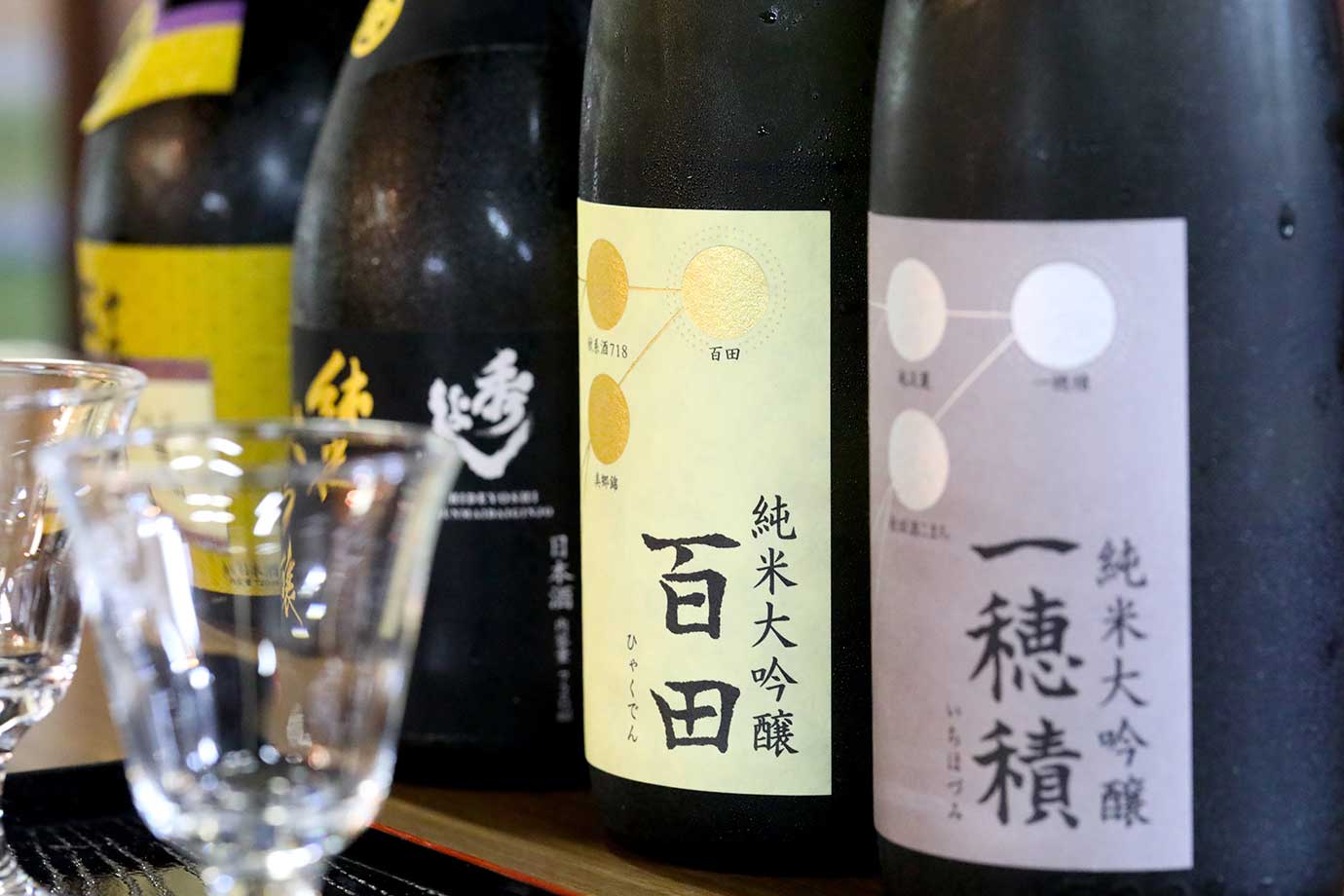
After the tour, we moved on to the shop. Visitors can compare the best sake of the season, including Junmai Daiginjo made using Akita’s “Hyakuden” and "Ichihozumi" rice, which are suitable for sake brewing. Please choose your favorite sake to buy as a souvenir.
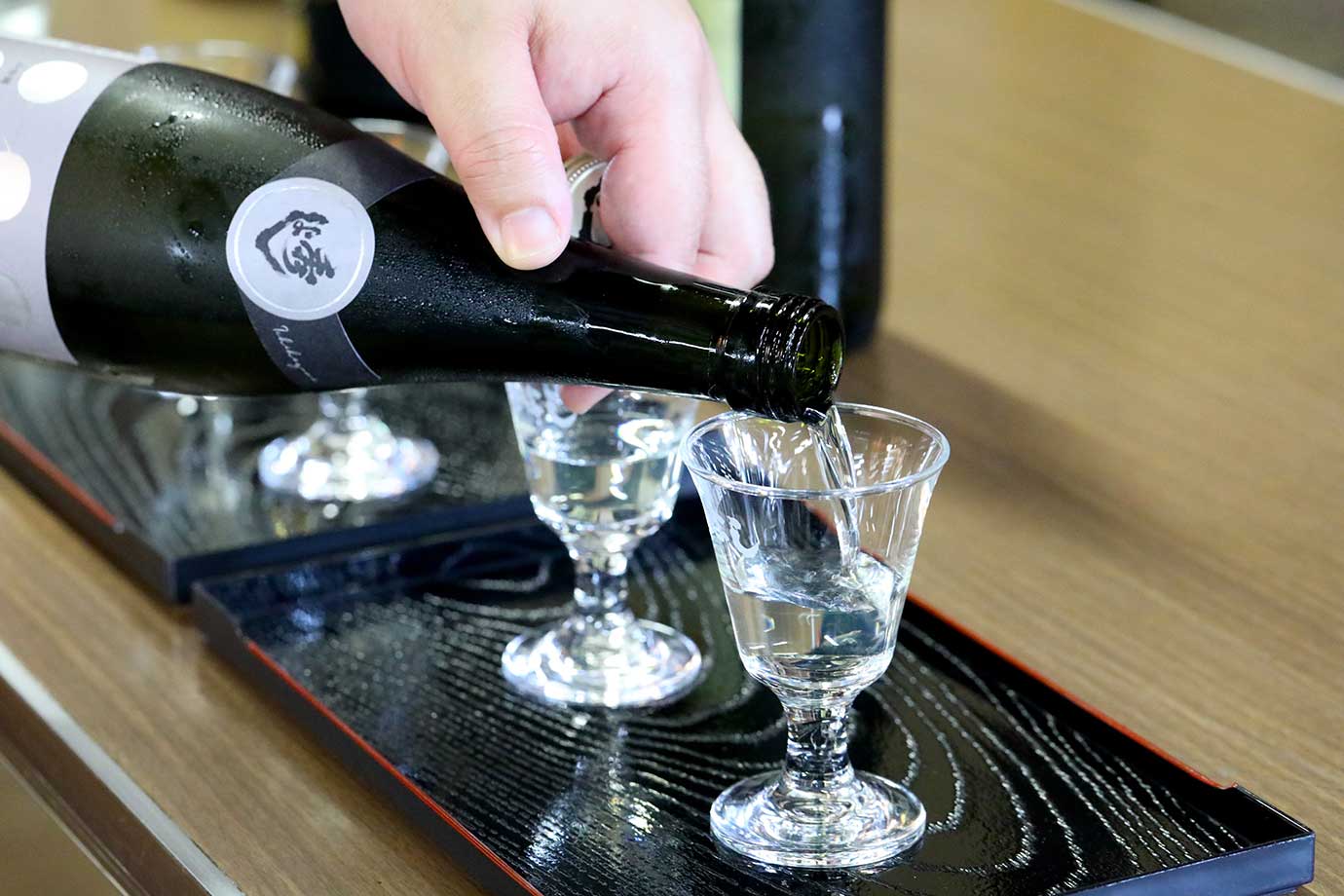
Enjoy the gorgeous aromas and full flavors that have been cultivated over many years.
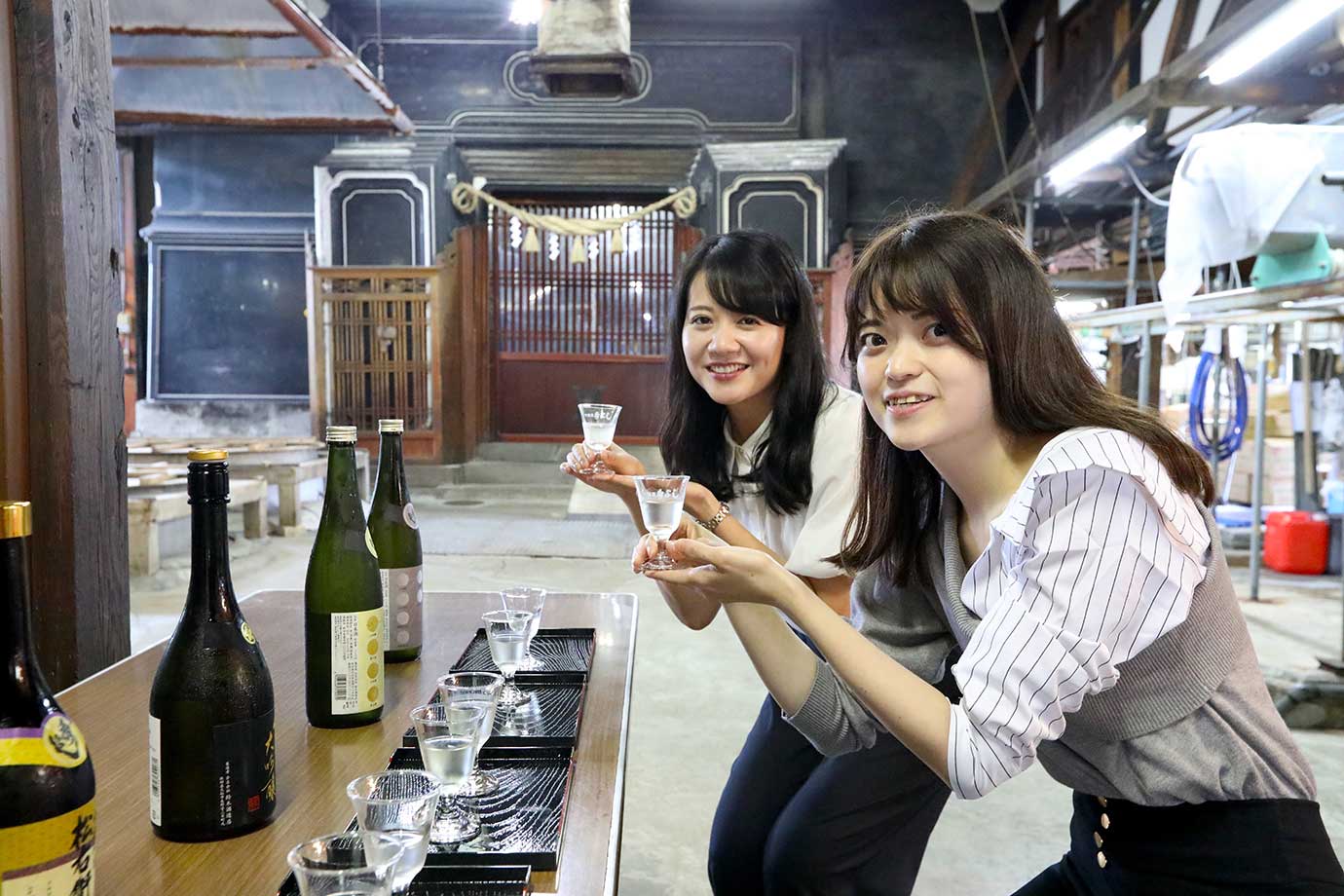
Even the hotel staff, who are familiar with the local area, couldn’t help saying “delicious” with every sip! This reconfirms just how good the local sake tastes.
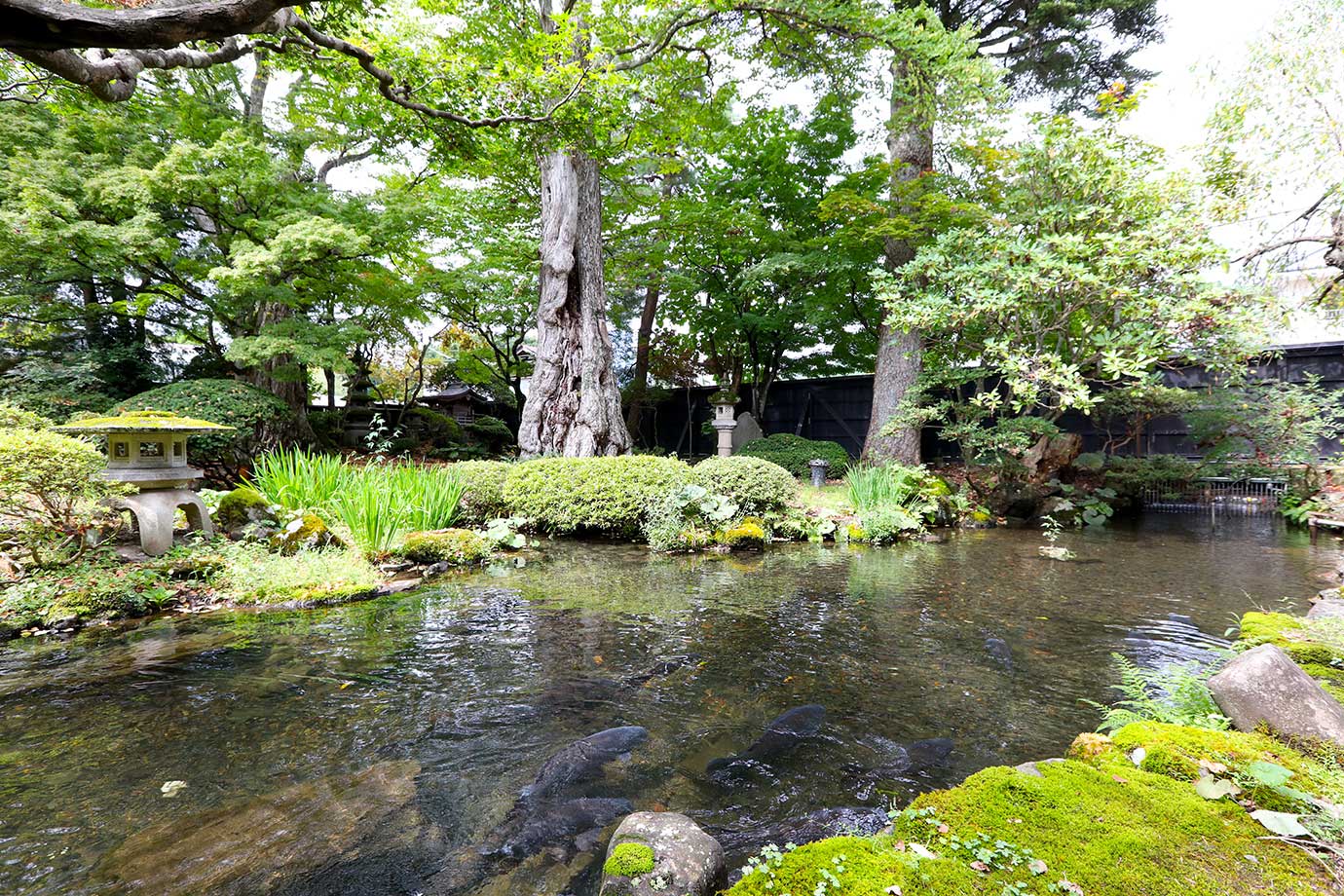
Outside, there was a beautiful garden and a stream with carp swimming leisurely.
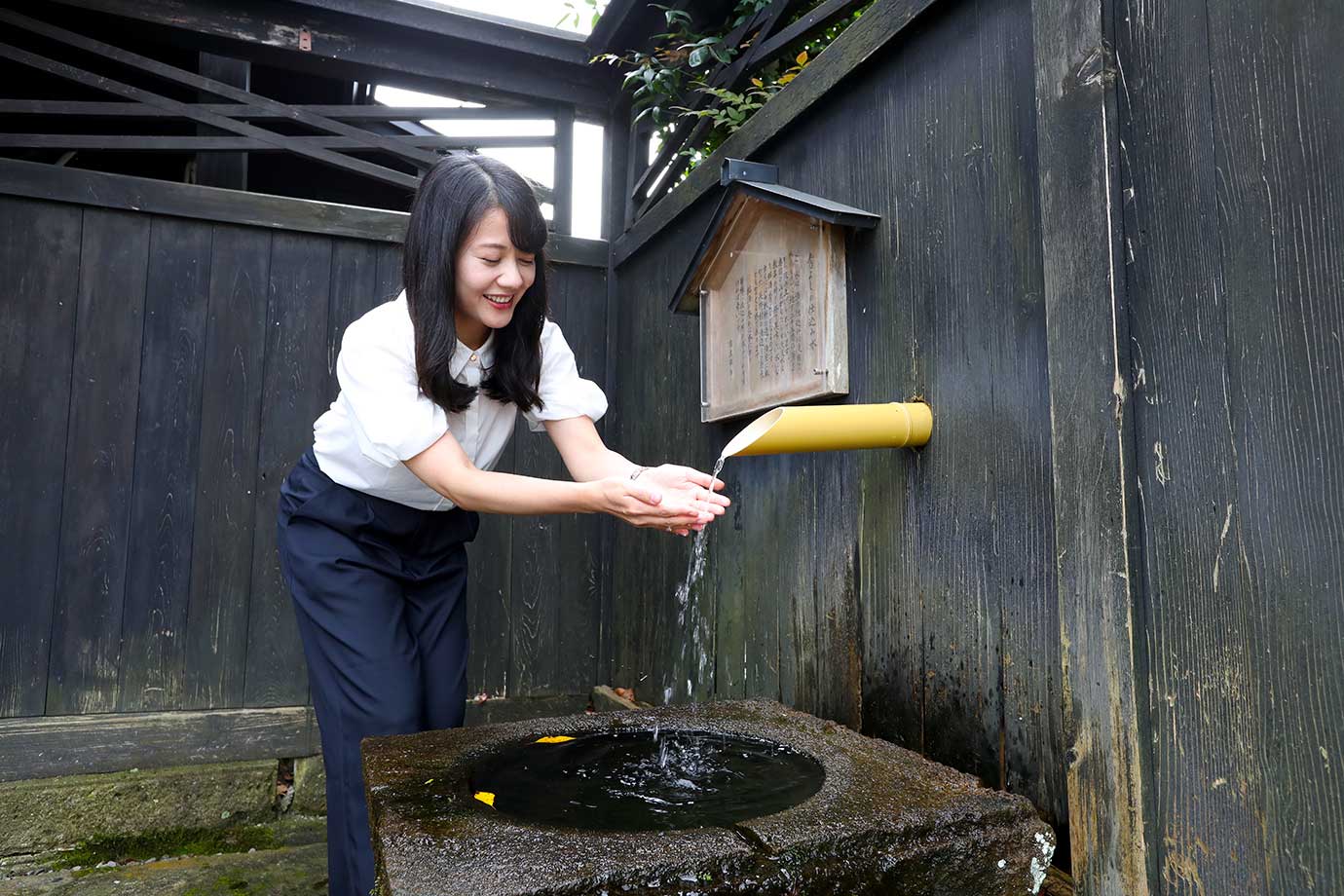
The “brewing water” that flows down the right side of the main entrance is, as the name implies, water used for brewing sake. Subterranean (Ground) water from the Ou Mountain Range is said to be drawn form 45 meters underground.
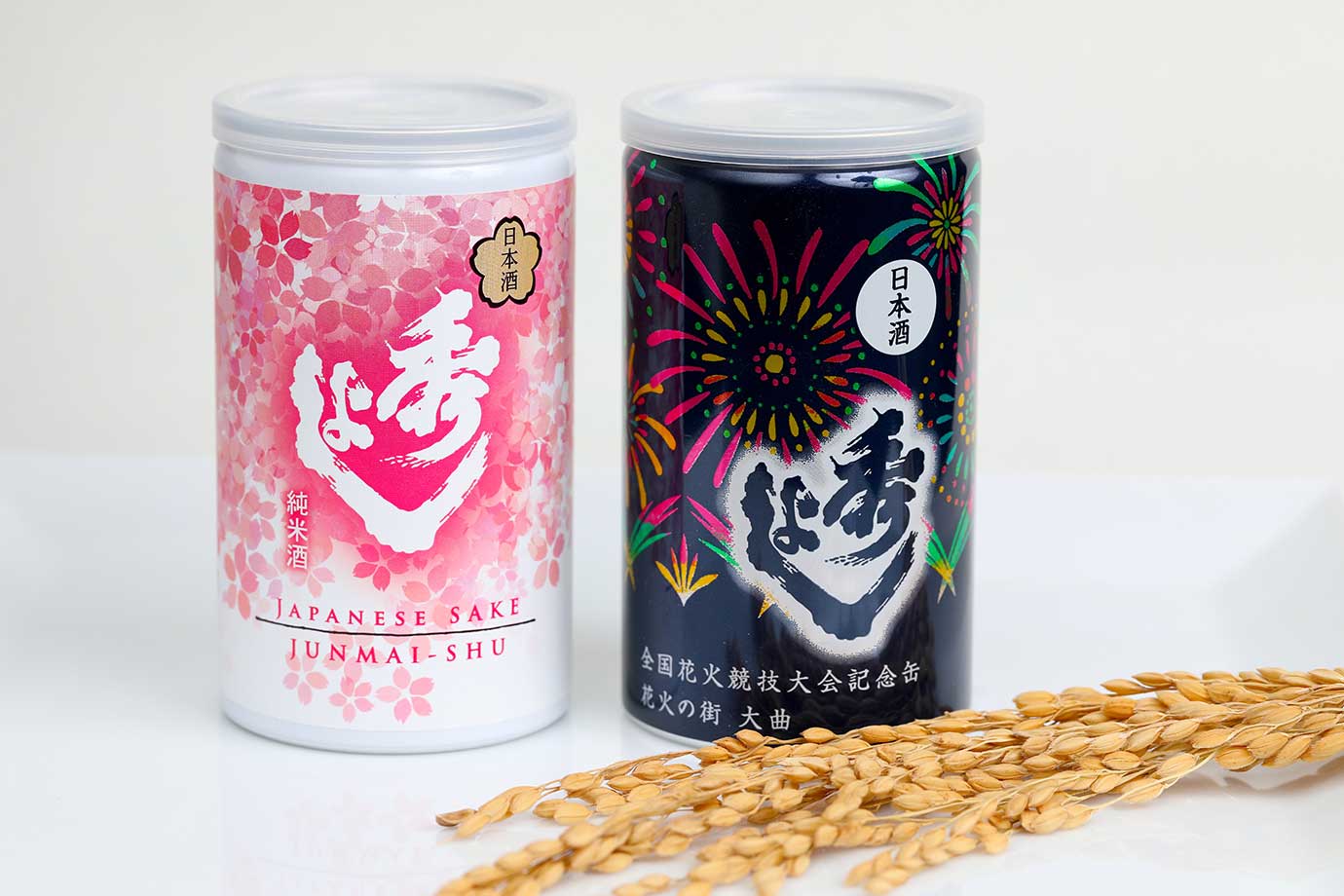
I discovered some one-cup sakes that were very easy to drink. The Hideyoshi “Hanami Can” (286 yen) (on the left) is a special junmai sake in a beautiful cherry blossom package. The “Hanabi Can” (on the right), priced at 253 yen, is a honjozo sake. Scanning the QR code allows you to view highlights of the Omagari National Fireworks Display and a video introducing the “Hideyoshi” Sake Brewery.
Suzuki Brewery
Address:9 Futsukamachi, Nagano, Daisen City, Akita Prefecture
Phone:0187-56-2121
Fee:500 yen for the sake brewery tour (reservation required)
Opening times:9:00-12:00, 13:00-16:00 (sake brewery tours start at 11:00 and 14:00. From October 15 to the end of March, tours are held at 13:00 and 14:00)
Closed:temporary closures occur
Ando Jyozo Honten
Visit the oldest kurazashiki storehouse in Tohoku, with a long history of natural brewing
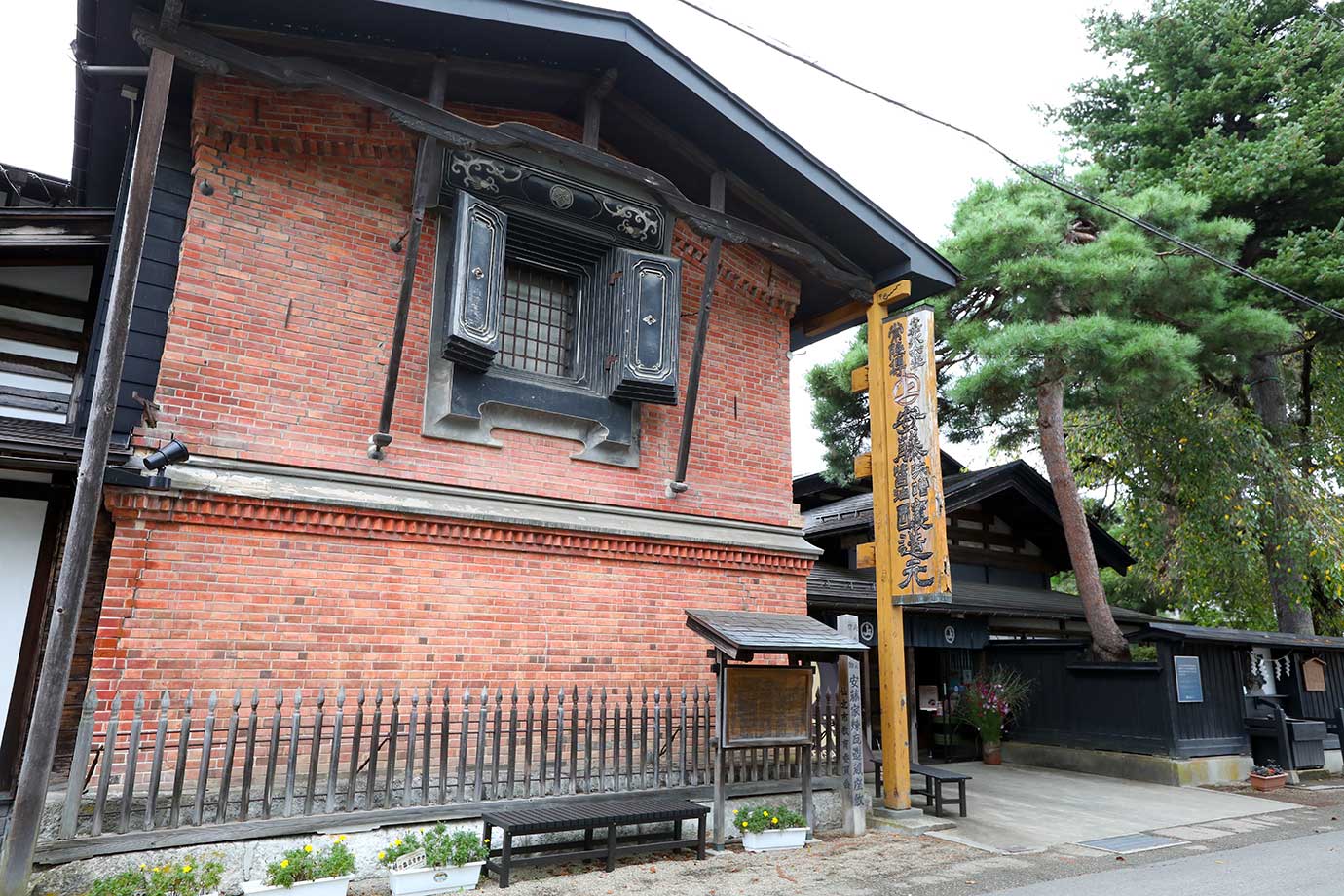
In the past, a public square in the center of Kakunodate known as a “hiyoke” was used for fire protection. The area was divided into “Uchimachi” in the north, where samurai lived, and “Tomachi” in the south, where the merchants lived. Ando Jyozo Honten, located in Tomachi, is a miso and soy sauce brewer established in 1853. The brick kurazashiki storehouse, built in the mid-Meiji period, is said to be the oldest in the Tohoku region.
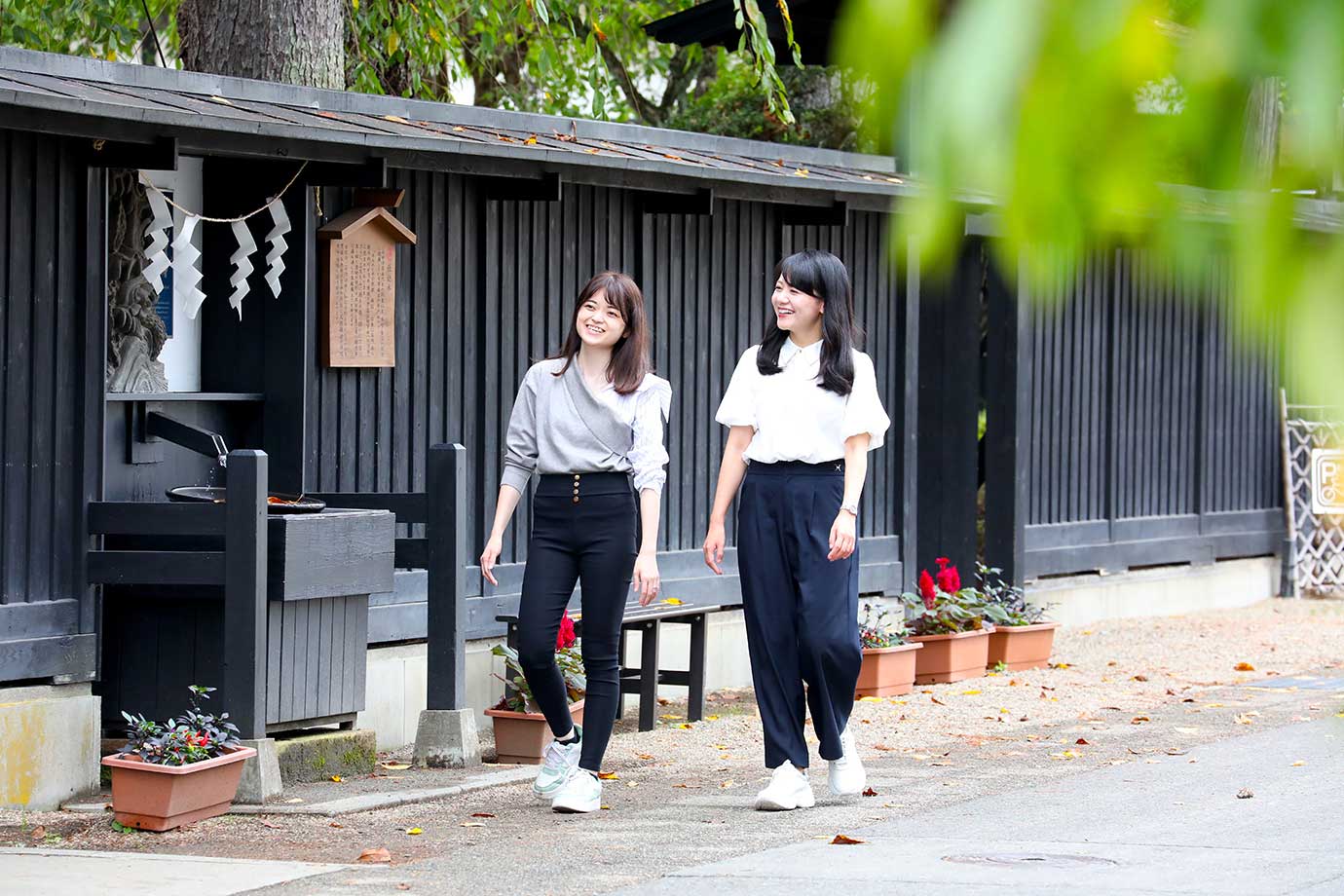
The historical buildings are surrounded by blackboard fences. Next to the entrance, I found a spot where you can drink the “brewing water”.
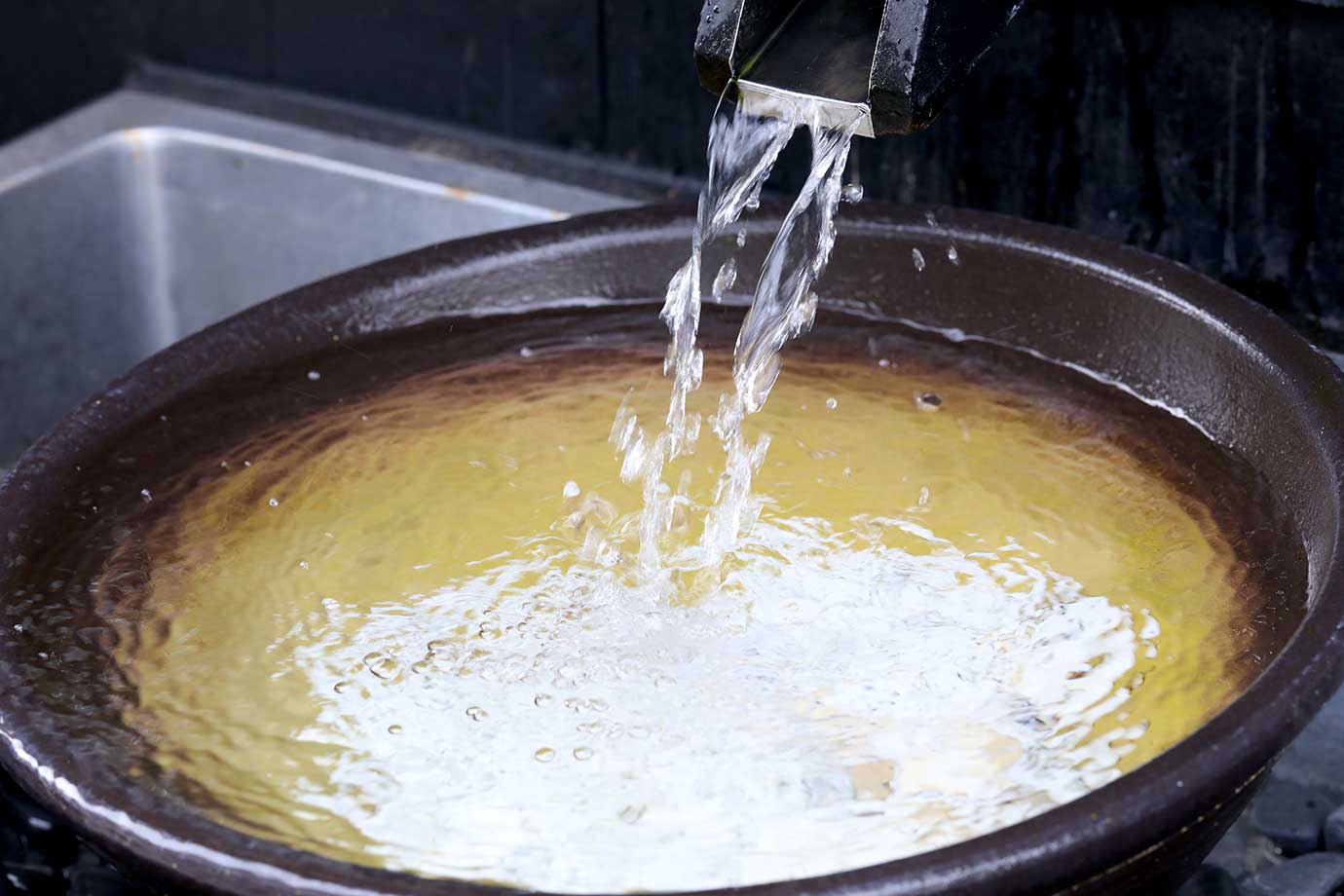
This is the Ando family’s well water that has been used to brew miso and soy sauce ever since the company was founded. Everyone is free to quench their thirst here.
Mild and flavorful fermented foods that will leave you wanting more after tasting
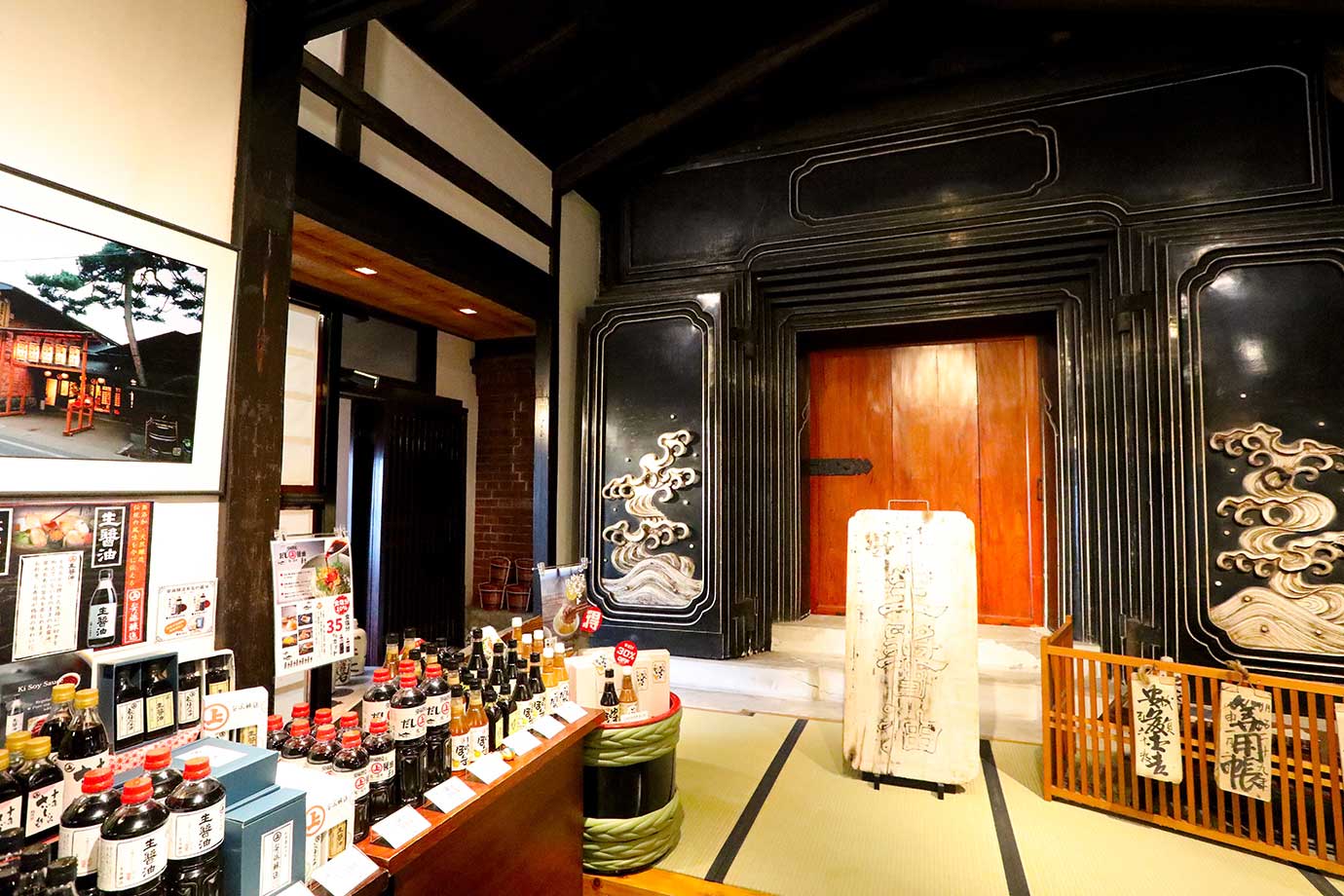
The store sells miso and soy sauce made by a toji (master brewer) using traditional methods, with a focus on “naturally brewed” products. Trial sizes and assortments make great souvenirs.
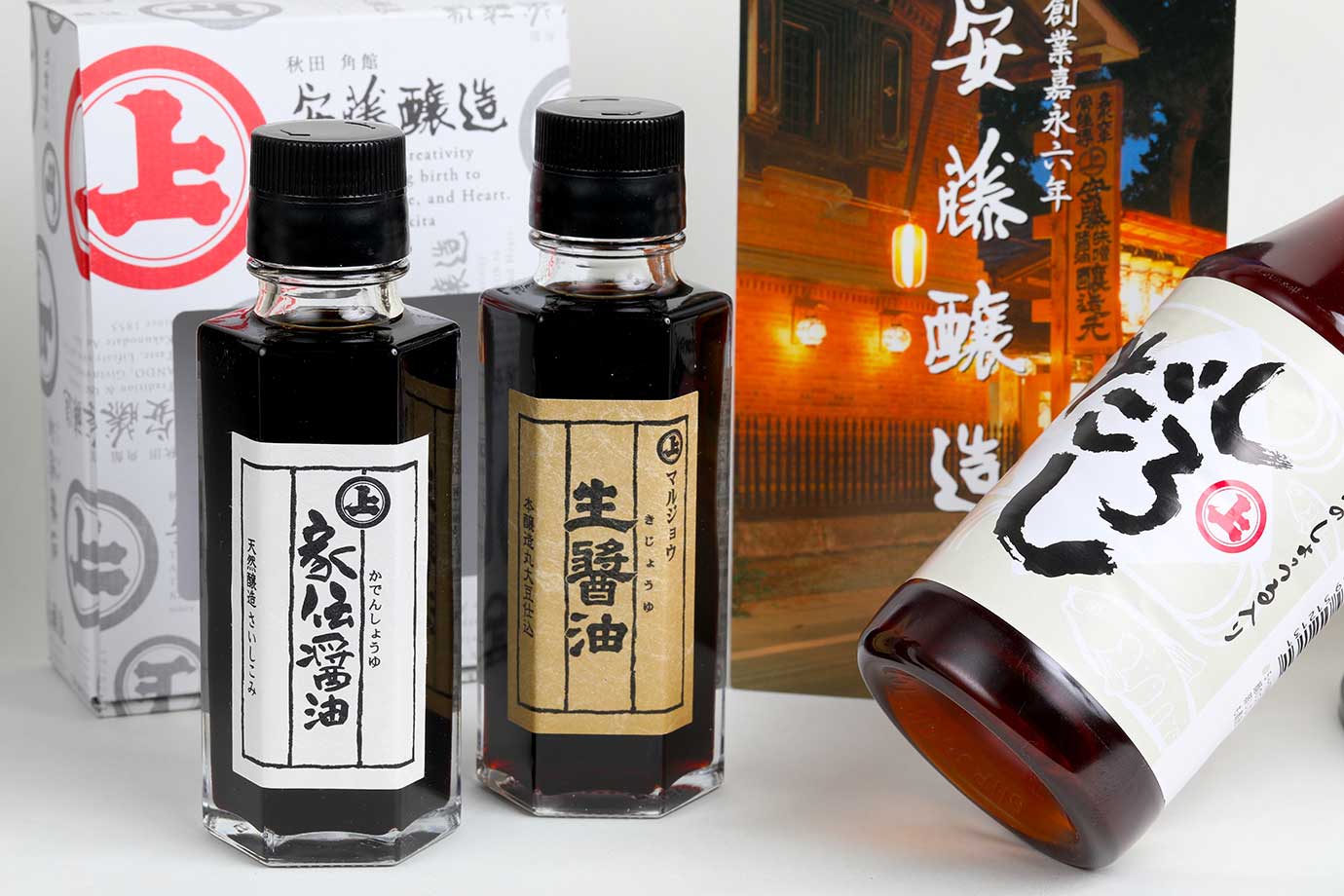
The most popular “Shirodashi” (896 yen) (on the right) is a mild dashi containing bonito and kelp dashi, as well as char shottsuru (a salted and fermented fish sauce made in Akita).
The “Soy Sauce Mini Set” (1,188 yen) (on the left) is a set of twice-brewed “Kaden Soy Sauce”, as well as “Nama Soy Sauce” made from fermented and aged soy sauce and bottled as pressed.
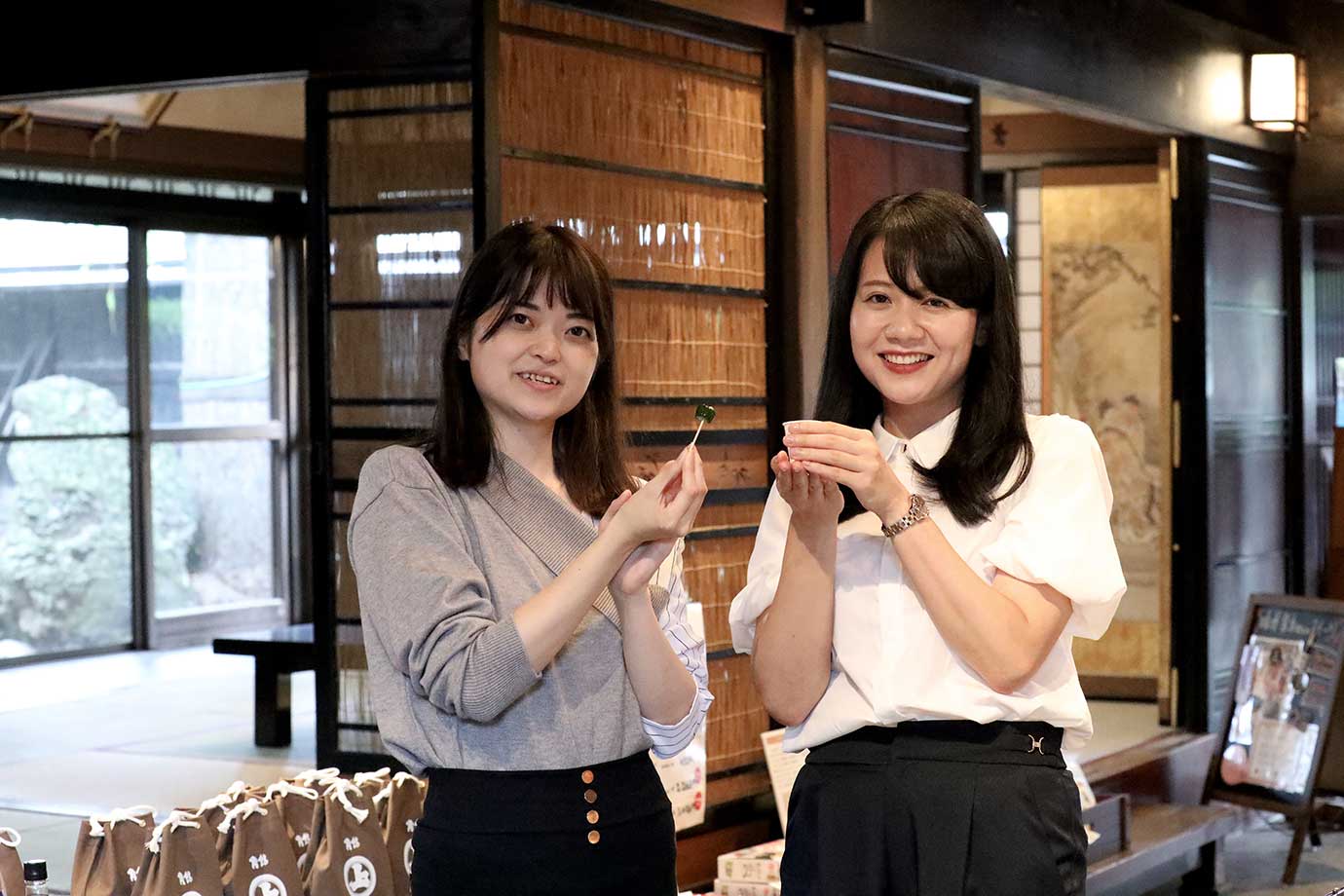
Products such as Shirodashi and pickles are available for tasting, so you can buy them after tasting.
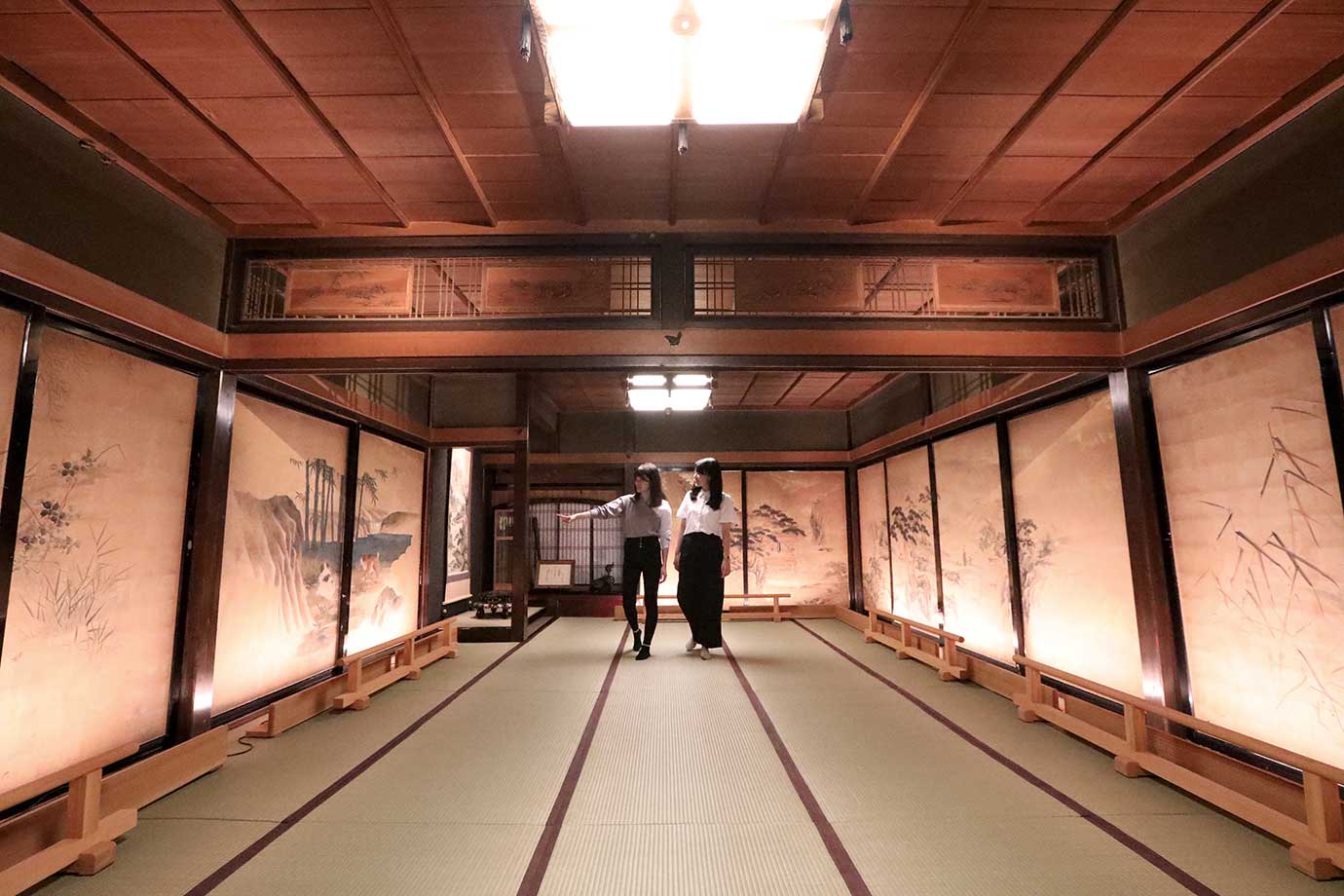
The kurazashiki storehouse is open to the public and free of charge. The fusuma paintings by Reiwa Nishinomiya, a disciple of Suian Hirafuku, are a must-see.
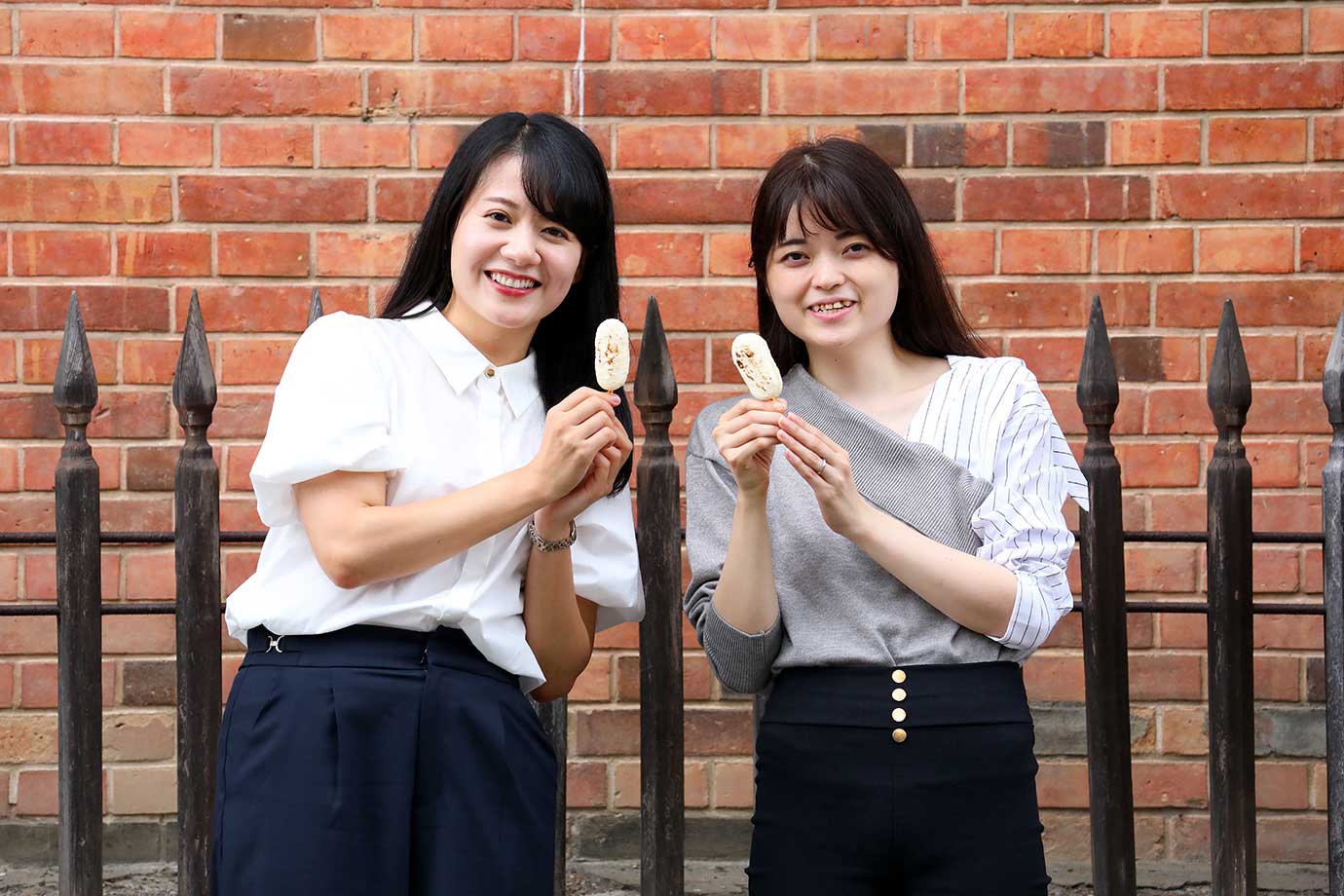
The store also sells sweets made from miso and soy sauce. The “Miso Macaroon” I bought became a trusted travel companion for me!
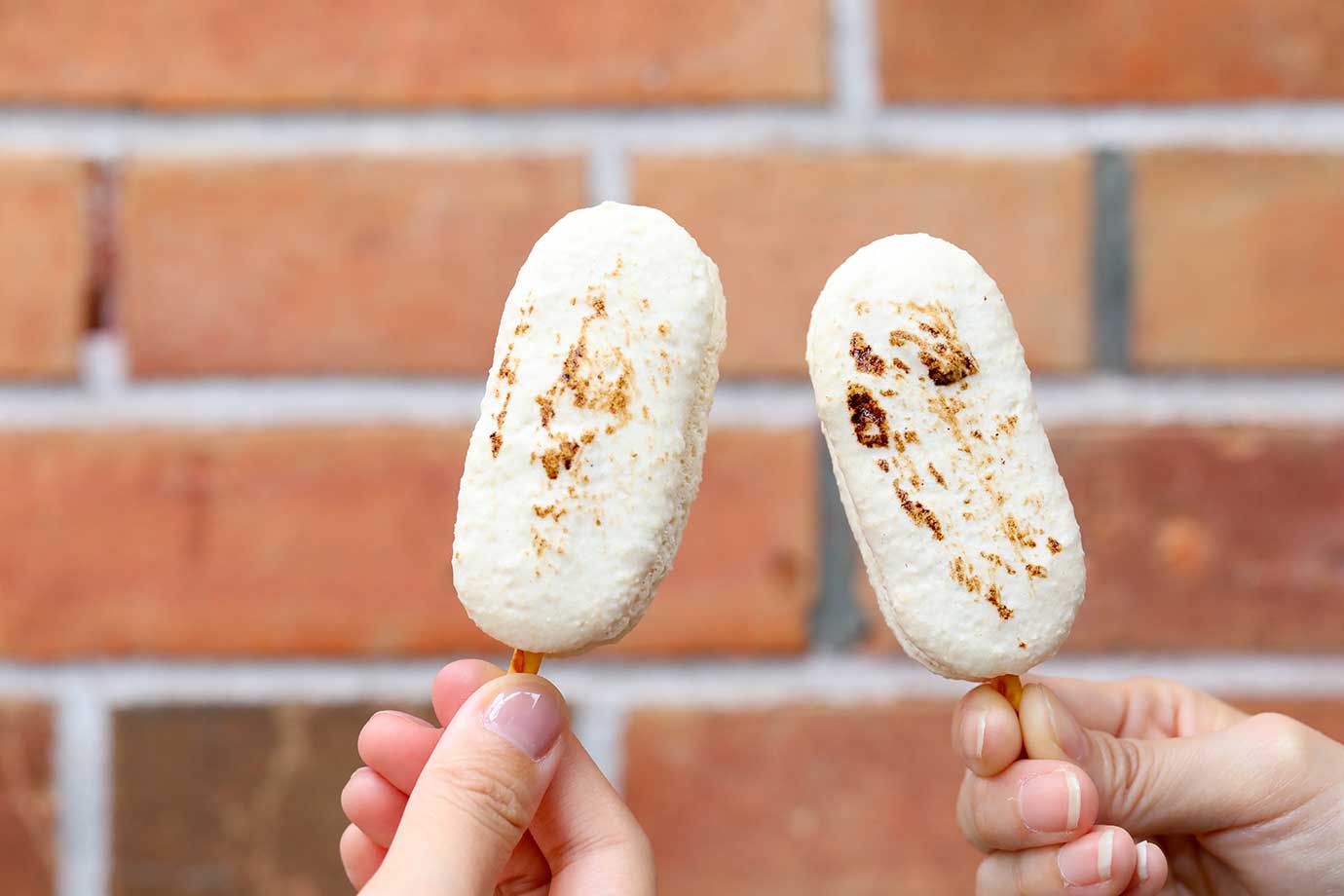
The Kiritanpo-like “Miso Macaroon” (432 yen) is made using Ando Jyozo’s “Tokujo Tsubu Miso”. It was developed by local high school students and patisserie. The stick-type macaroons are flavored with miso.
Ando Jyozo Honten
Address:27 Shimoshin-machi, Kakunodate-machi, Semboku City, Akita Prefecture
Phone:0187-53-2008
Hours:8:30 to 17:00
Closed:Open every day
REGAL RITZ
Chestnut sweets available all year round at Kakunodate’s only store specializing in Mont Blanc
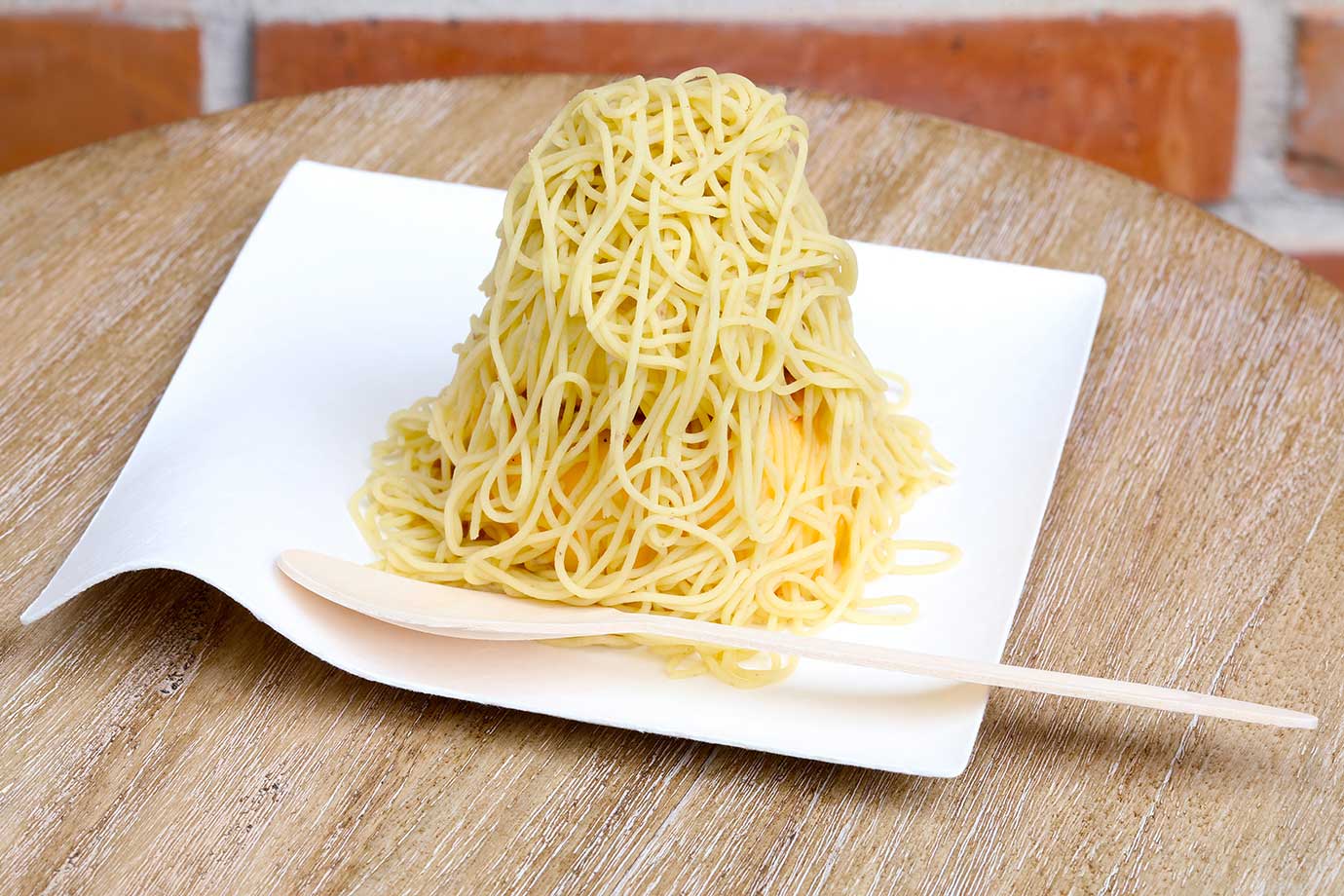
REGAL RITZ, which renovated a 120-year-old koji warehouse, specializes in Mont Blanc sweets made using local Saimyoji chestnuts, Japanese chestnuts, Western chestnuts, and various other chestnuts. The most recommended item is the pictured “freshly piped Mont Blanc”, priced at 890 yen.
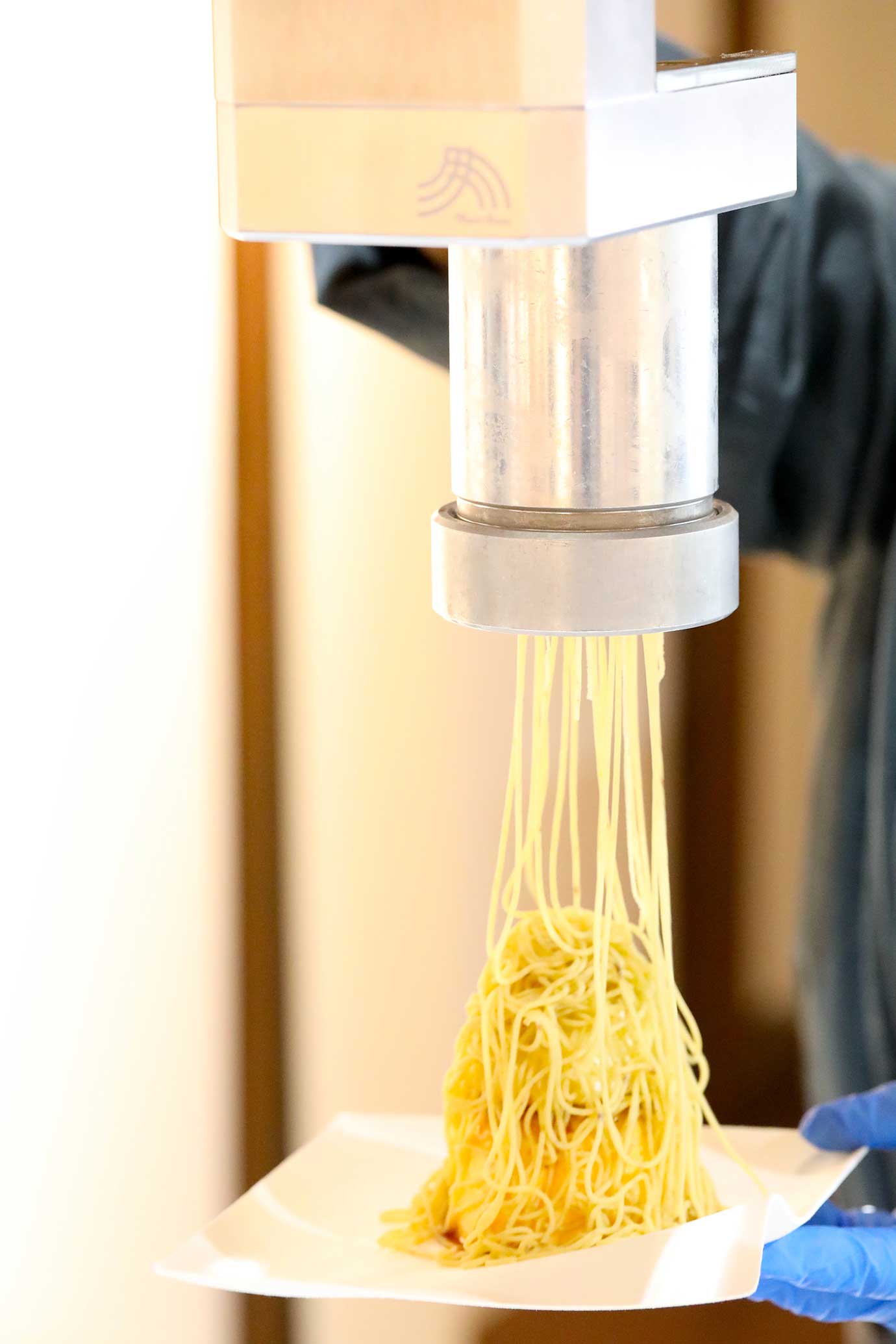
Mont Blanc paste is piped and finished in front of your eyes after your order is taken. The fine texture of the Mont Blanc is like silken threads. Depending on the season, you can also enjoy “Luxury Mont Blanc” for 1,200 yen, made with local Saimyoji chestnuts boiled in their astringent skin.
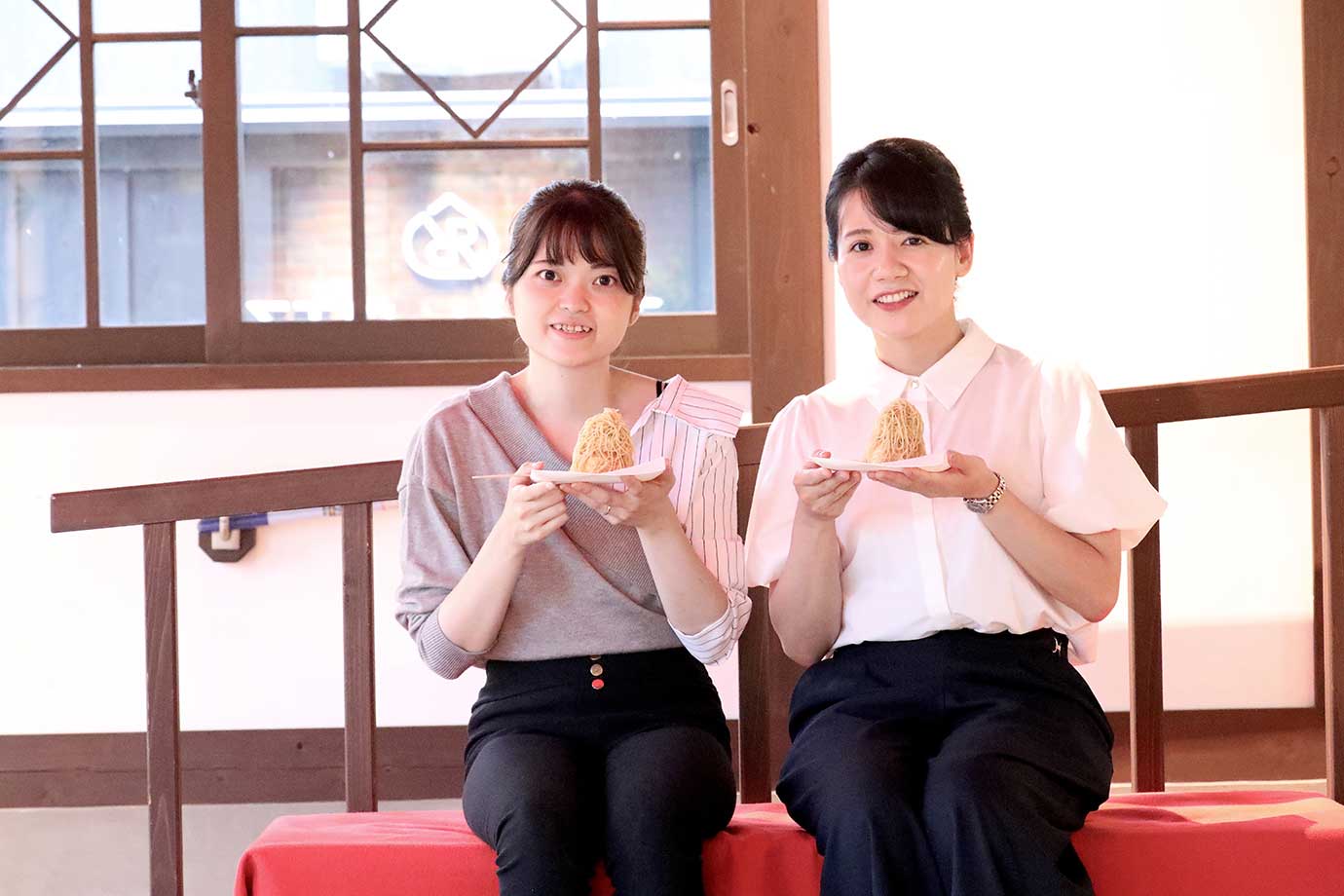
Enjoy the light, fluffy melt-in-your-mouth texture and sweetness of the chestnuts.
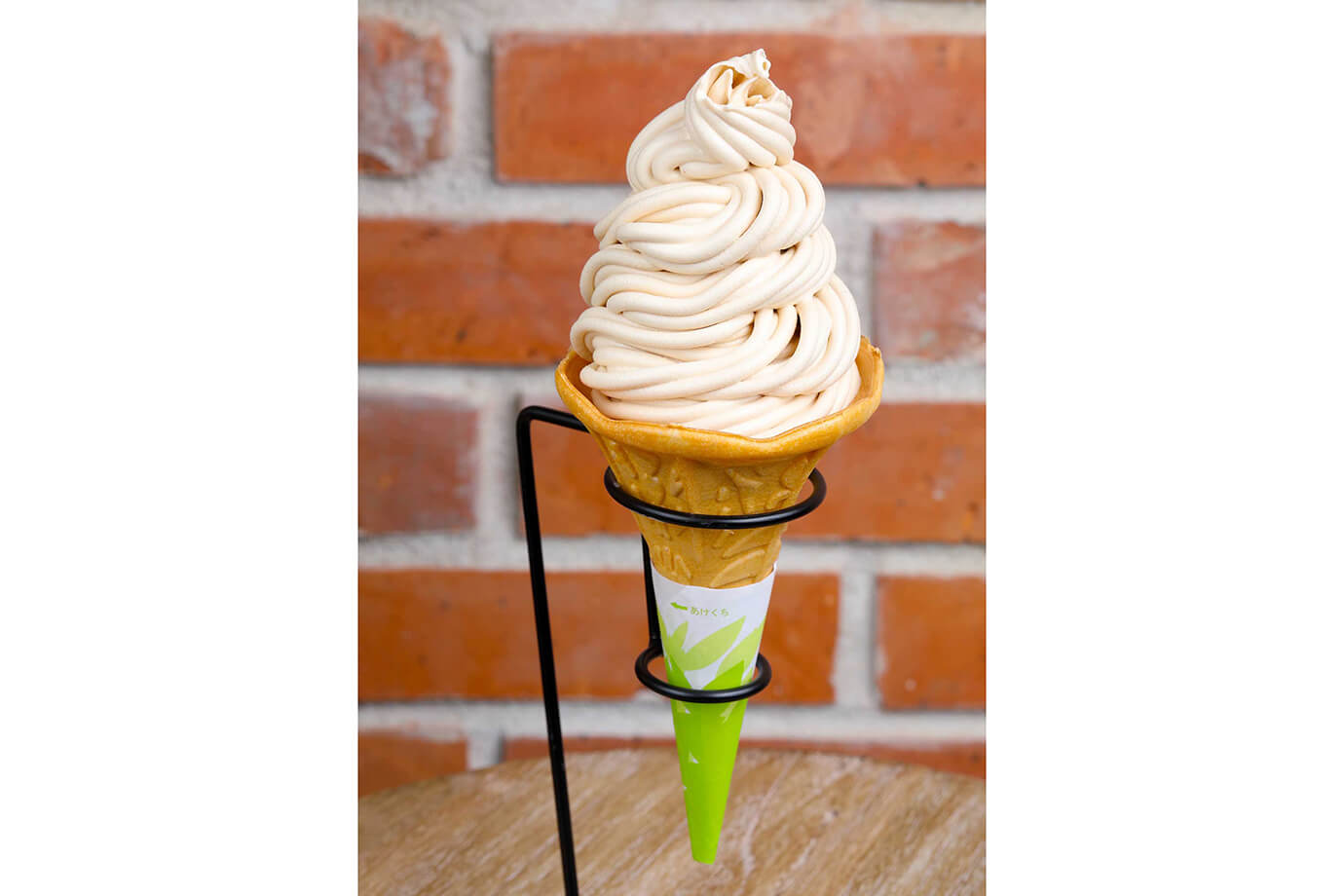
“Mont Blanc Soft” ice cream - 480 yen. Chestnut cream is blended with soft-serve ice cream. The rich harmony of milk and chestnut is irresistible.
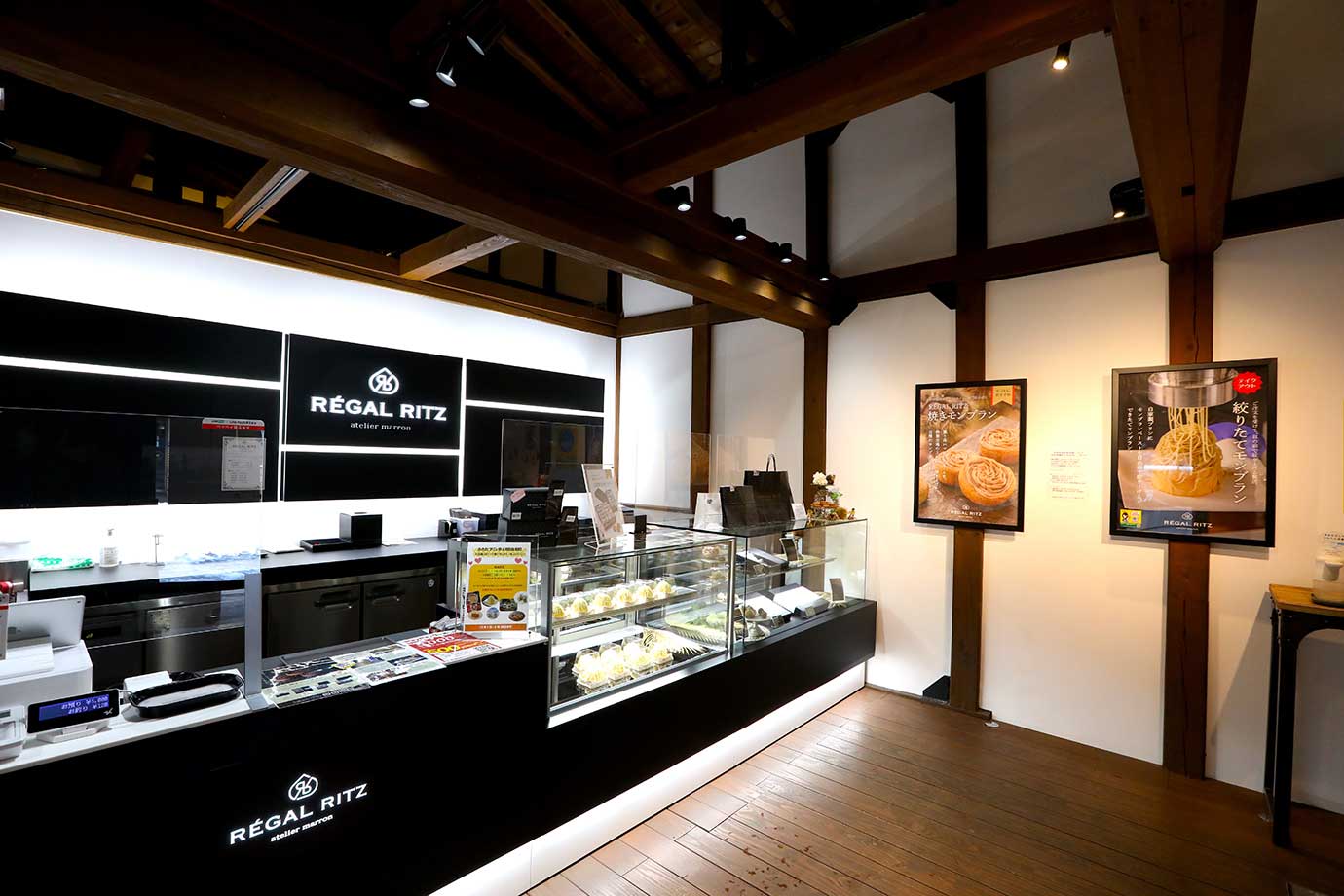
Shop in a stylish space, spreading out behind a stately gate. The showcase was packed with take-out items.
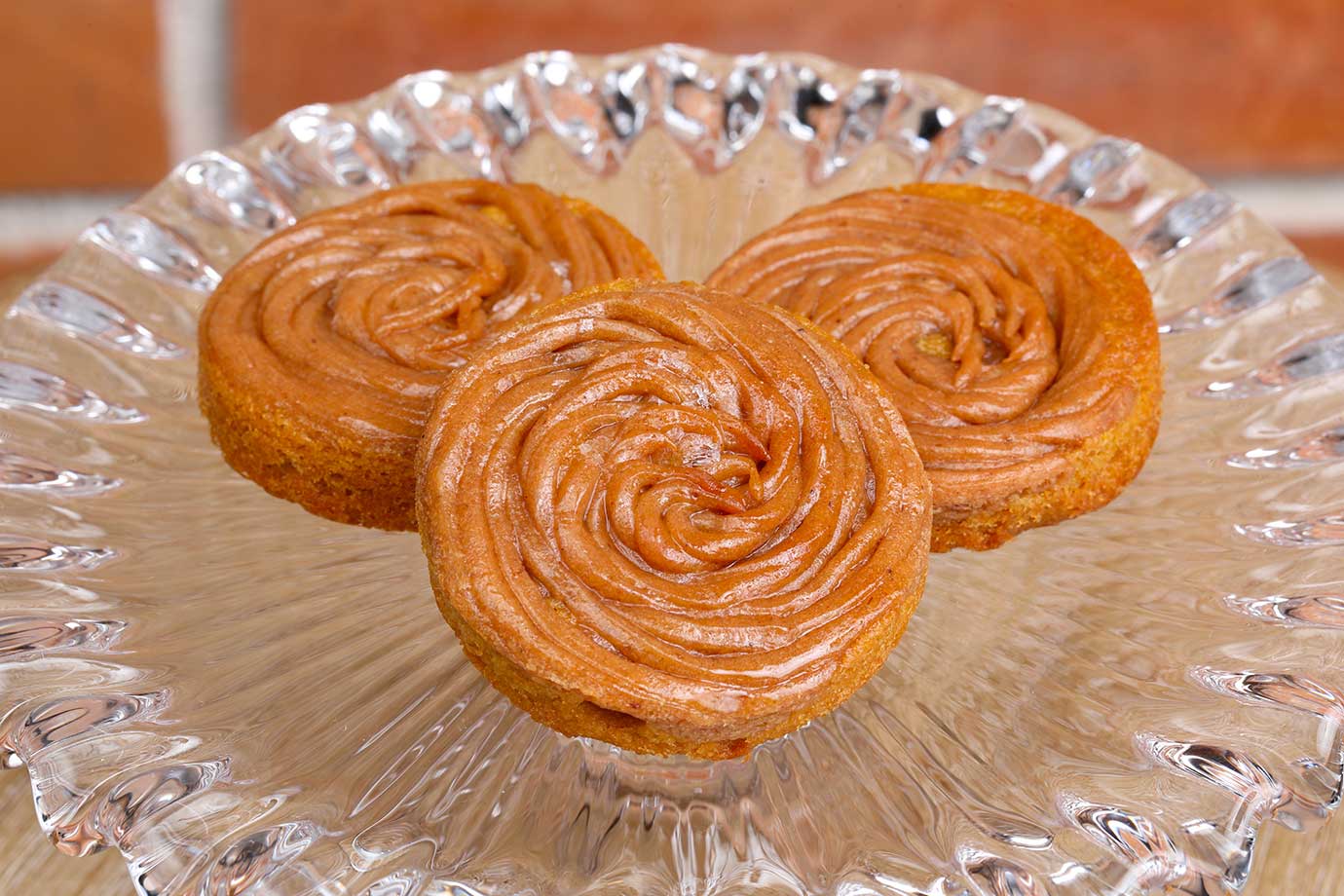
Baked Mont Blanc, a popular souvenir, at 240 yen per piece. The signature chestnut cream is individually hand-poured over the dough, which is baked in the oven. The moist dough and smooth cream come together to create a texture akin to a “Mont Blanc cake”.
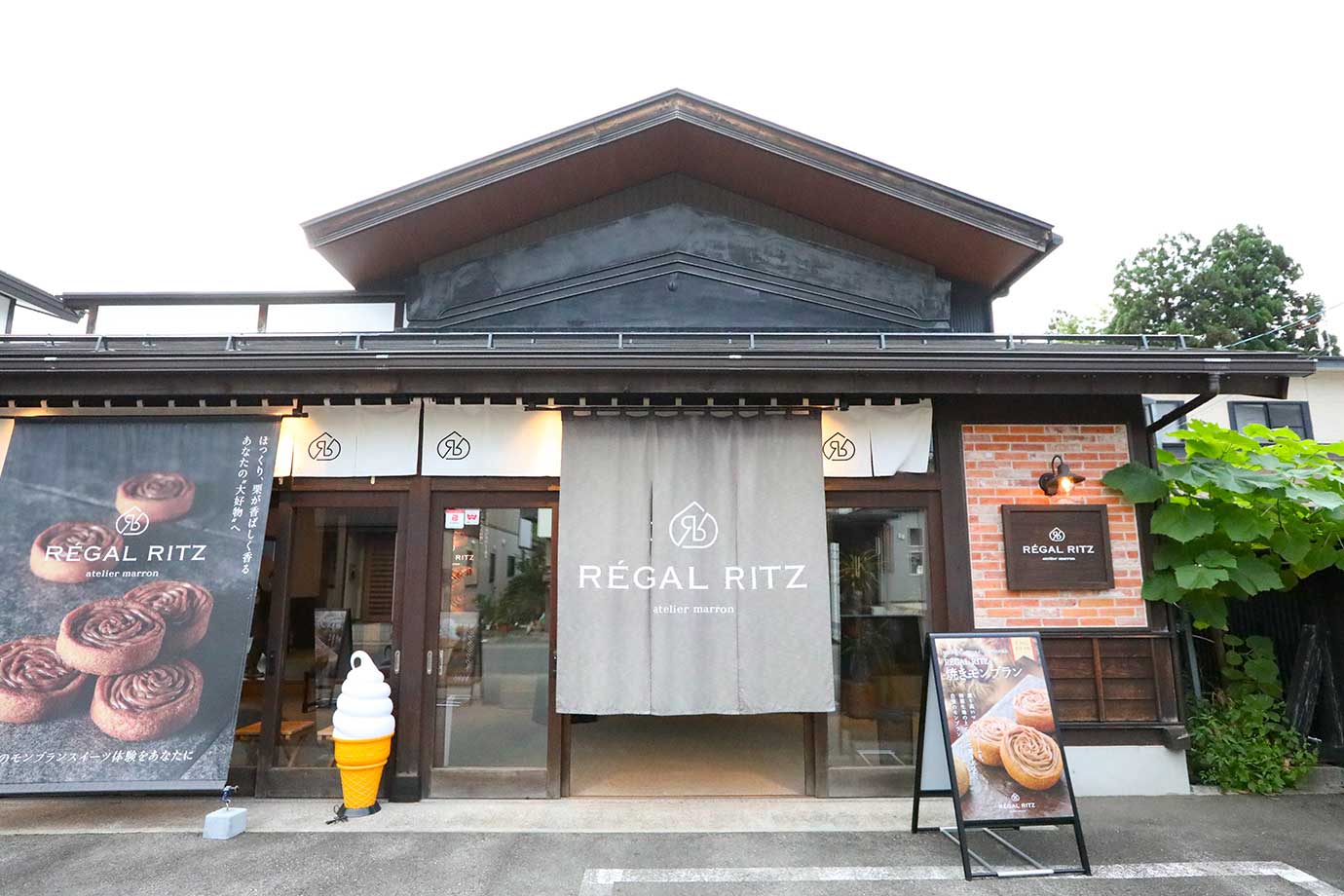
Grand buildings stand by the Ando Jyozo brewery. REGAL RITZ has a sister store in Kakunodate Yokomachi - the Akita Pudding Pavilion - making a perfect Kakunodate sweets tour!
REGAL RITZ
Address:34 Shimoshin-machi, Kakunodate-machi, Semboku City, Akita Prefecture
Phone:0187-49-8285
Hours:10:00 to 17:00
Closed:Year-end and New Year period only
Kakunodate Tomachi Archive - Tatetsu
Stroll through the samurai residences wearing a modern antique kimono
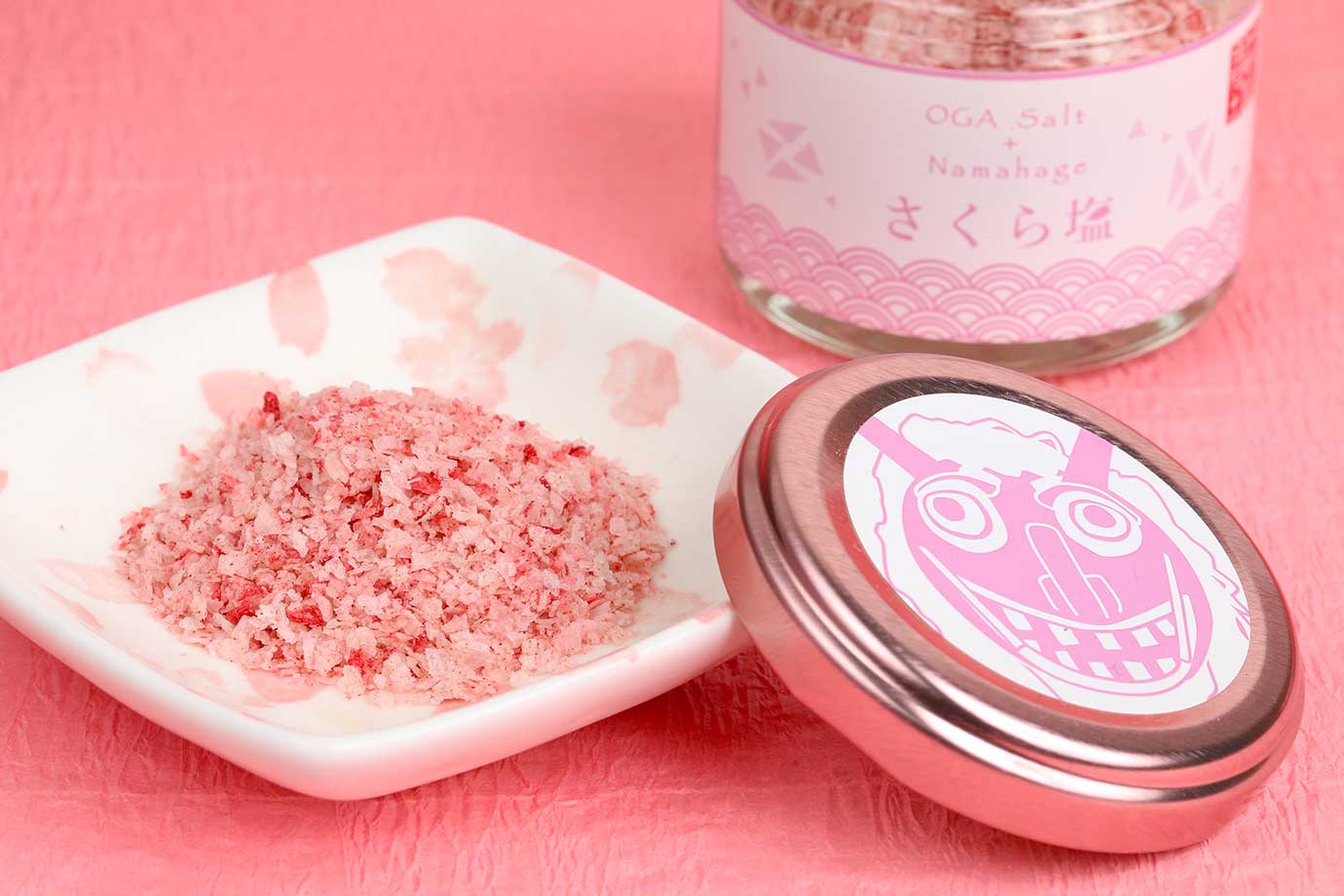
Tatetsu is a merchant’s house built in 1900 that is open to the public, where visitors can view everyday items and collector’s items that have been handed down from generation to generation. Visitors can try on kimonos at the tatami room, and enjoy shopping for souvenirs at the Kakunodate Kabazaiku Center main store. The photo shows a popular product at the souvenir shop, “Oga no Sakura Shio” (Oga cherry salt), priced at 410 yen. This elegant product is made using salt from seawater with the aroma of cherry leaves.
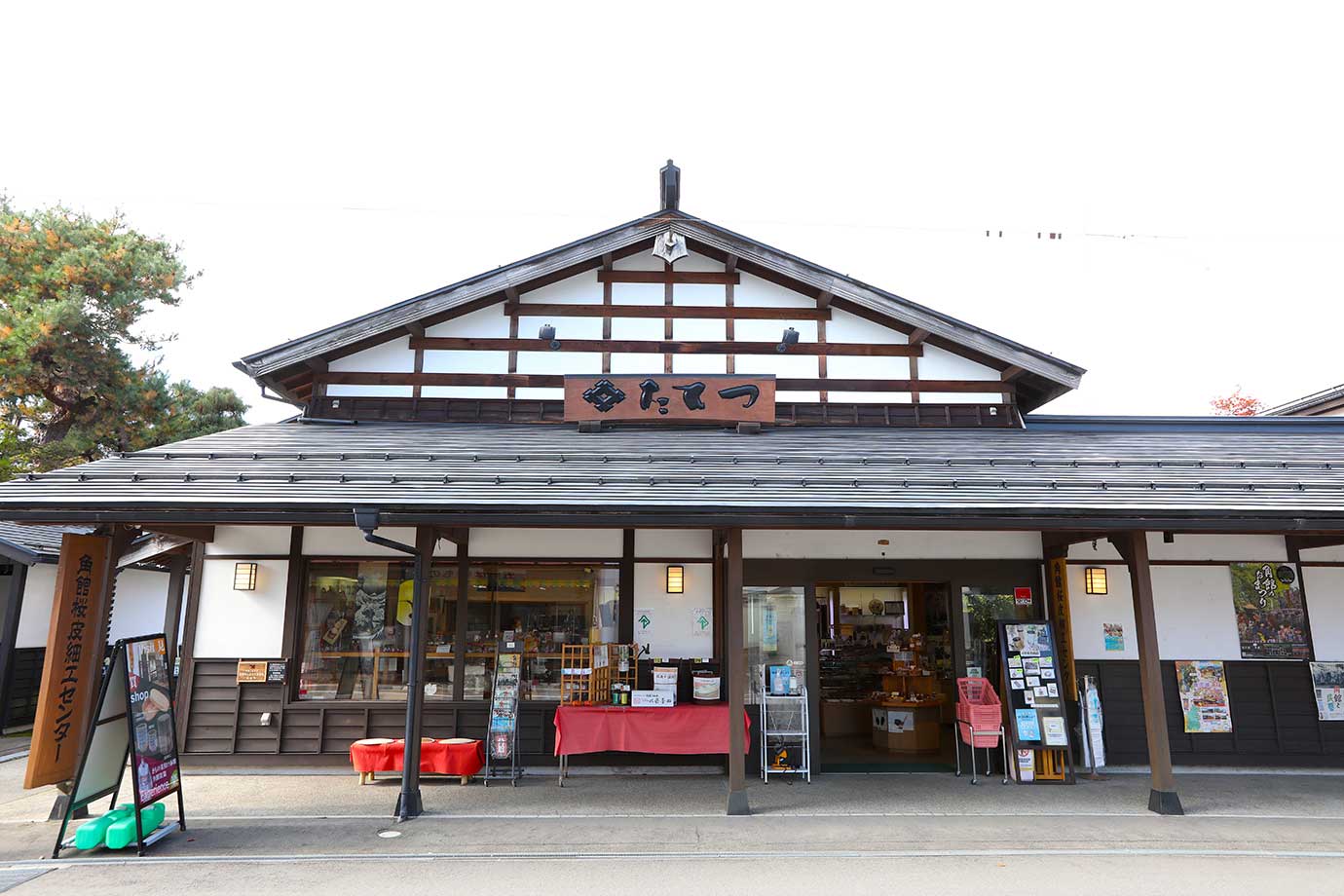
Kakunodate Kabazaiku Center’s main store blends in with the streetscape of samurai residences.
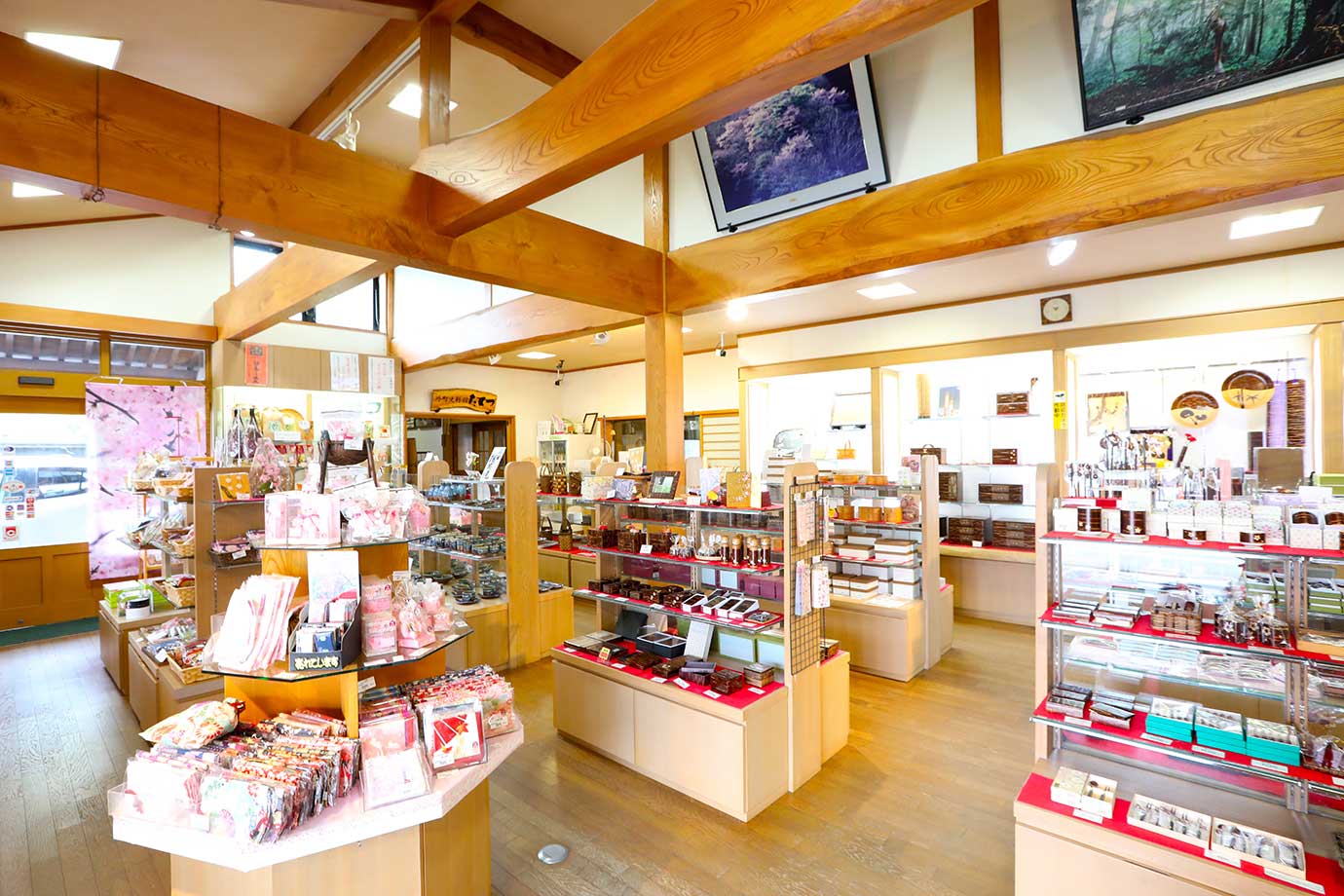
The store, richly decorated with natural wood, offers a wide range of goods, from traditional crafts through to reasonably priced sundries. There is also a lineup of cute products associated with Kakunodate’s weeping cherry blossoms.
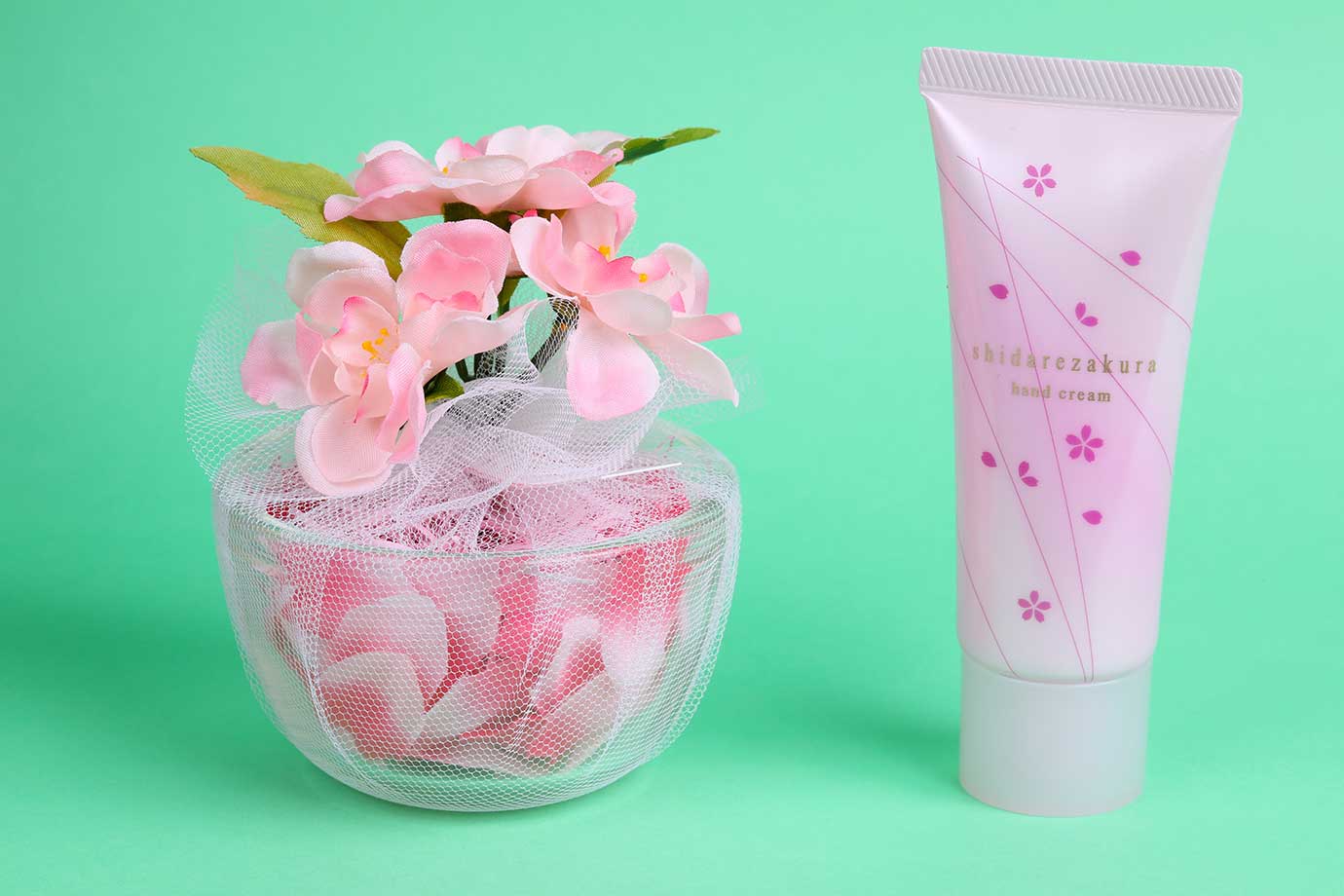
“Sakura Garden” (on the left, this sometimes sells out) can be placed at your home’s entrance or on your windowsill to envelop you in the scent of cherry blossoms. “Hand Cream”, priced at 880 yen (on the right), is an original product developed by the Kakunodate Tourist Association and Shiseido. It is a non-greasy hand cream with a pleasant scent of Kakunodate weeping cherry blossom.
Wear a retro-modern antique kimono in a Meiji-era mansion
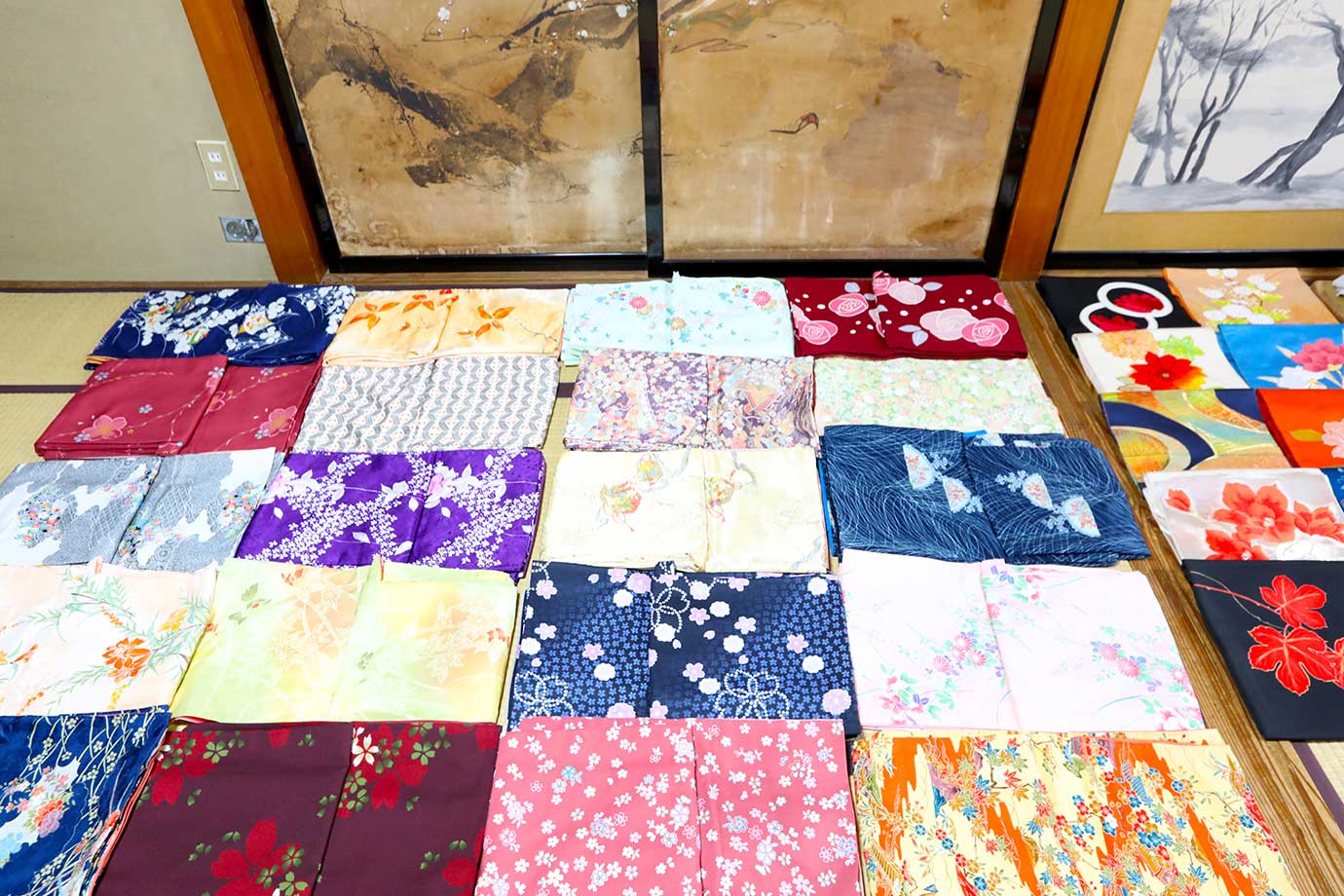
Go to the Kakunodate Sotomachi Archive - Tatetsu, which is found at the back of the souvenir shop. Visitors can tour a kurazashiki storehouse built in the Edo period and a mansion built in the Meiji period. They can also try on antique kimonos. You can’t help but get excited in front of the colorful kimonos and obis.
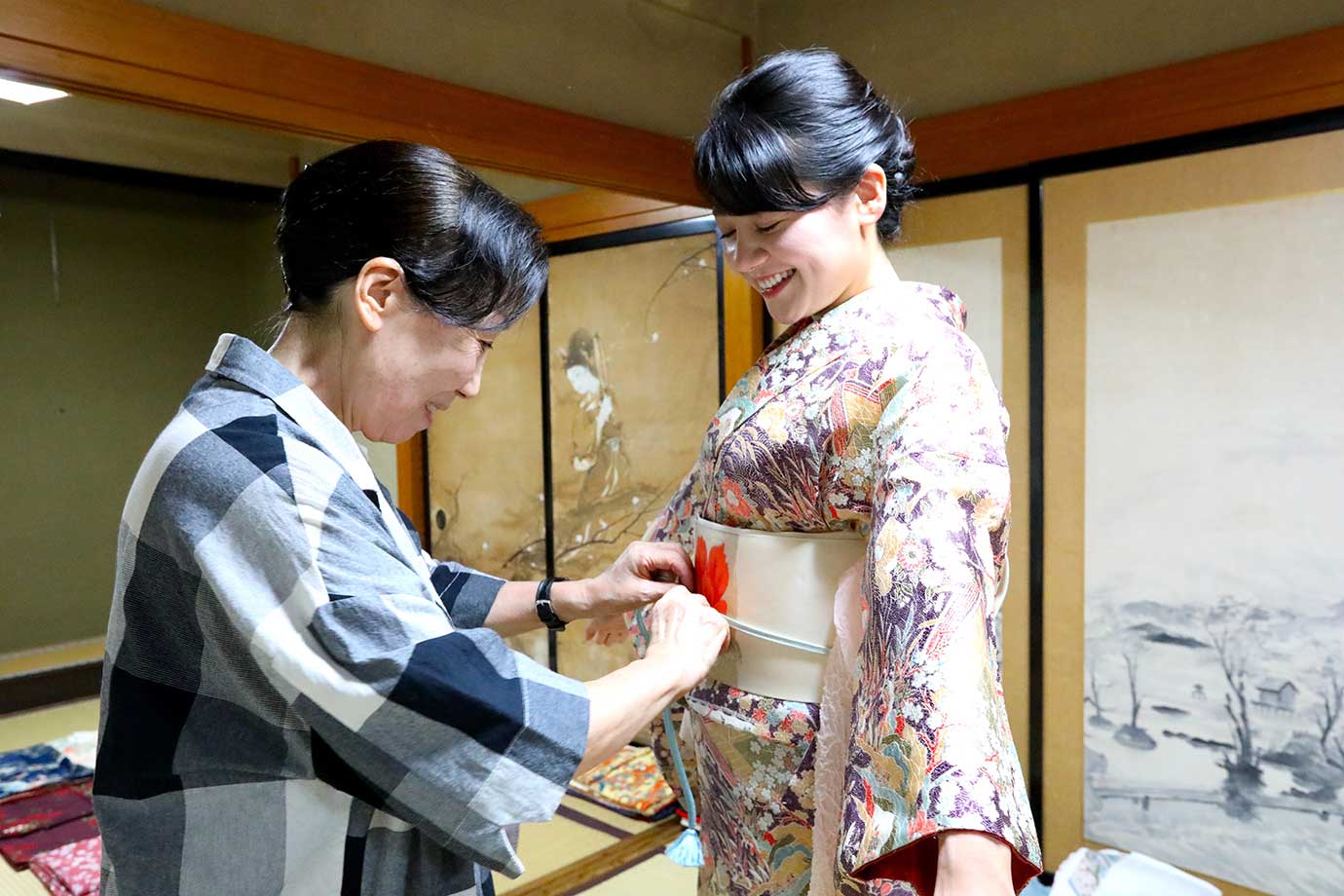
You can choose a kimono of your favorite color and pattern, and they will even help you get dressed. You can rest assured they will provide full coordination of accessories, sandals, and even casual hair sets.
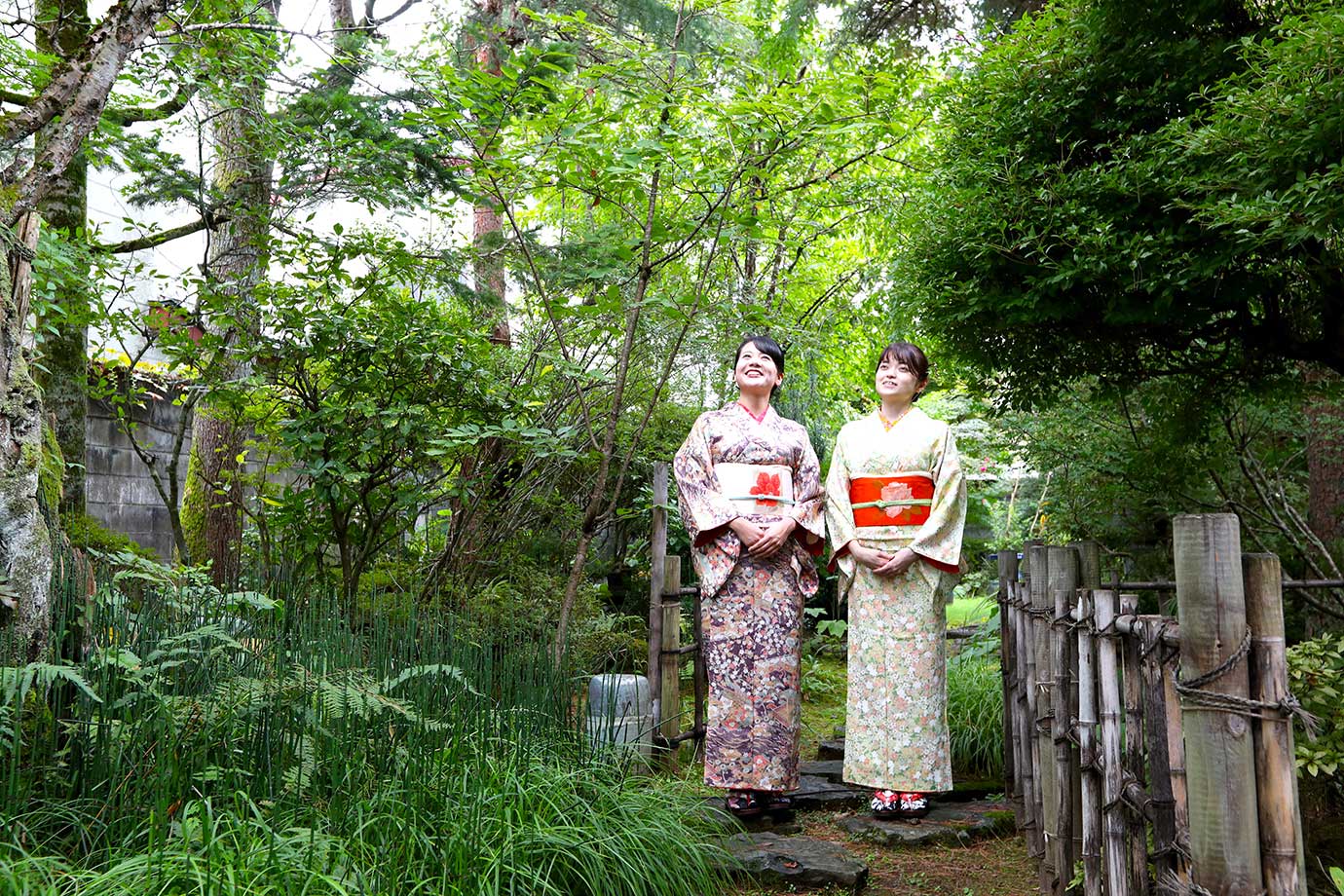
Dressing takes about 30 minutes per person. They also dress and rent yukata, bridal gowns, and men’s kimonos. Take a leisurely stroll in a kimono through the streets of the samurai residences, with their weeping cherry blossoms and beautiful autumn leaves.
Kakunodate Tomachi Archive - Tatetsu
Address:25 Nakamachi, Kakunodate-machi, Semboku City, Akita Prefecture
Phone:0187-53-2639
Fee:Please inquire.
Hours:10:00 to 17:00
Closed:Open every day
Kimono Trip Shanari
Phone:0187-63-6751
Fee:5,000 yen for dressing and rental (kimono, obi and accessories included), reservation required
Hours:10:00 to 17:00
Closed:Open every day
Akita Kakunodate Nishinomiya House
Nostalgic restaurant and store renovated from a storehouse
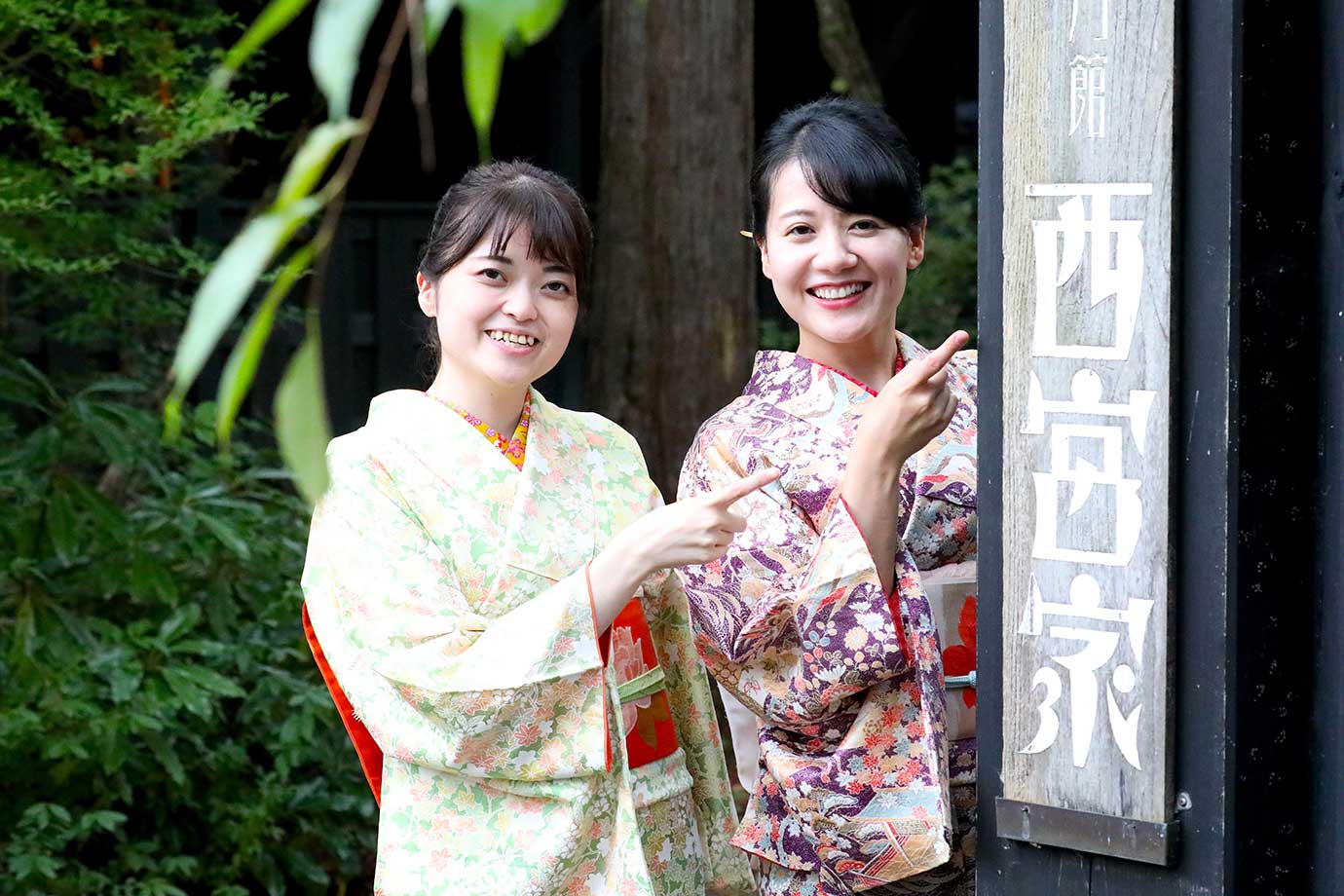
The Nishinomiya Family was a vassal of the Satake Clan and a famous family that served as Mayor of Kakunodate during the Meiji era. Five storehouses and the main house, built in the late Meiji and Taisho eras, remain, preserving the glory of the Nishinomiya Family.
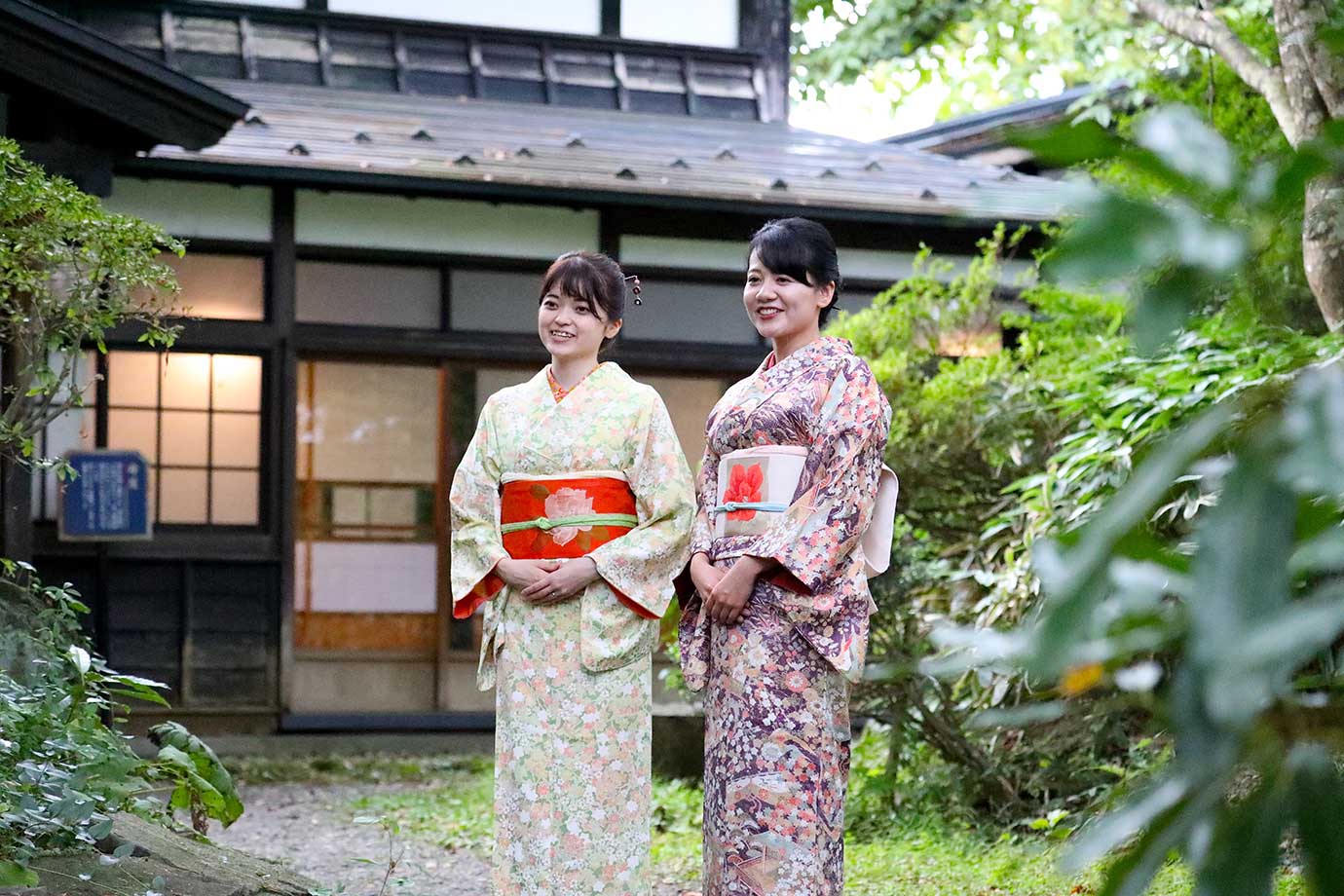
The five storehouses on the premises, including the main building, the Kitagura Storehouse, the Komegura Storehouse, the Bunkogura Storehouse, the Front Storehouse (Bushigura), and the Gakkogura Storehouse, have been renovated. The main building has been turned into a sweet shop, the Kitagura Storehouse into a restaurant, and the Komegura Storehouse into a shop. The Front Storehouse (Bushigura) and Gakkogura Storehouse serve as lodgings at the Wanoi Inn.
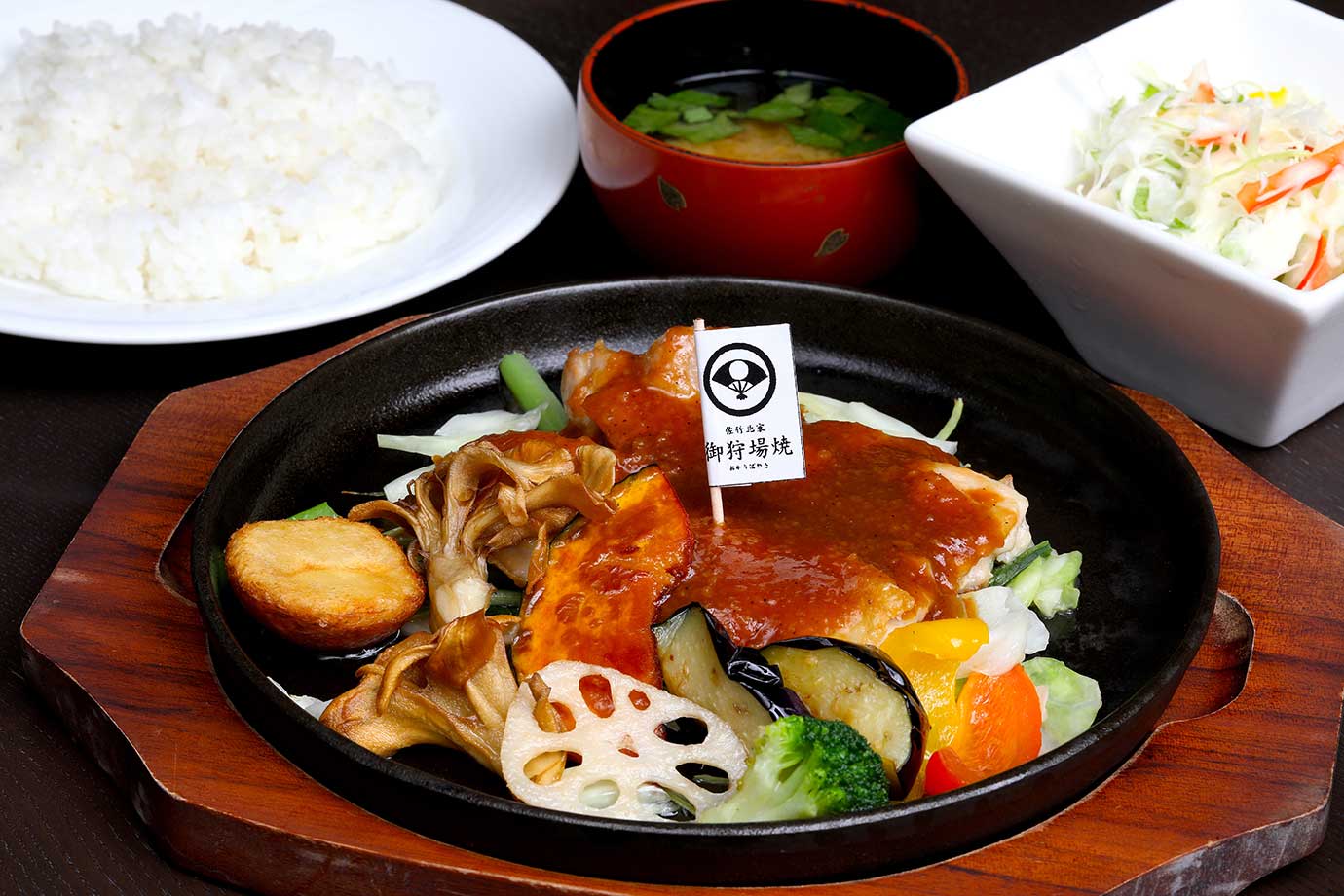
“Restaurant Kitagura” offers an original menu using low-pesticide rice and fresh vegetables produced in Kakunodate. The popular “O-Karibayaki” (1,400 yen) includes chicken and seasonal vegetables grilled with savory sansho miso, and comes served with salad, rice, and miso soup.
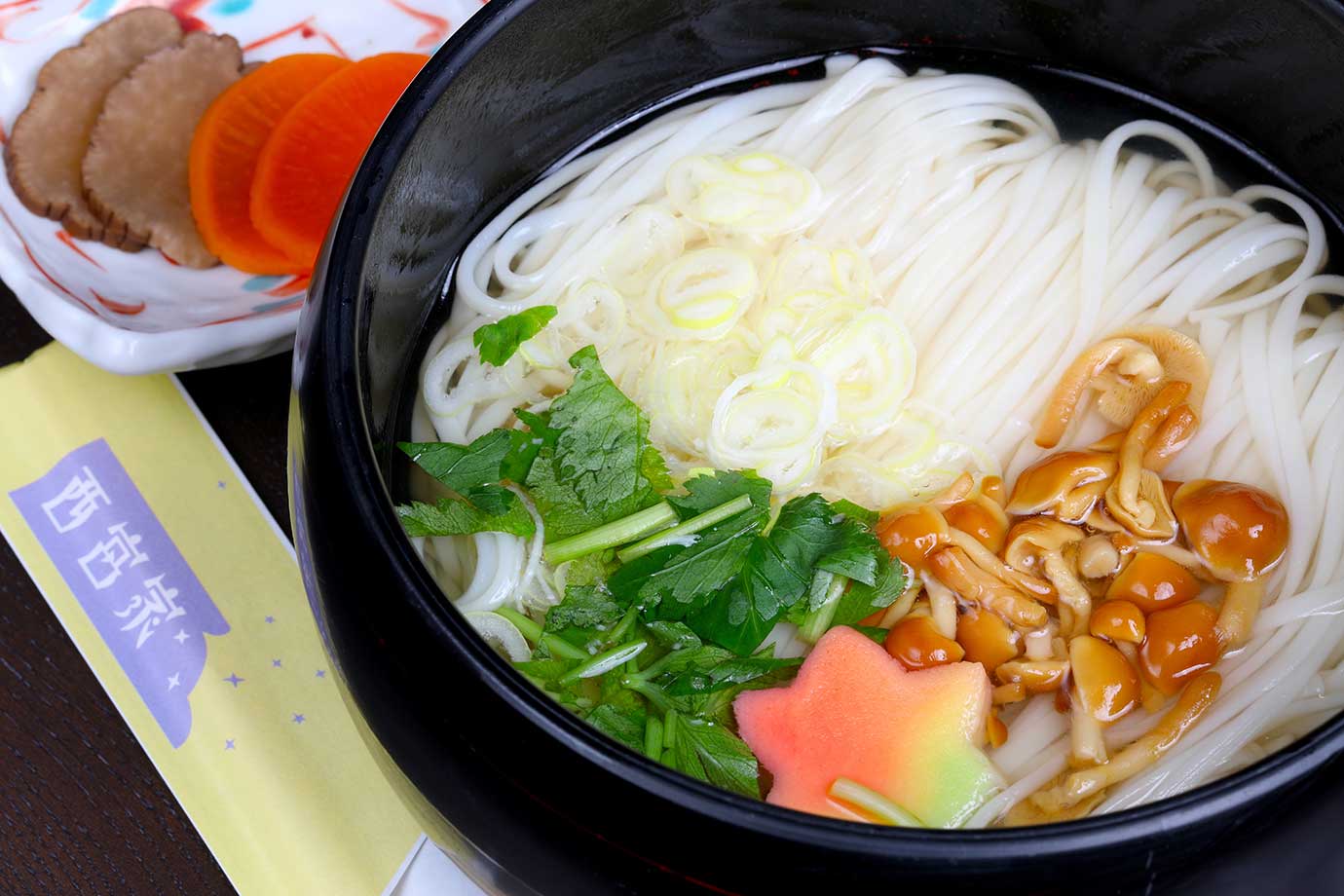
The “Inaniwa Udon”, priced at 1,100 yen, has a smooth texture, making it refreshing to eat. You can choose from cold or hot udon.
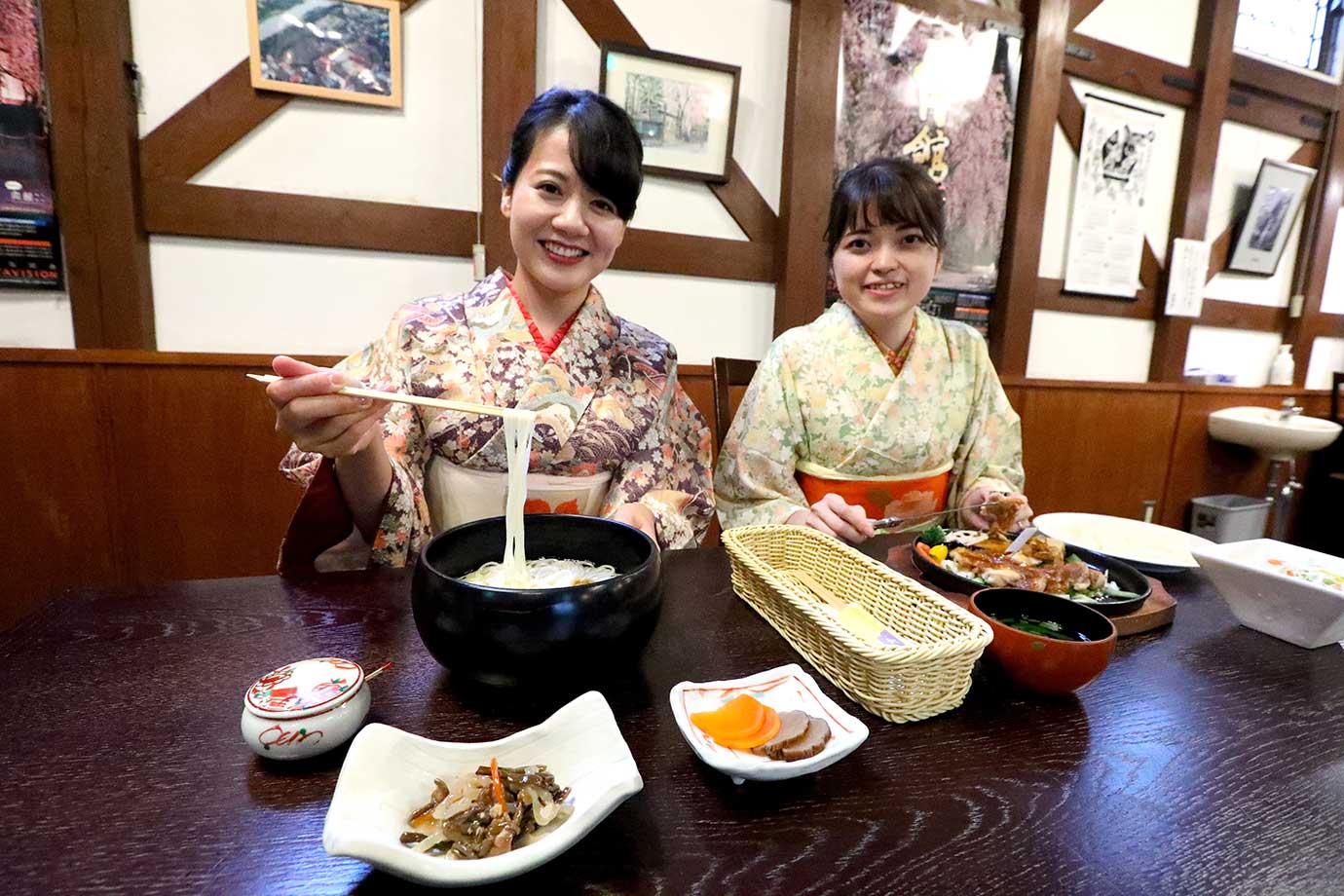
Built in 1919, the storehouse has a high ceiling and surprisingly open feel. There is a terrace inside the restaurant, where you can dine while enjoying views of the garden.
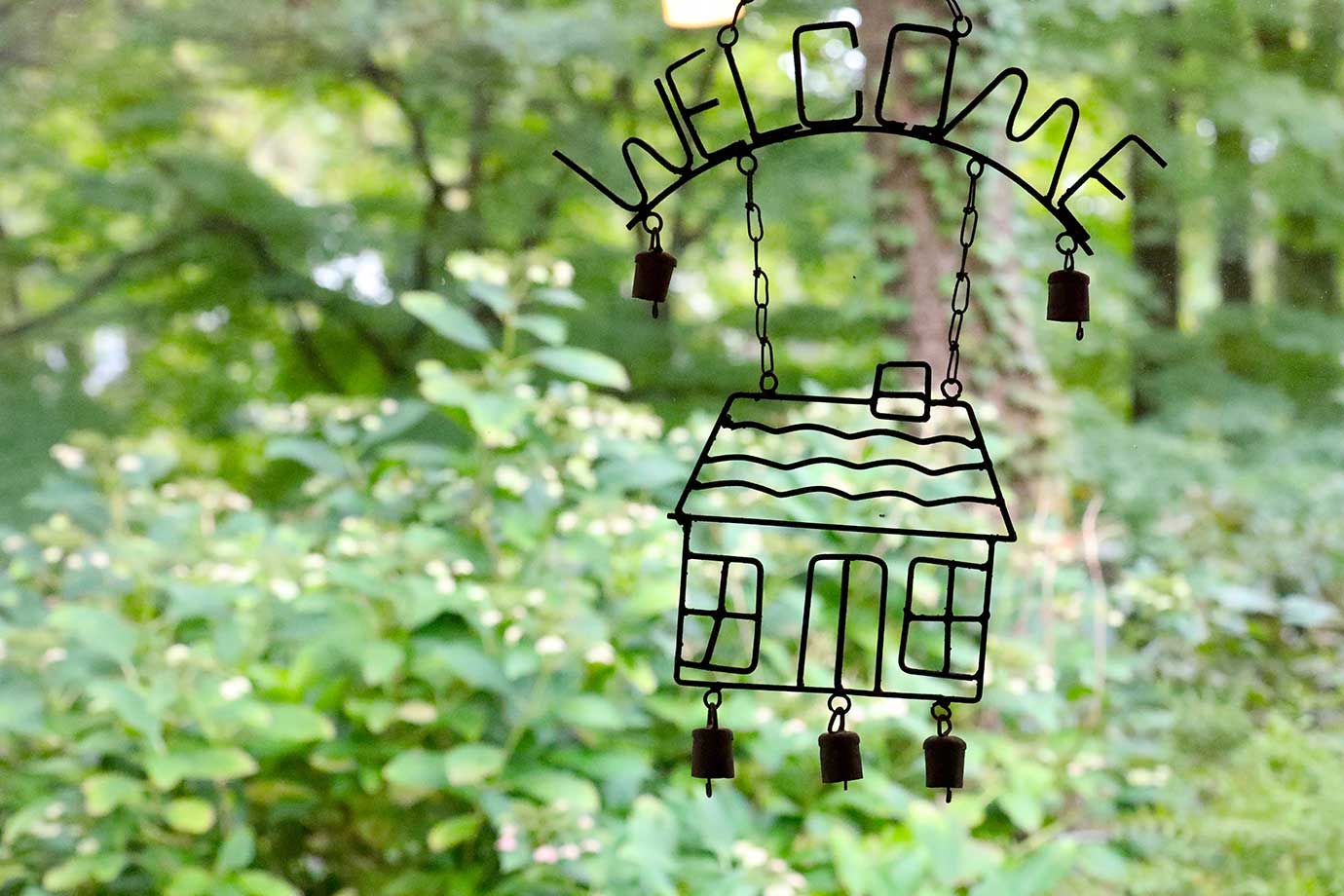
Stylish iron decorations hang down from the windowsill.
The Komegura shop offers a selection of handmade gems.
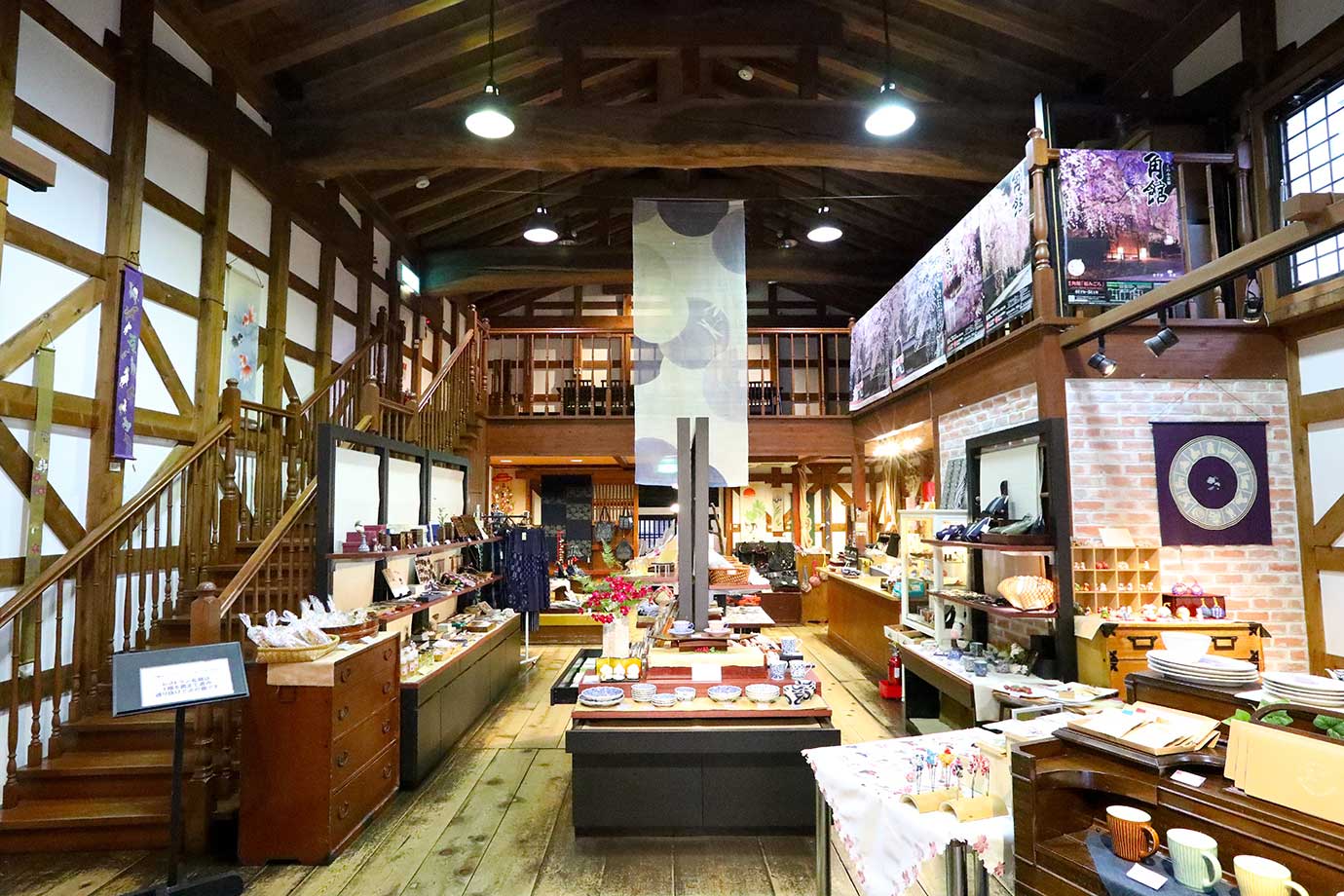
Komegura, built in 1910, is divided into two floors and utilizes vintage chests of drawers to display and sell sundry goods made from vessels, small items, and old fabrics.
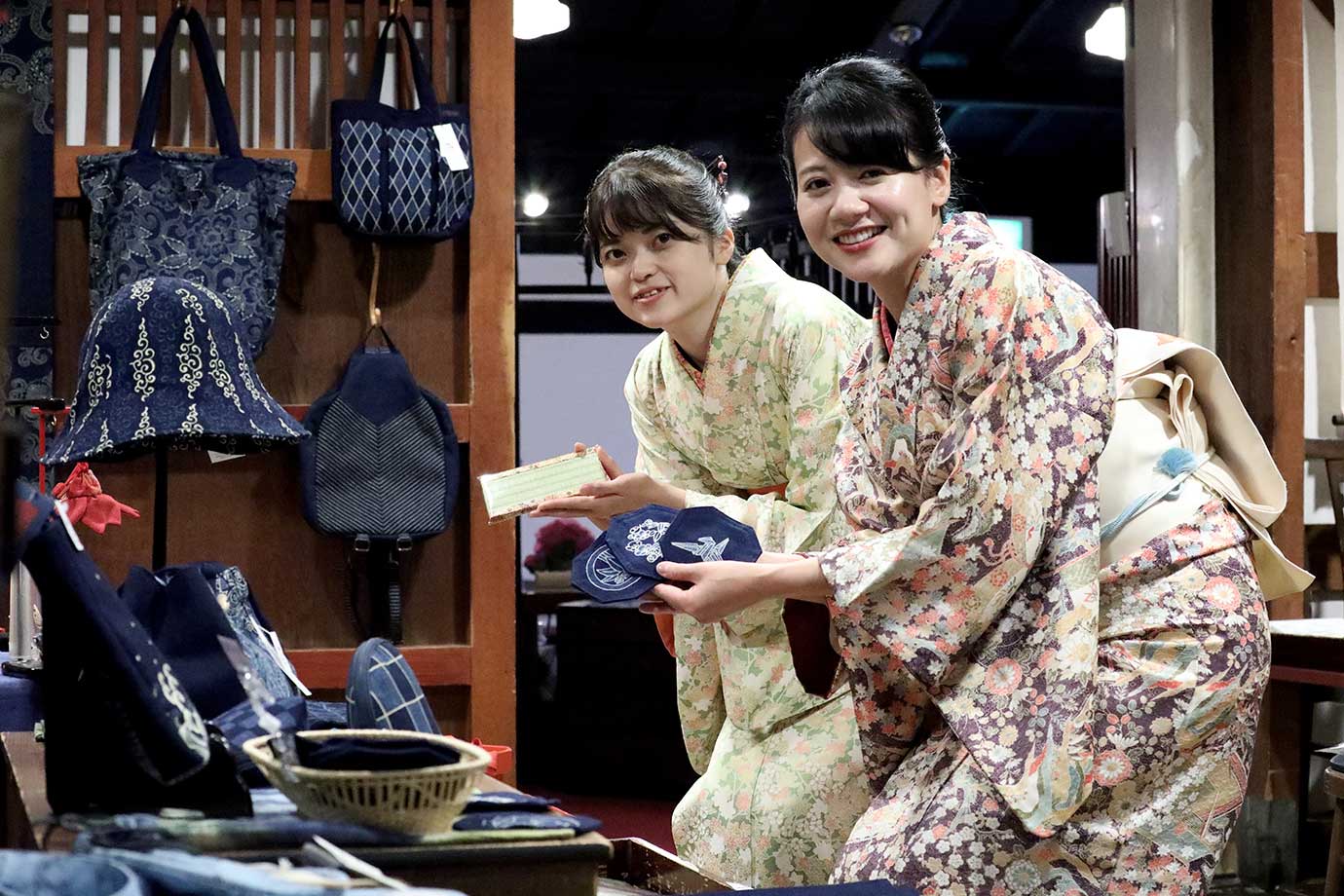
The clothing and sundry goods made from chic indigo-dyed and old fabrics are all one-of-a-kind pieces made by artisans.
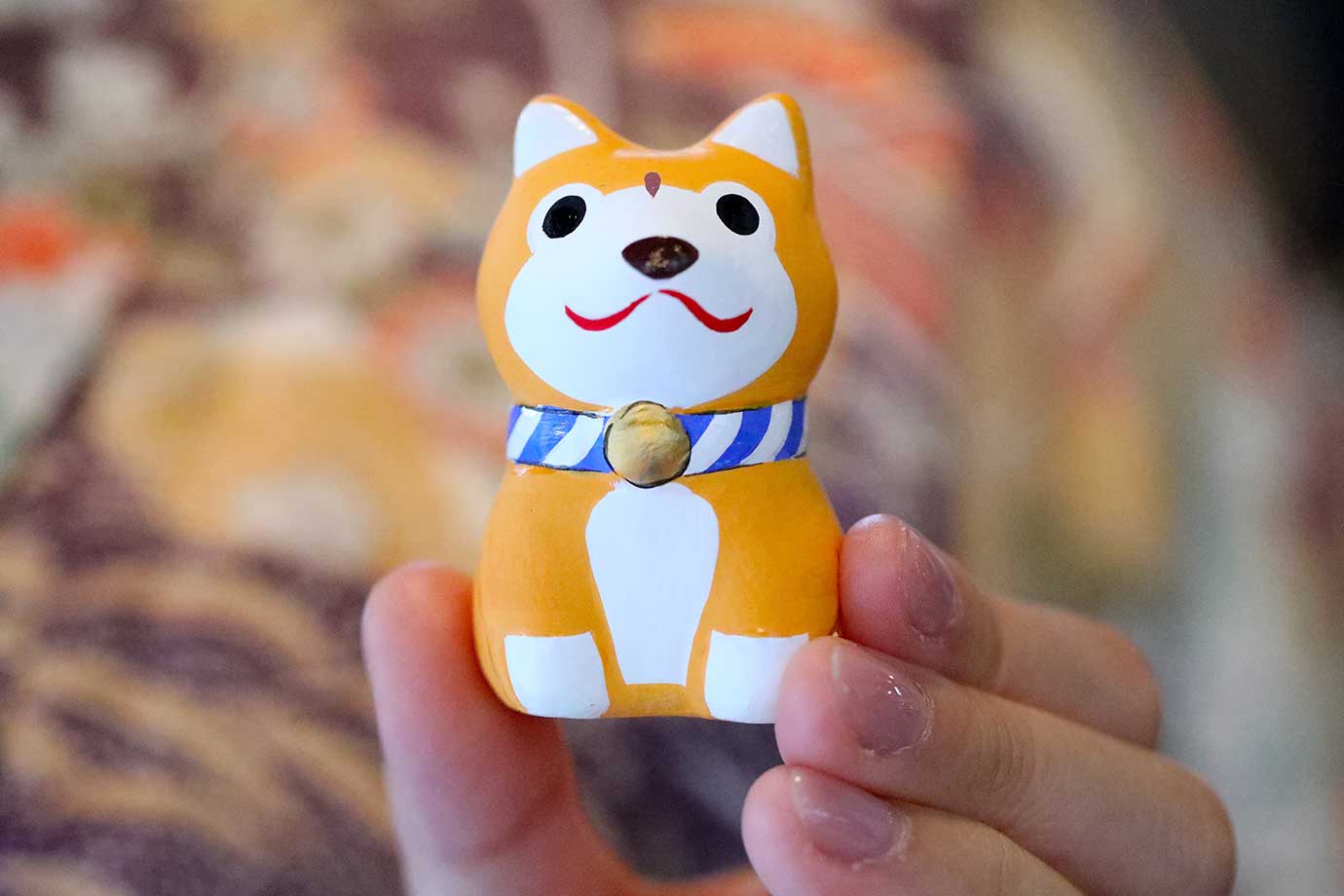
The Dorei earthenware bell has a motif of the twelve signs of the Chinese zodiac, and is priced at 1,320 yen. It is a cute item, and you will want to have one for each year as a good luck charm. These crafts and sundries show the love and warmth of their makers. They will surely enrich your everyday life!
Akita Kakunodate Nishinomiya House
Address:11-1 Tamachikamicho, Kakunodate-machi, Semboku City, Akita Prefecture
Phone:0187-52-2438
Hours:10:00 to 17:00
Closed:Irregular closures
Ishiguro Family Samurai Residence
Continue up to the oldest samurai residence in Kakunodate and experience how people lived at the time
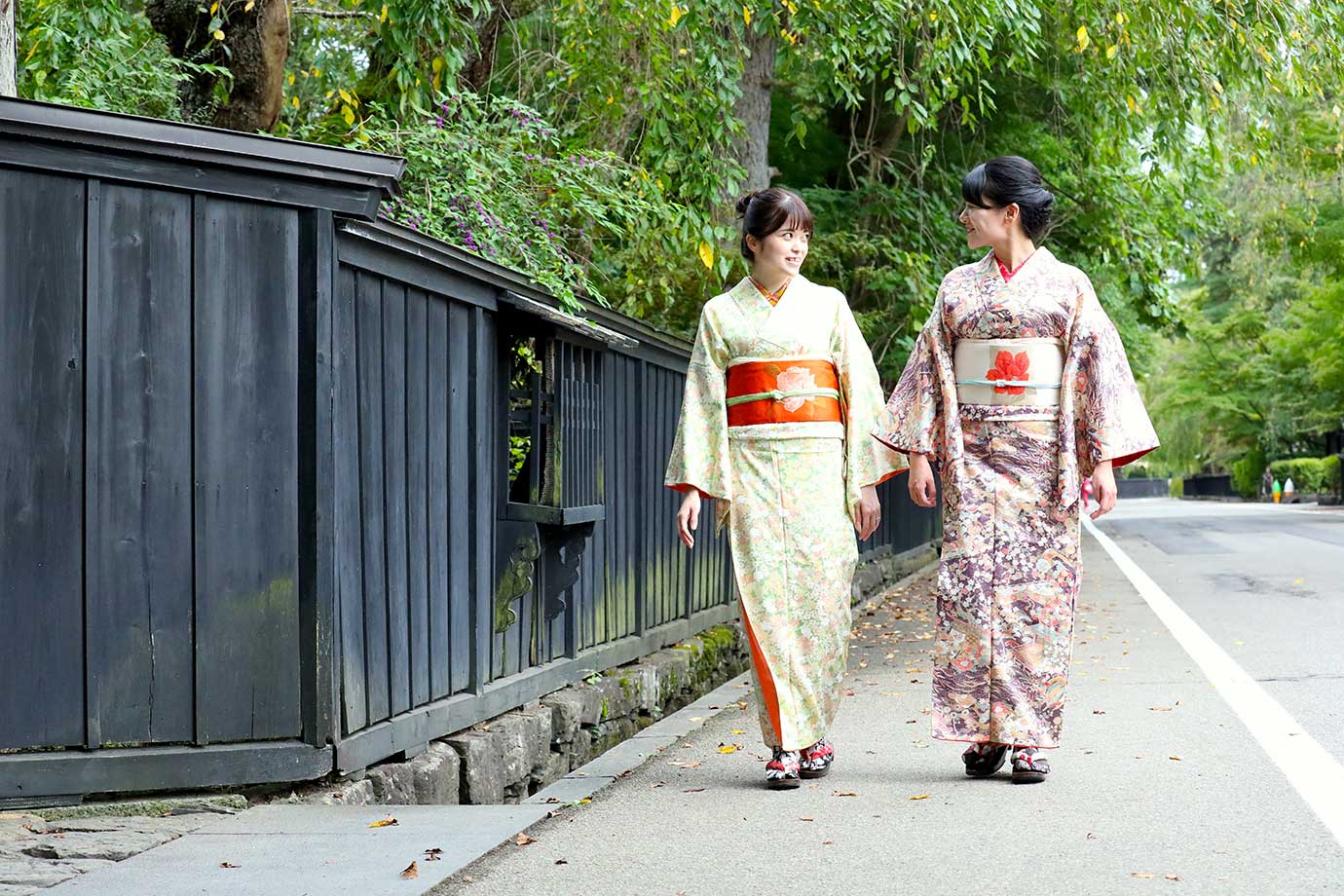
Six samurai residences remain in Uchimachi, which stretches to the north of Kakunodate and is designated as an “Important Preservation District for Groups of Traditional Buildings” by the Japanese national government. The main Samurai Residence Street (Bukeyashiki-dori) is lined with blackboard walls and transformed into a gorgeous scene in spring with 400 weeping cherry trees in bloom.
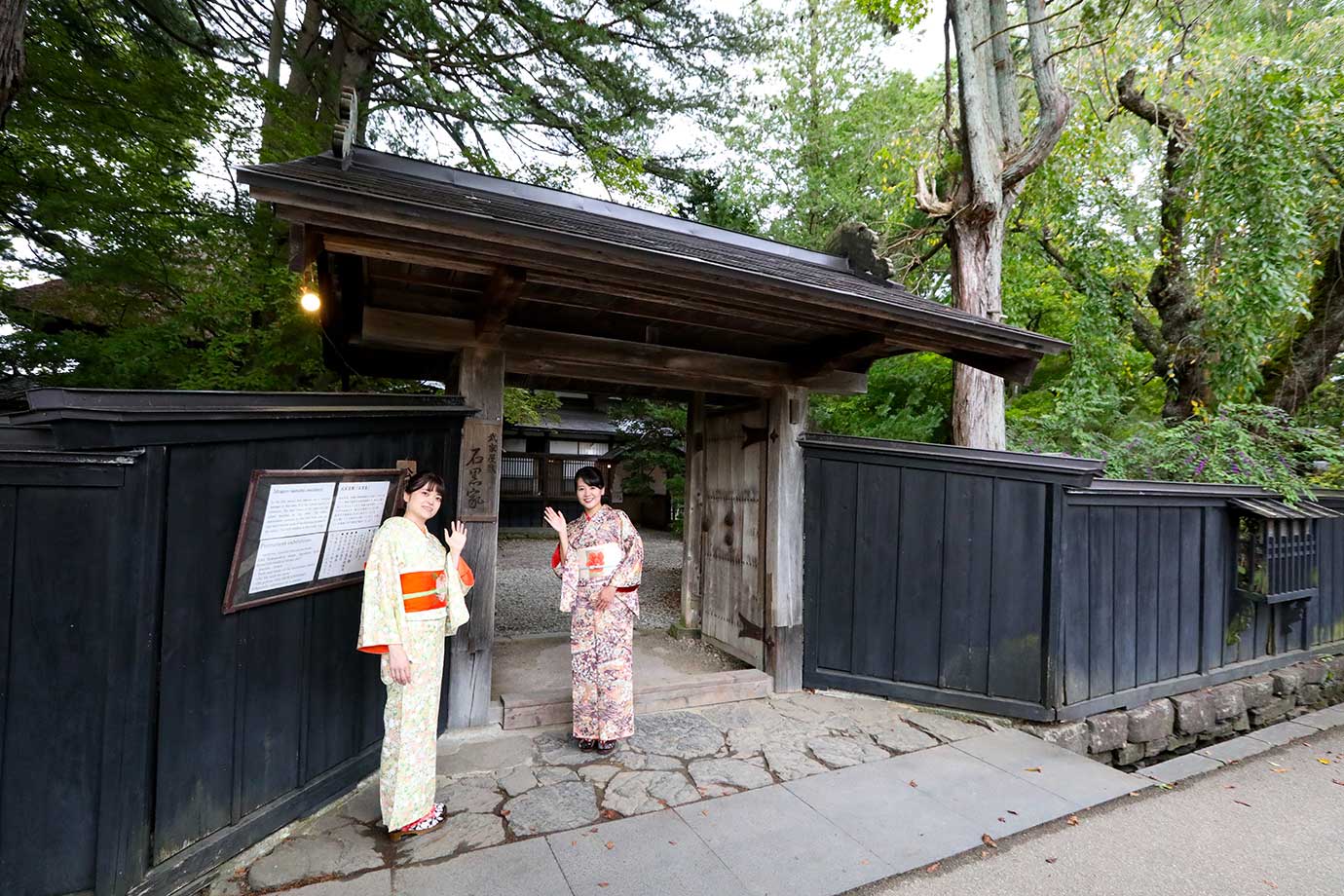
The Ishiguro Family, located at the northern end of Samurai Residence Street, is a family that served as accountants for the Satake Kita Clan. The home is the oldest of the remaining residences in Kakunodate, and shows the architectural style unique to senior samurai, with two entrances, a main entrance and a side entrance.
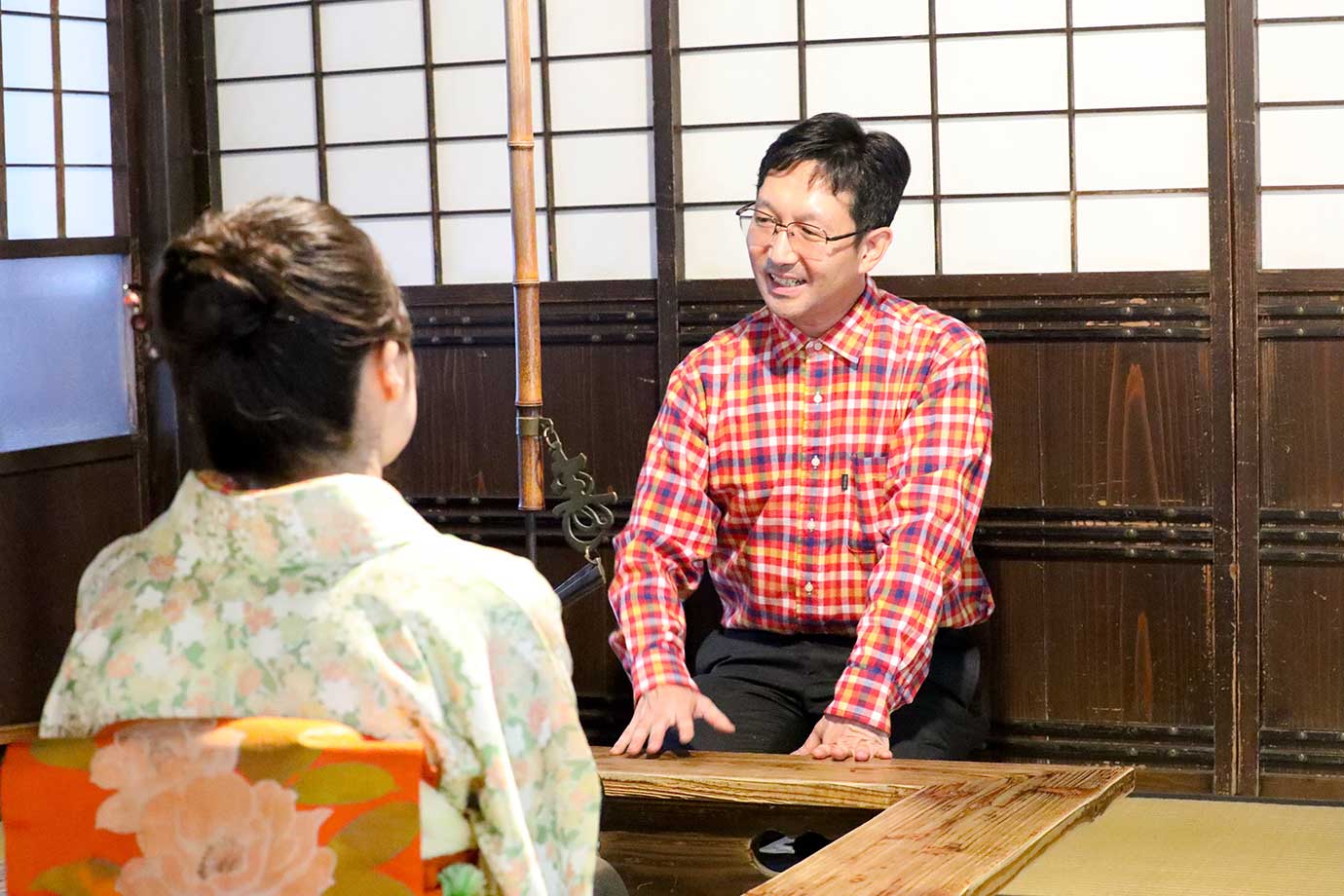
The main house is still occupied by the Ishiguro Family’s direct descendants, and part of the house is open to the public. A guide is provided for tours, and on my trip it was Naonobu Ishiguro, the 13th generation head of the family, who led the tour.

Of all the samurai residences in Kakunodate, this is the only one where visitors can enter the main house for a tour. The tour includes a tea ceremony room, a study, and a drawing room, all of which are still in use, while listening to the guide explain the customs of the samurai family and the characteristics of the residence.

From the guest room, you can view the garden, where mounds and rocks are laid out and which uses moss to represent flowing water. The 300-year-old giant fir tree is the symbol of the Ishiguro family.
The detailed designs throughout the mansion are truly remarkable!
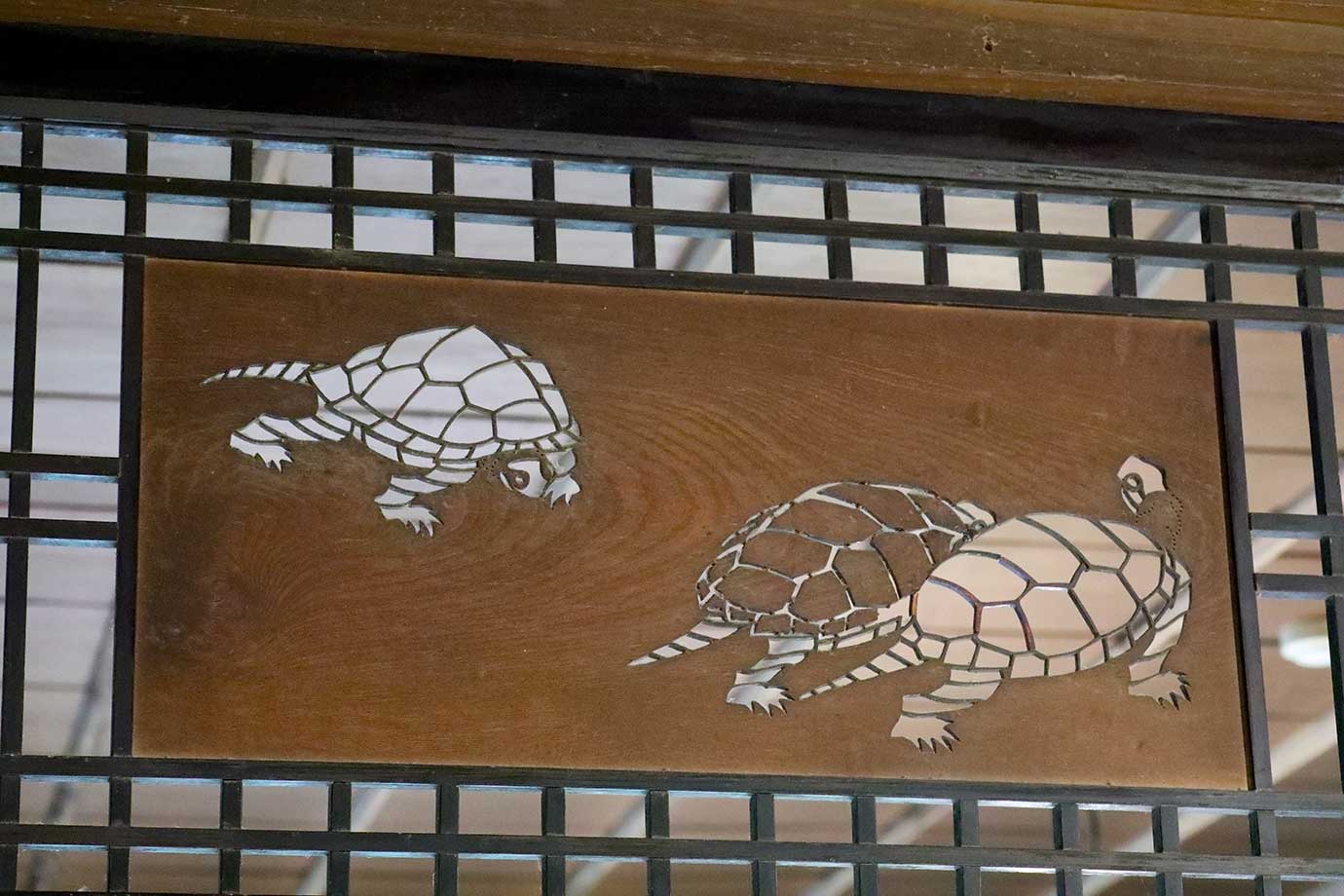
Turtle motif fretwork using a single piece of Japanese zelkova wood can be seen on the ranma transom.
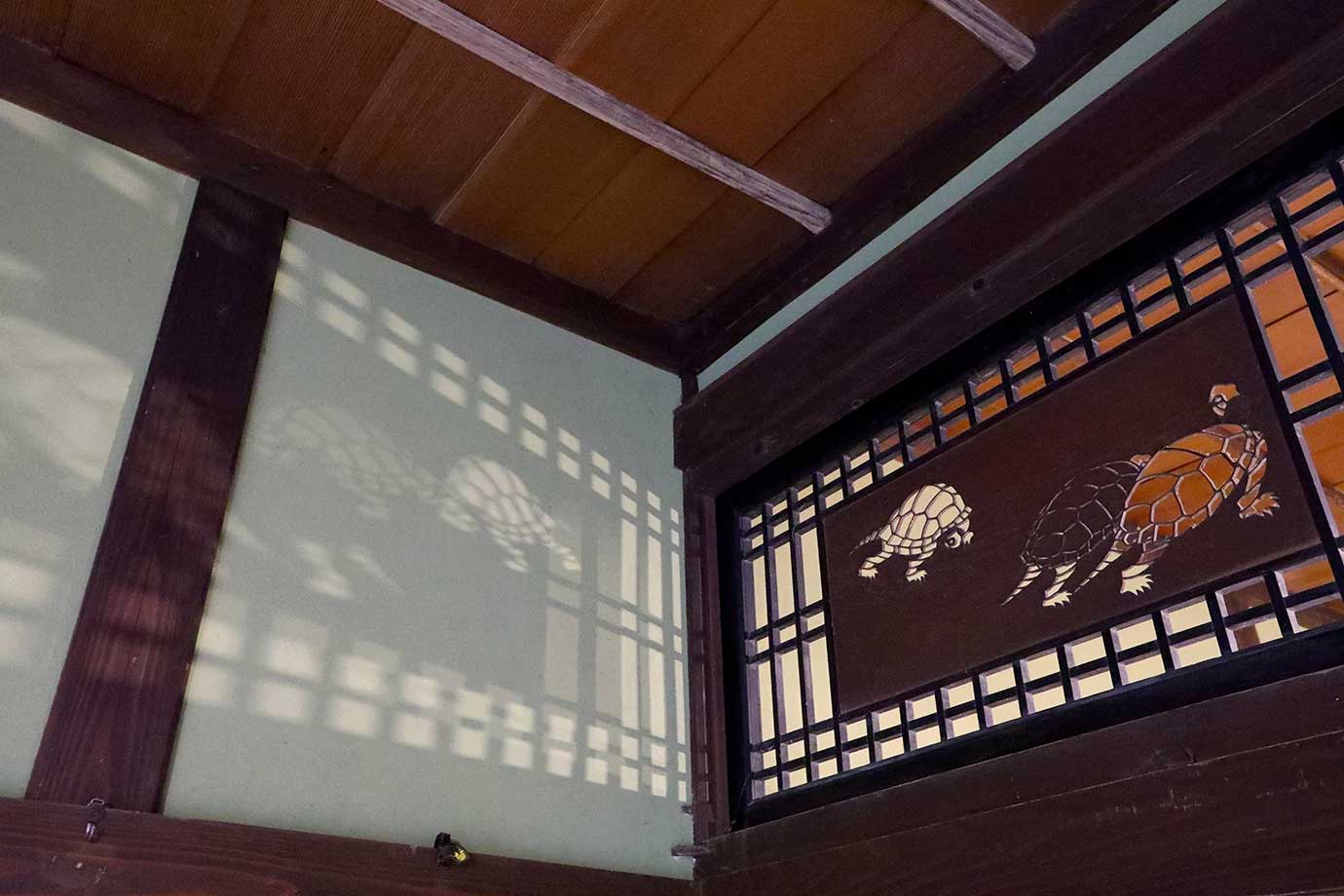
When illuminated by natural light, the turtles’ image is reflected on the walls and fusuma. In days gone by, people were said to have enjoyed the sense of the turtles swaying in the light from candles and lanterns.
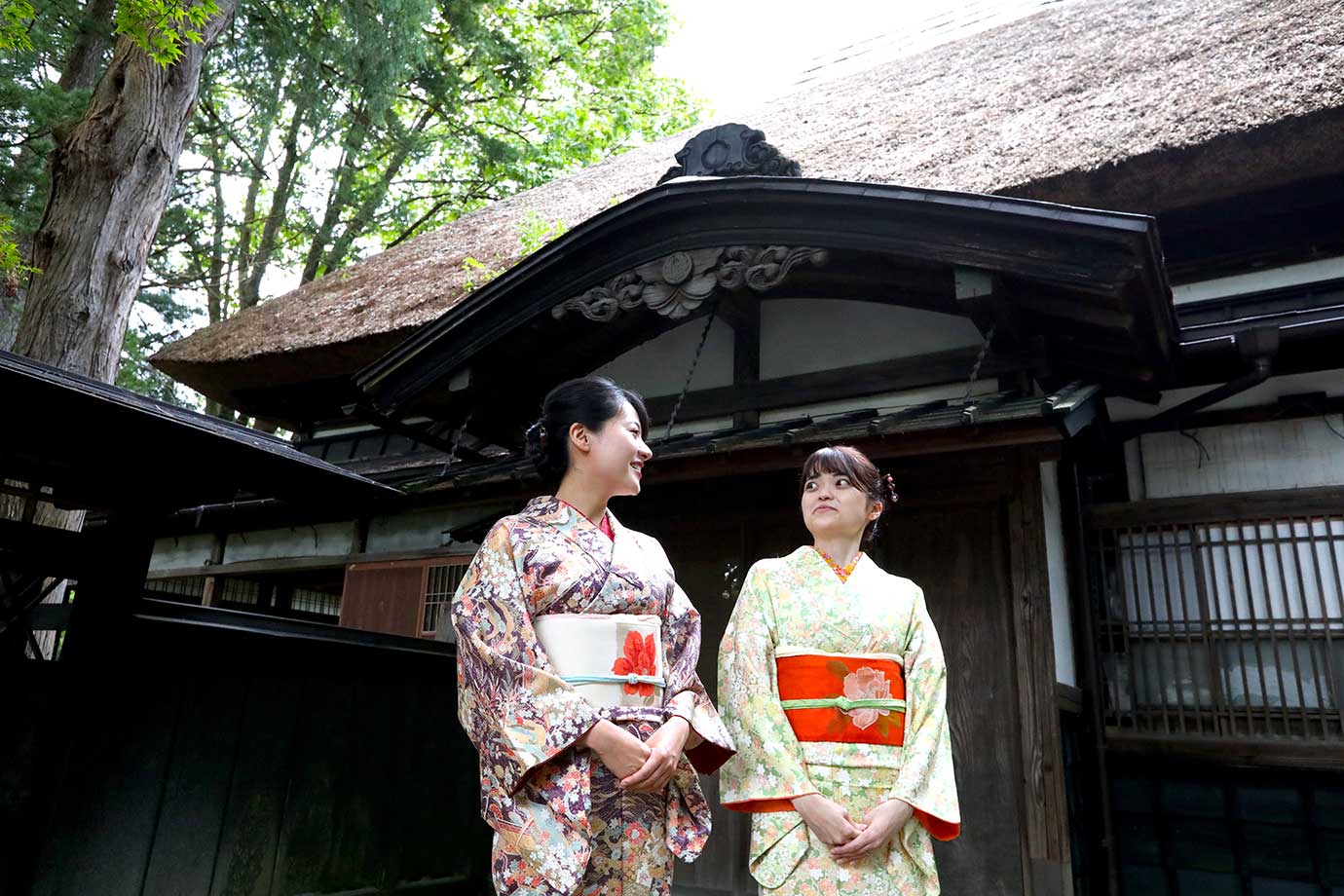
In the storehouse adjacent to the main house, samurai armor and daily utensils that have been handed down from generation to generation are on display. There are also materials on Odano Naotake, a native of Kakunodate. The first edition copy of “Kaitai Shinsho” is a must-see.
Ishiguro Family Samurai Residence
Address:1 Omotemachi Shimocho, Kakunodate-machi, Semboku City, Akita Prefecture
Phone:0187-55-1496
Costs:500 yen admission
Hours:9:00-17:00 (9:00-16:00 from December to March)
Closed:Open every day
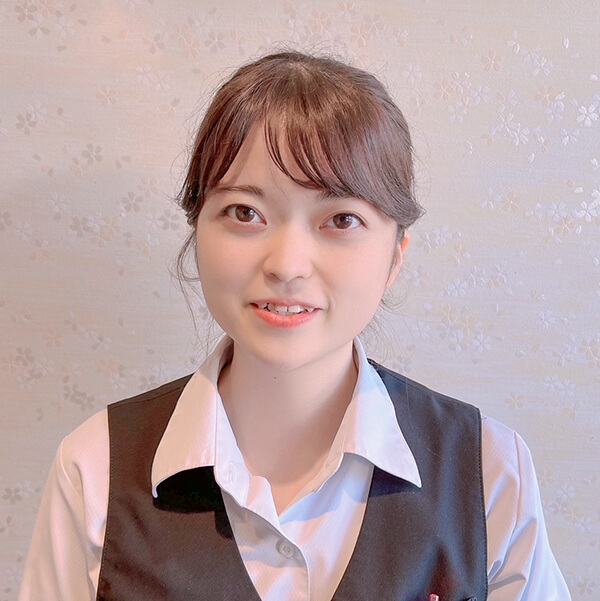
Hotel Folklolo Kakunodate
Restaurant Staff
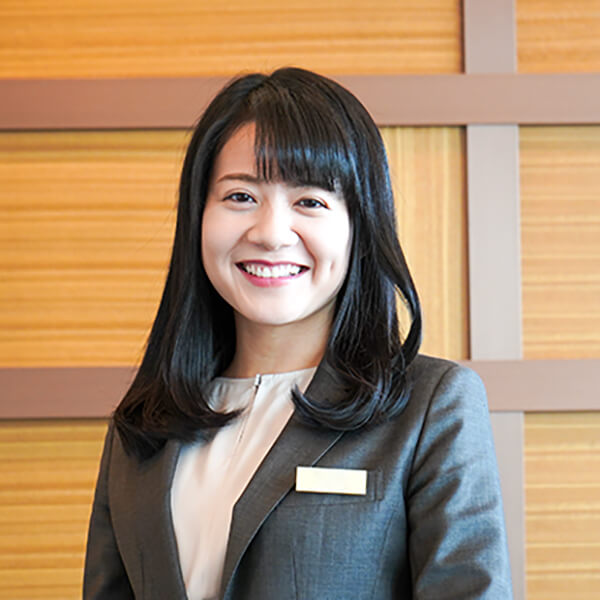
JR East Hotels
Staff
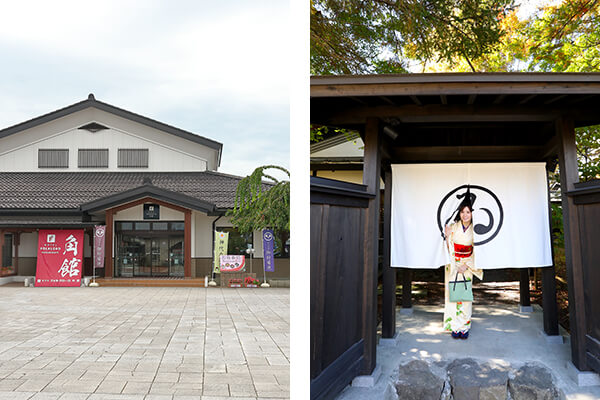
Hotel Folklolo Kakunodate/Wanoi Kakunodate
[Hotel Folklolo Kakunodate]
The hotel is located at the entrance of Kakunodate, the “little Kyoto of Michinoku”, with its splendid streets of samurai residences.
⚫︎Hotel Folklolo Kakunodate
[Wanoi Kakunodate]
Experience true richness by getting in touch with Japanese culture from the good old days, and escape your everyday routine. Create new value for the community by connecting a townscape and lifestyle with a living history to the future. The hotel is a residential type hotel that has revitalized historic buildings, including a Japanese-style house that is over 100 years old, and infused them with new life.
⚫︎Wanoi Kakunodate
NotesOpenClose
*Information provided on this website is current as of September 2024. The featured facilities may change their fees, hours, days closed, menus, and other information after it has been published here, or they may be temporarily closed. Although every effort has been made to ensure the accuracy of the content on this website, including all times, fees, etc., we recommend that you contact the facility by phone or other means to get further information or make a reservation in advance. We will not be held liable for any damage in connection with the content of this website.
*All charges and fees shown on this website include consumption tax and were current at the time the information about them was collected. Facilities that offer dine-in and/or takeout services are so noted in the articles. Charges and fees are subject to change.
*Facility schedules do not reflect closures during the year-end/New Year holidays, Bon festival, and Golden Week as well as temporary closures unless specified by the respective facilities featured on this website.
*Operating hours shown on this website are generally the hours from opening to closing unless otherwise specifically noted. Last orders and entries are usually accepted 30 minutes to 1 hour before closing.
SHARE

